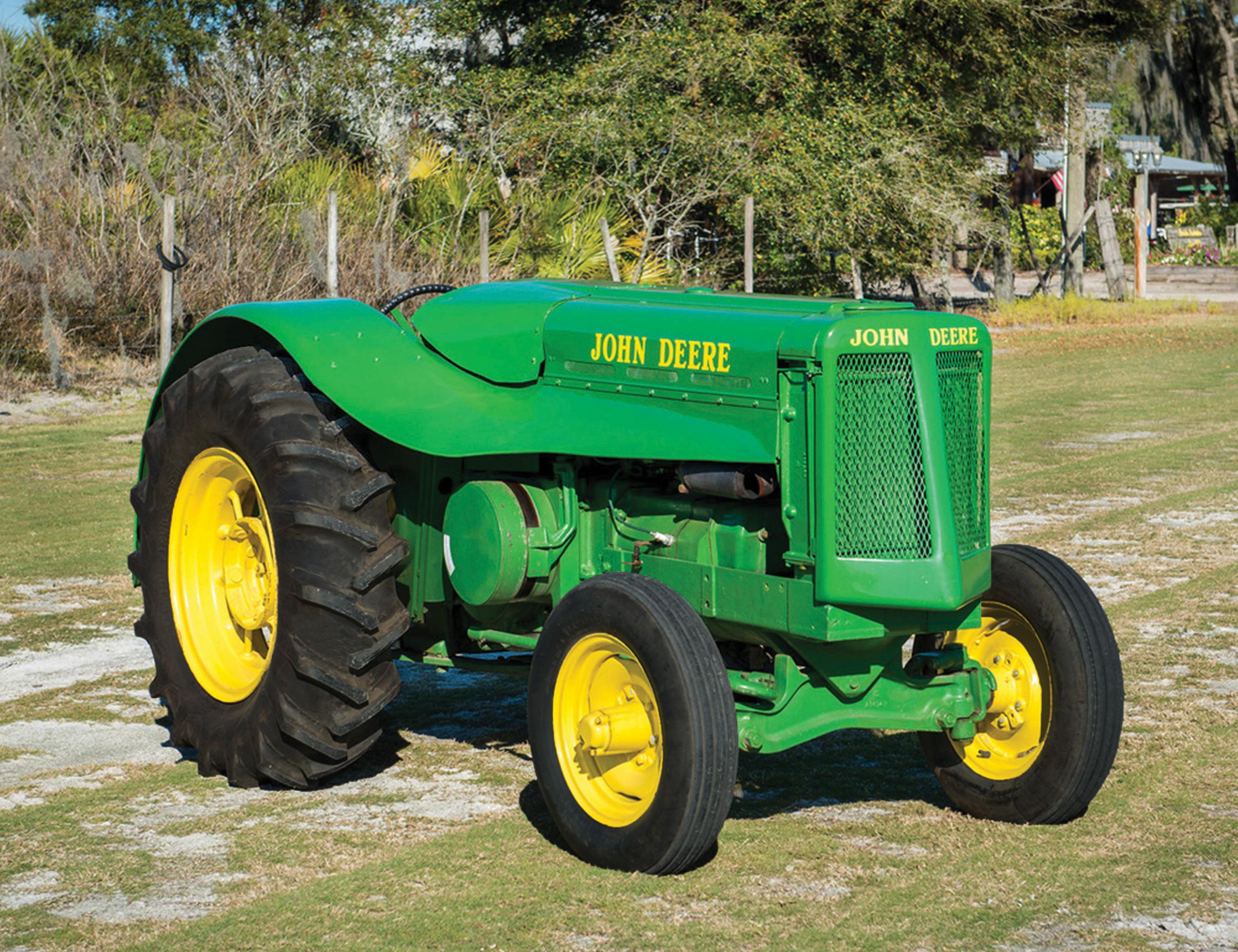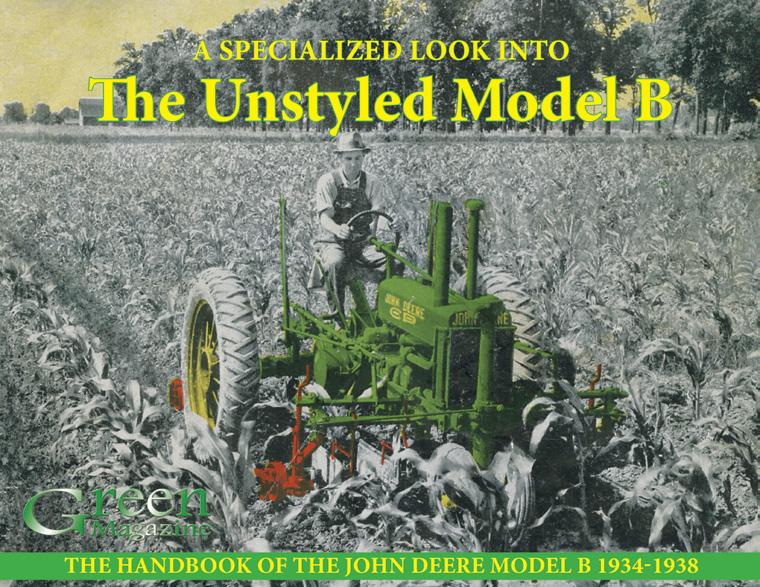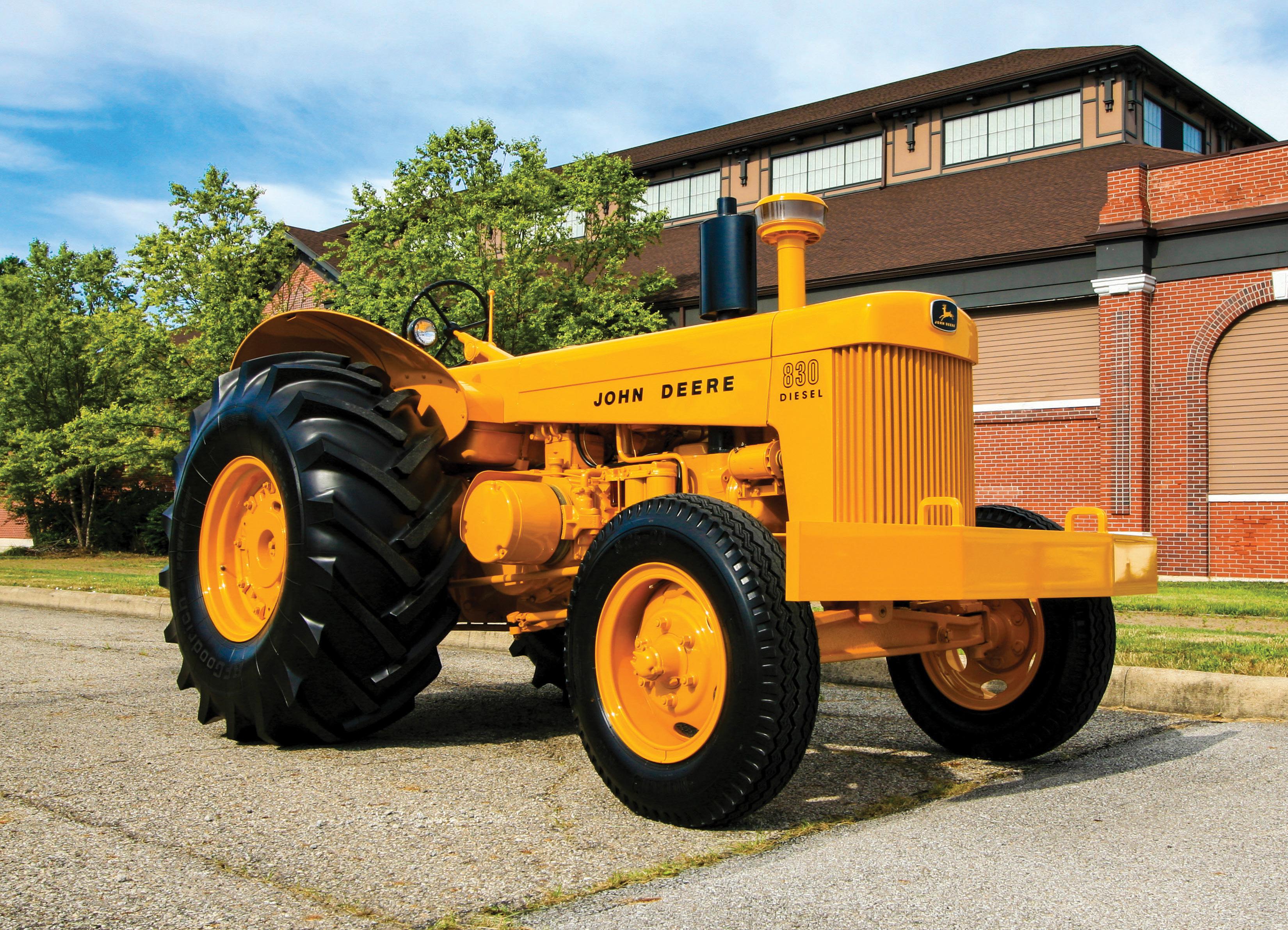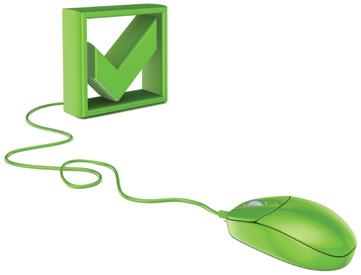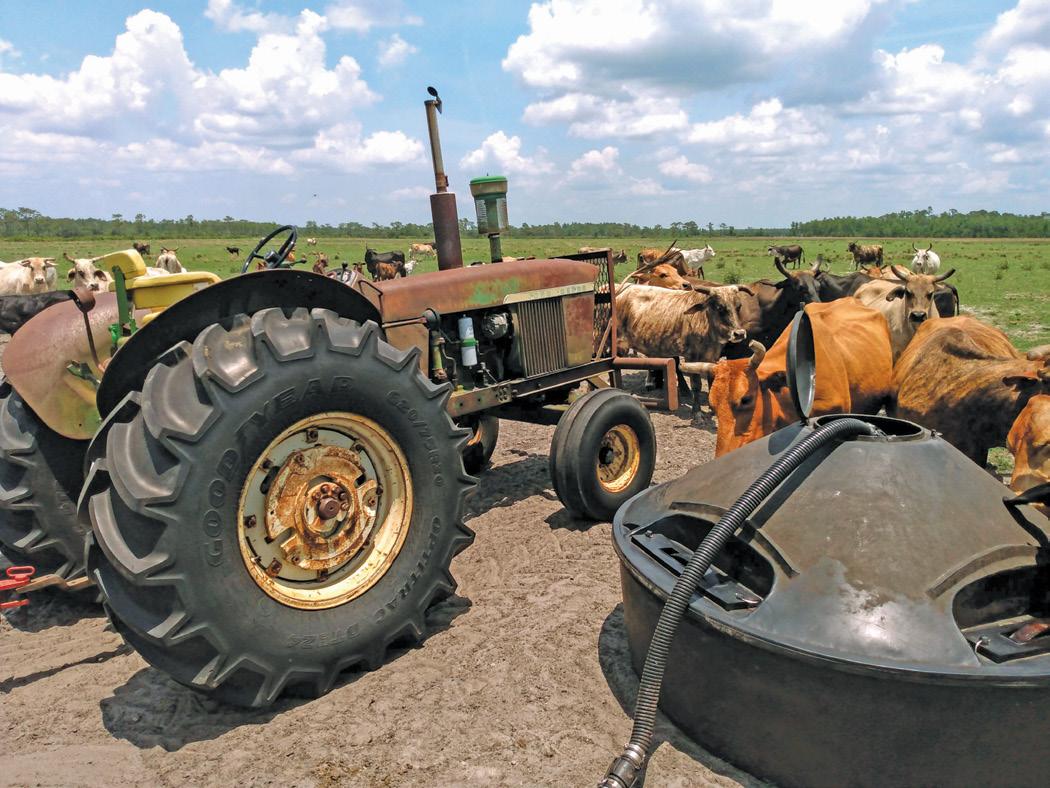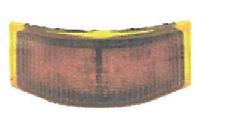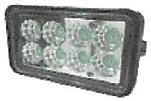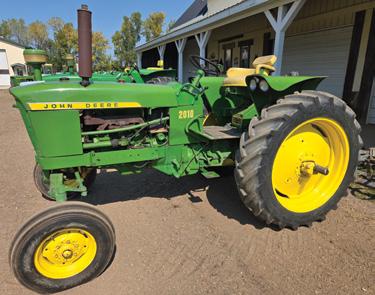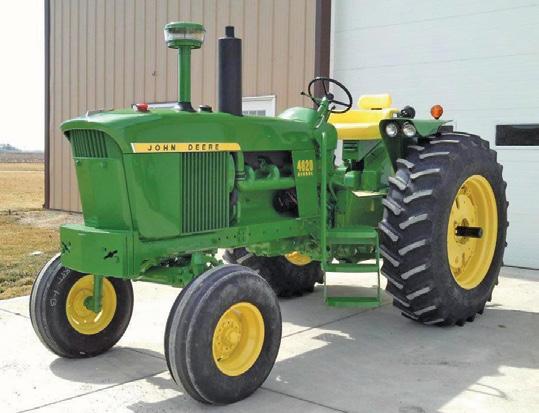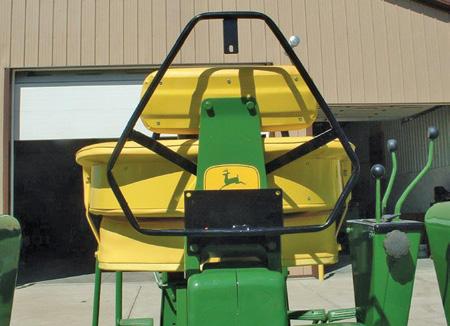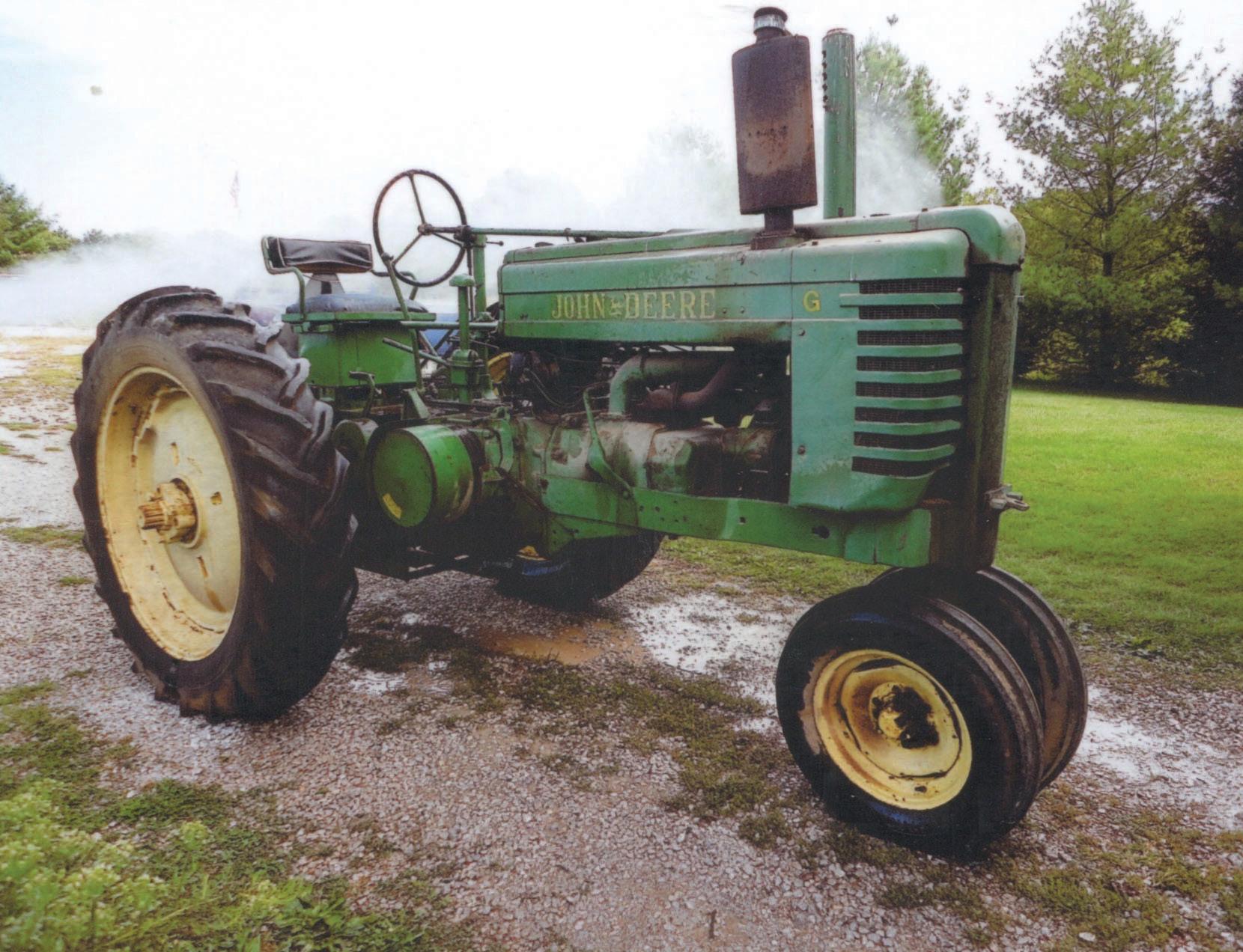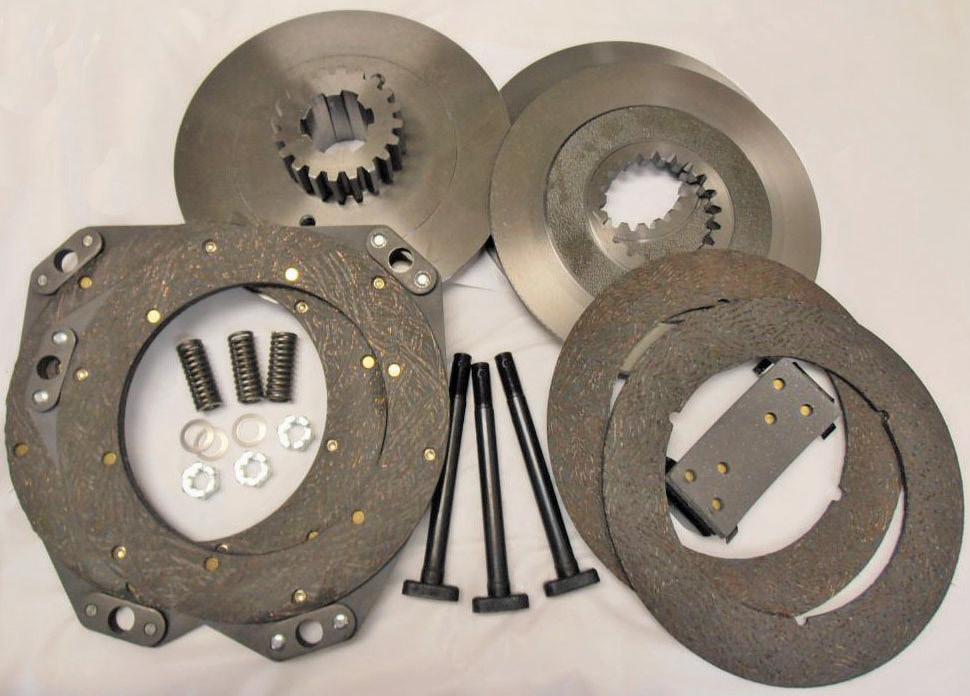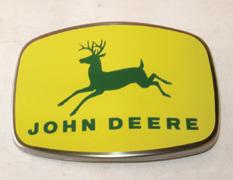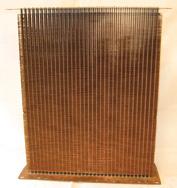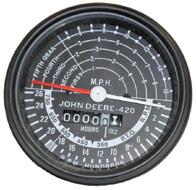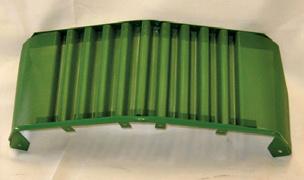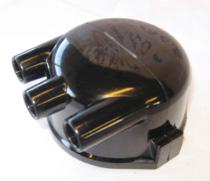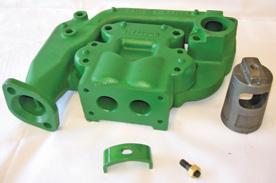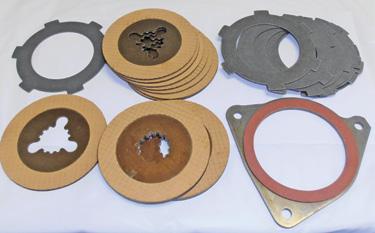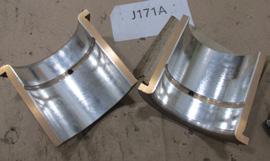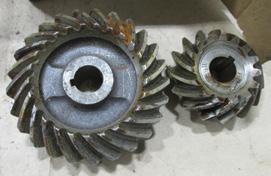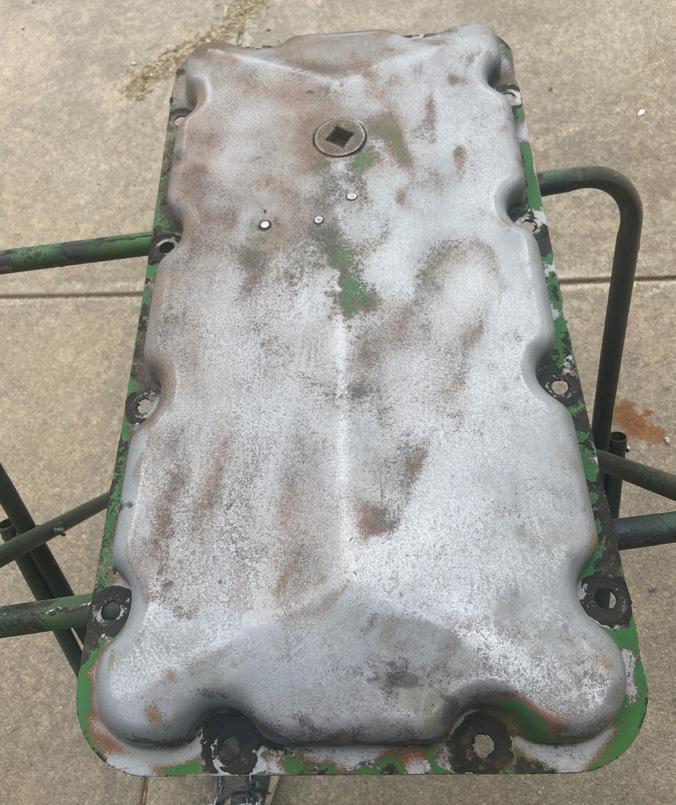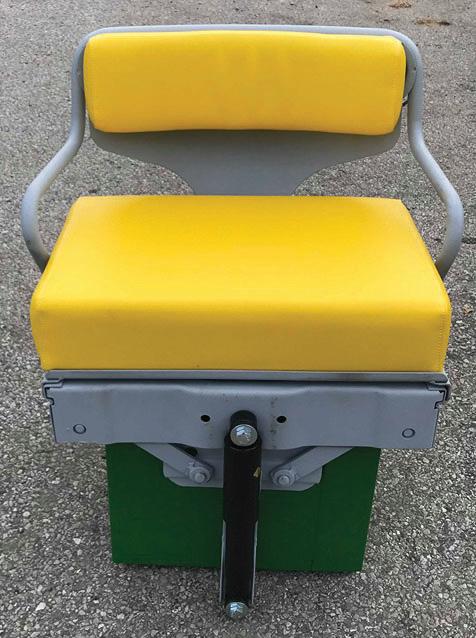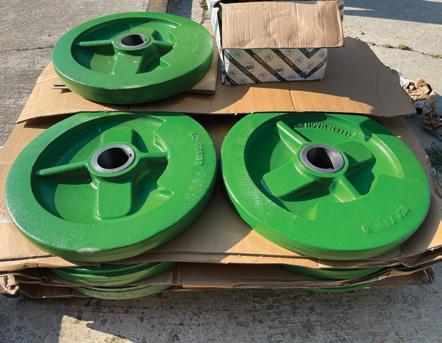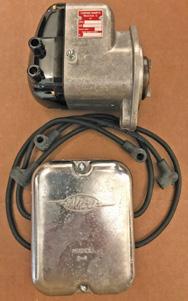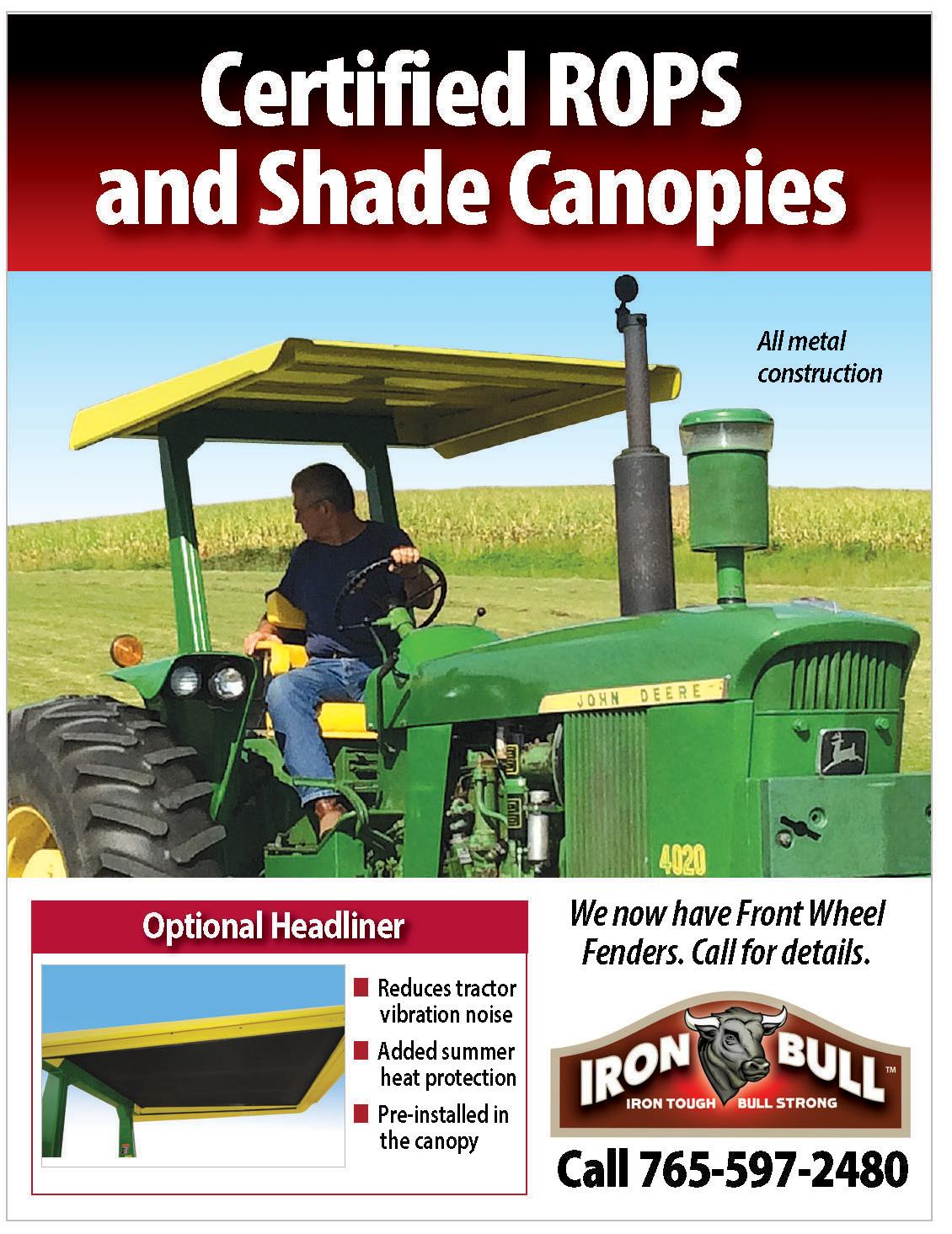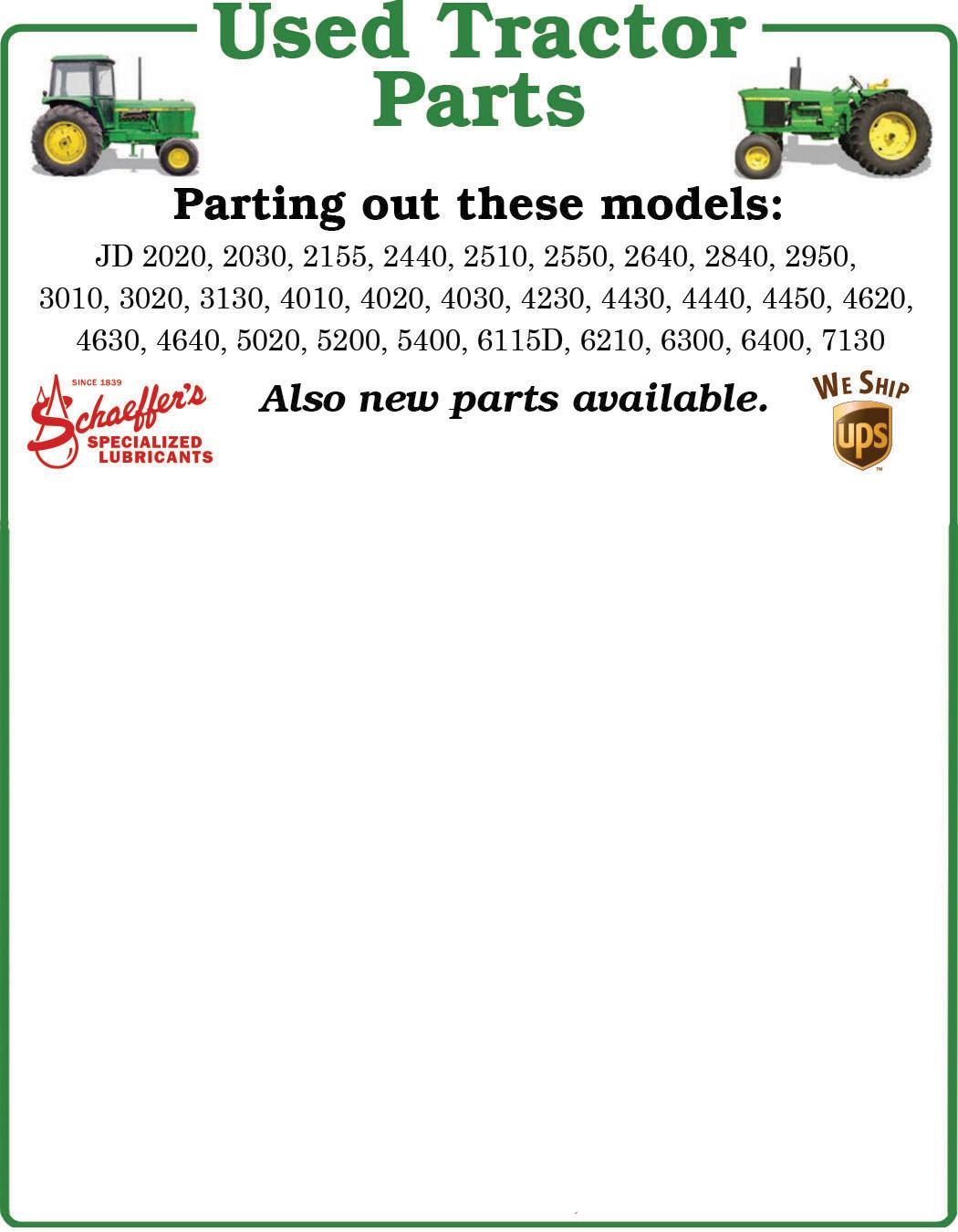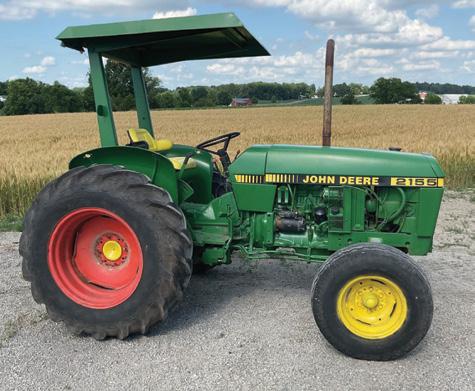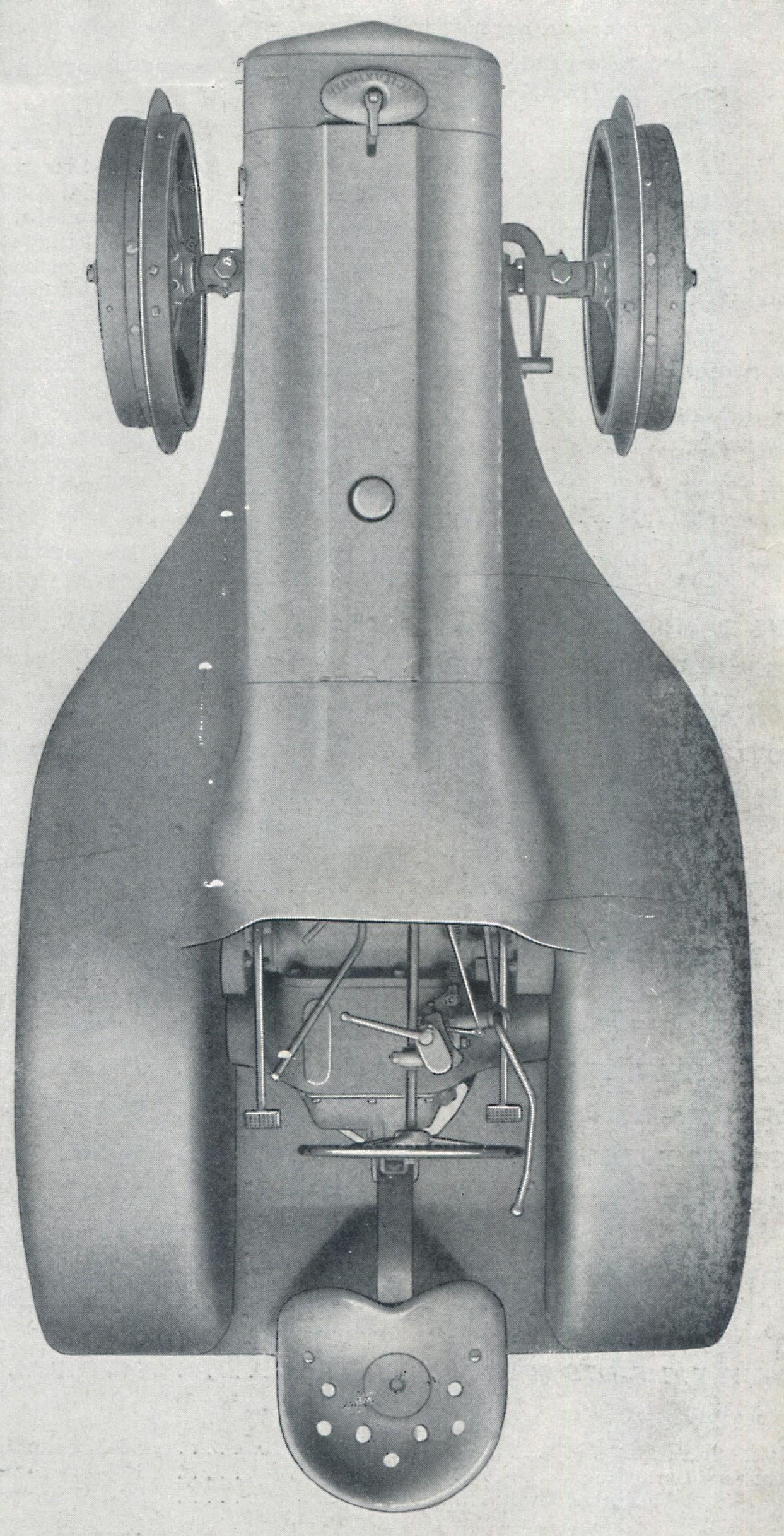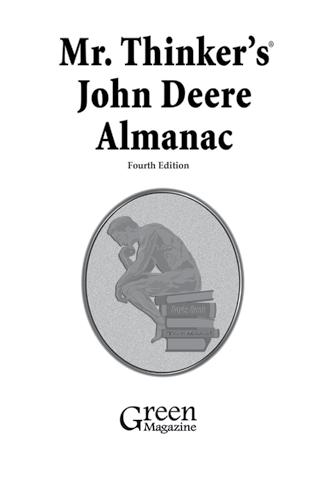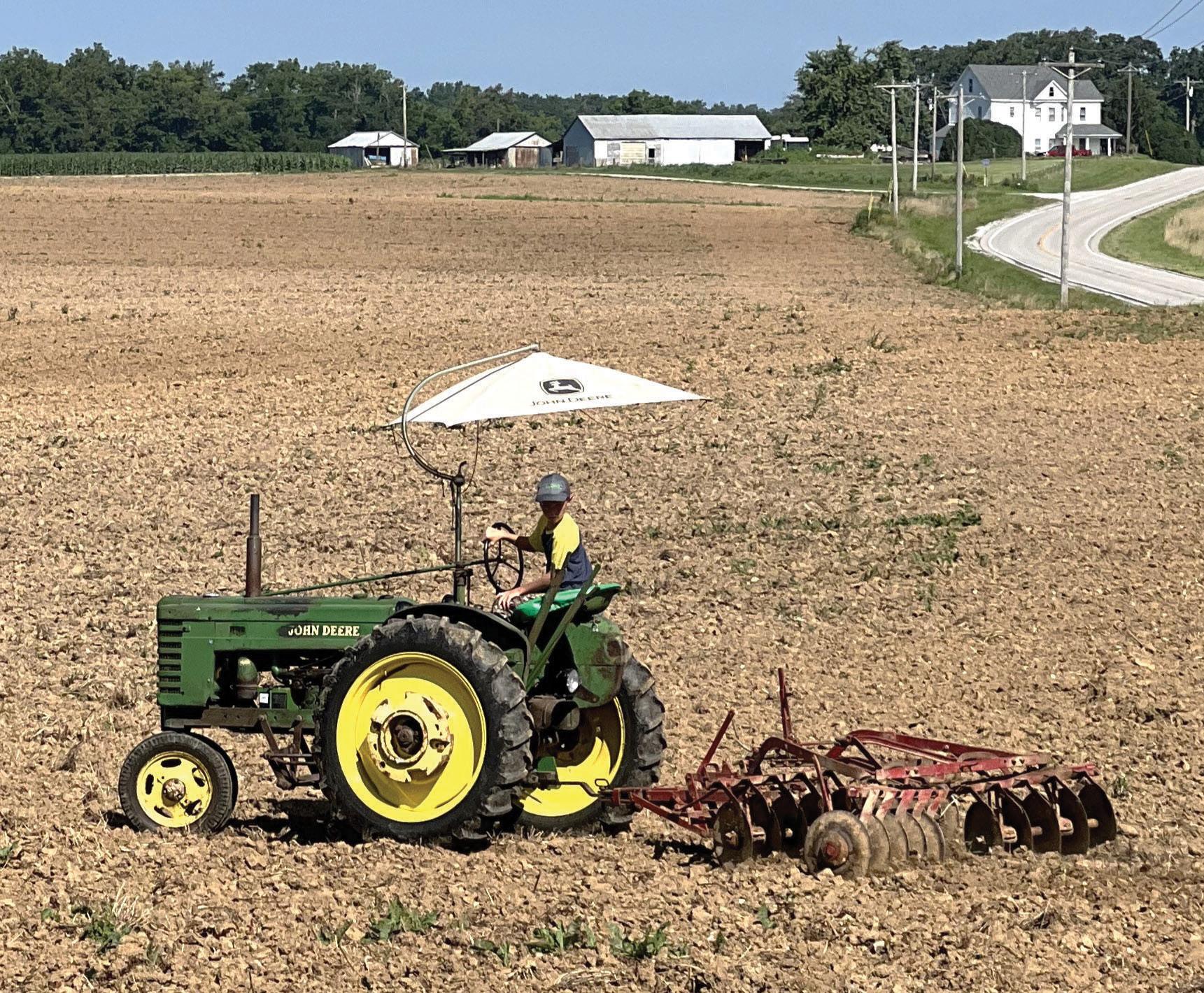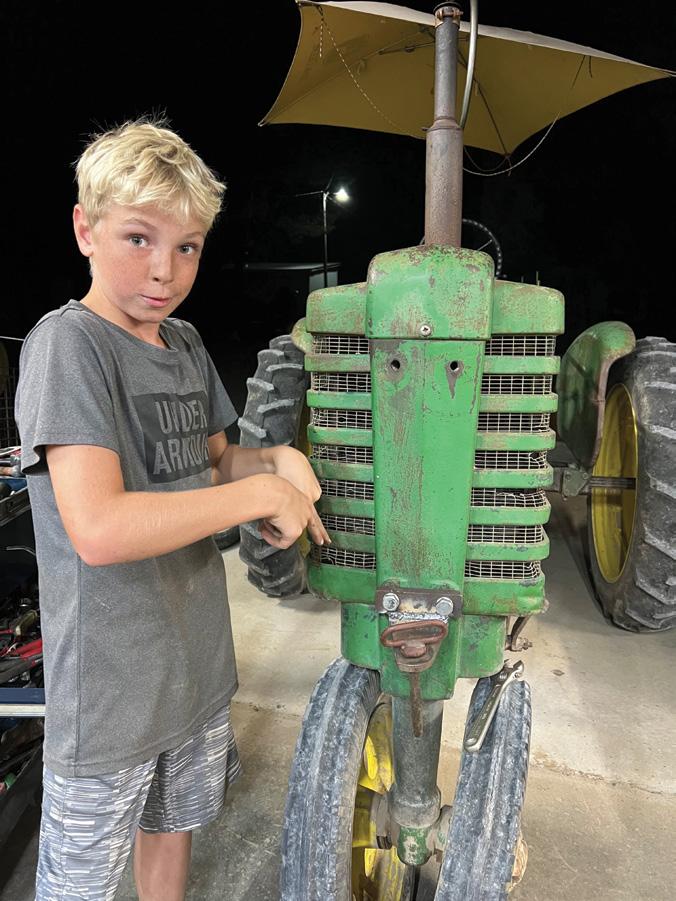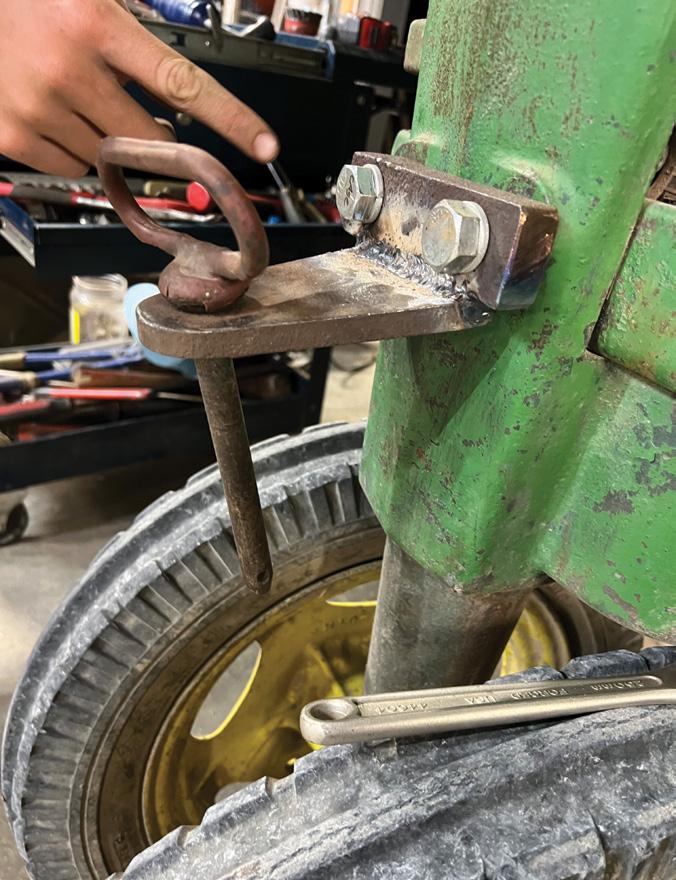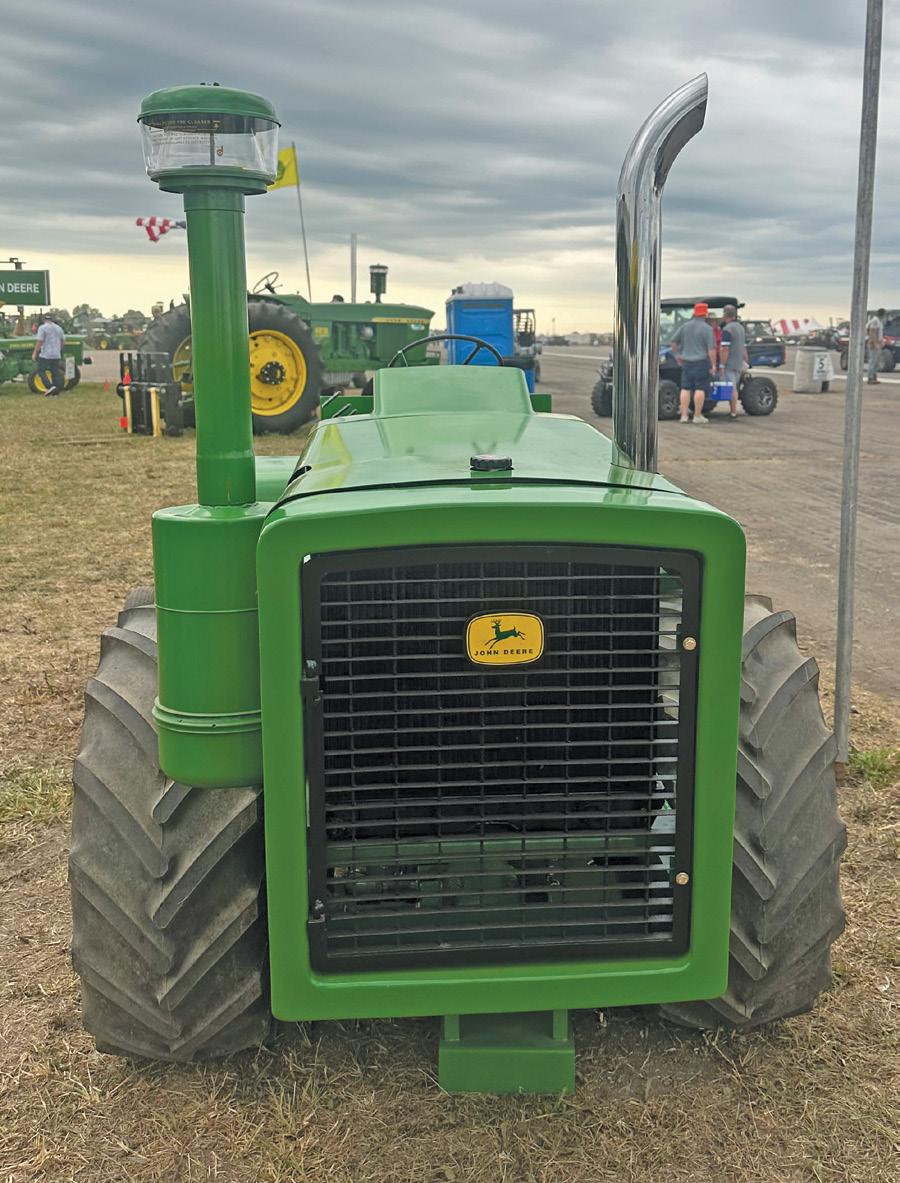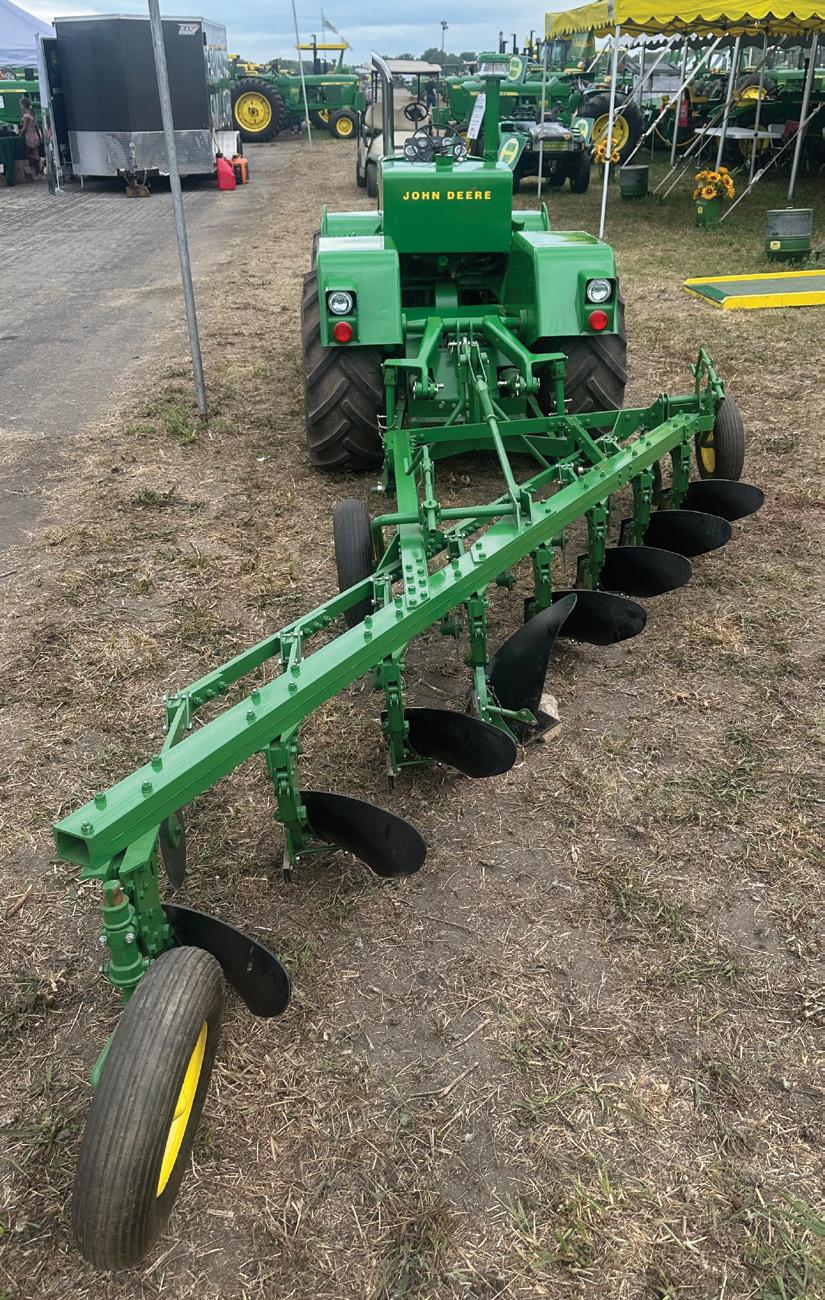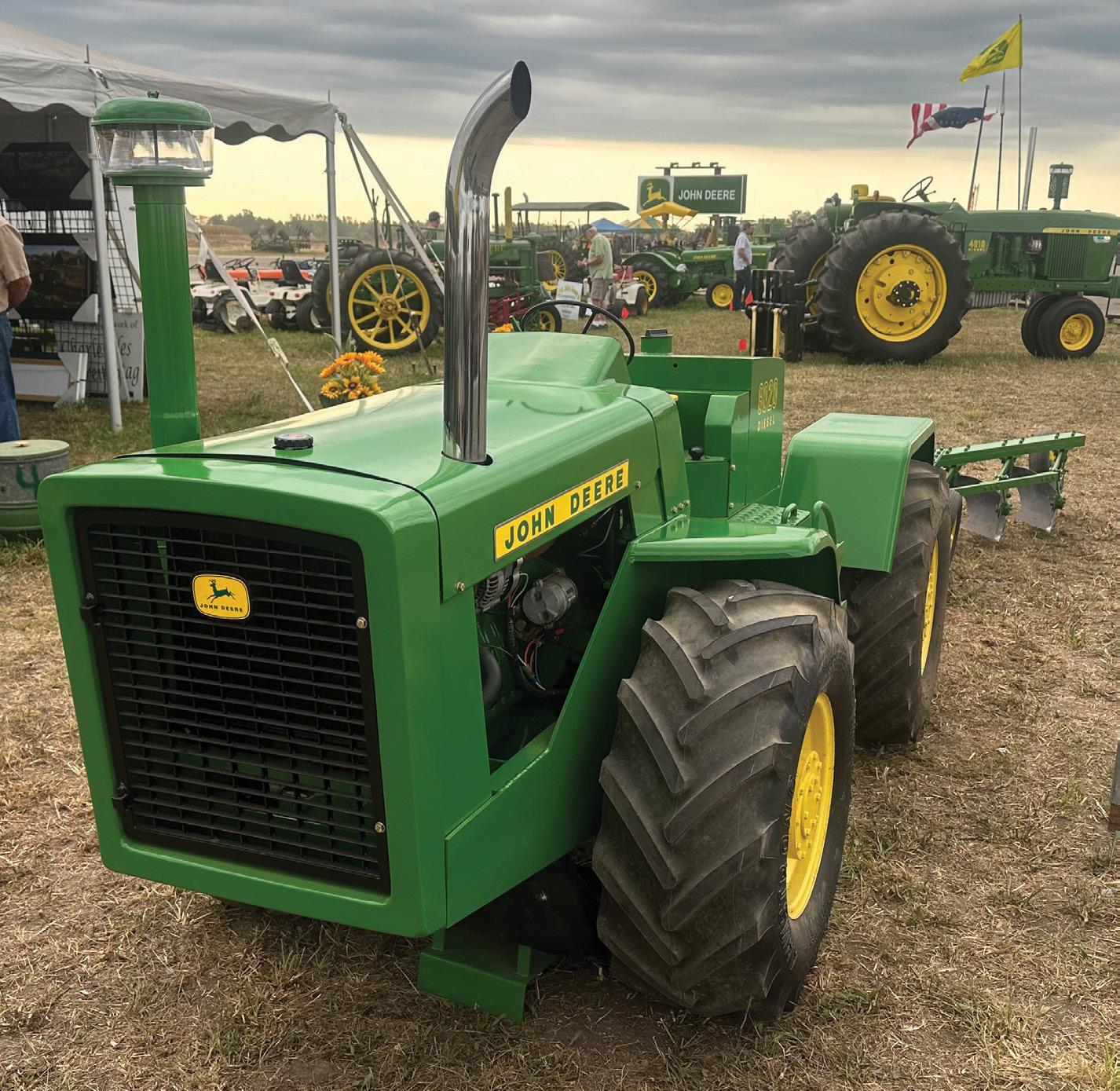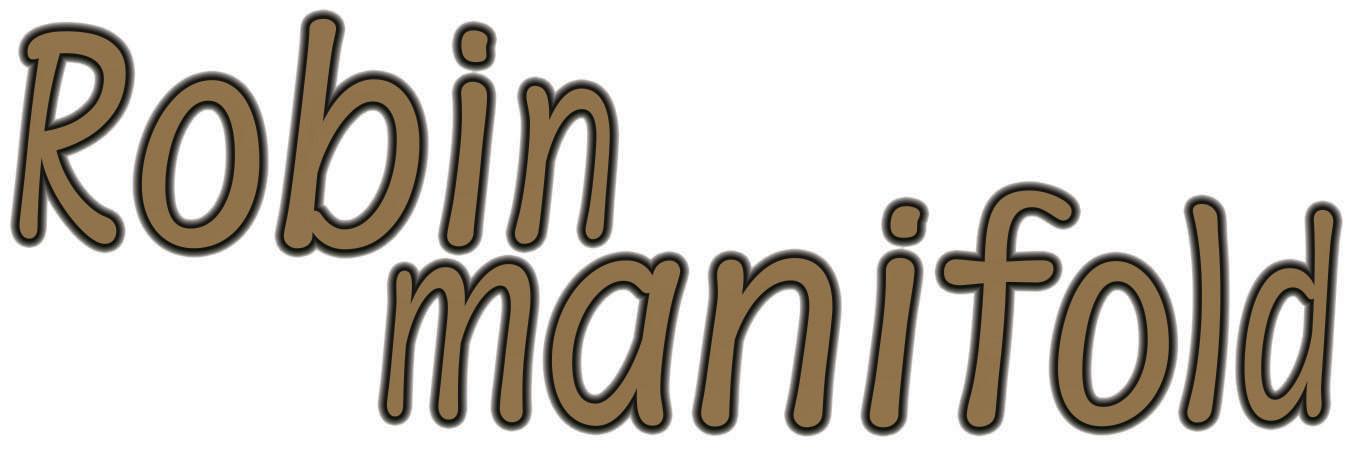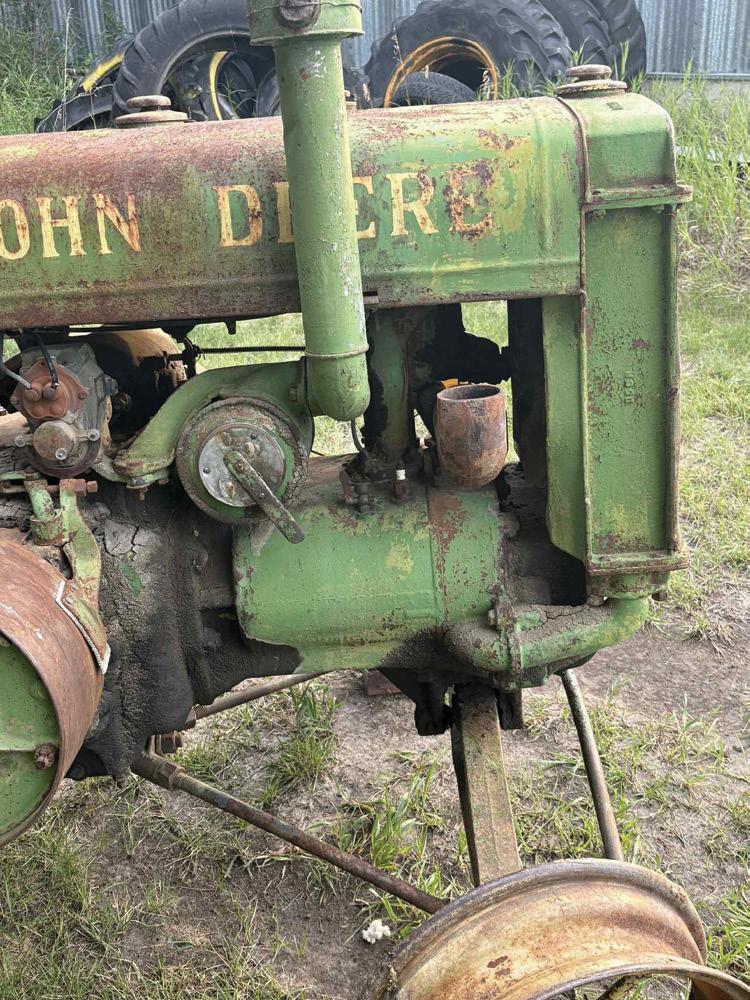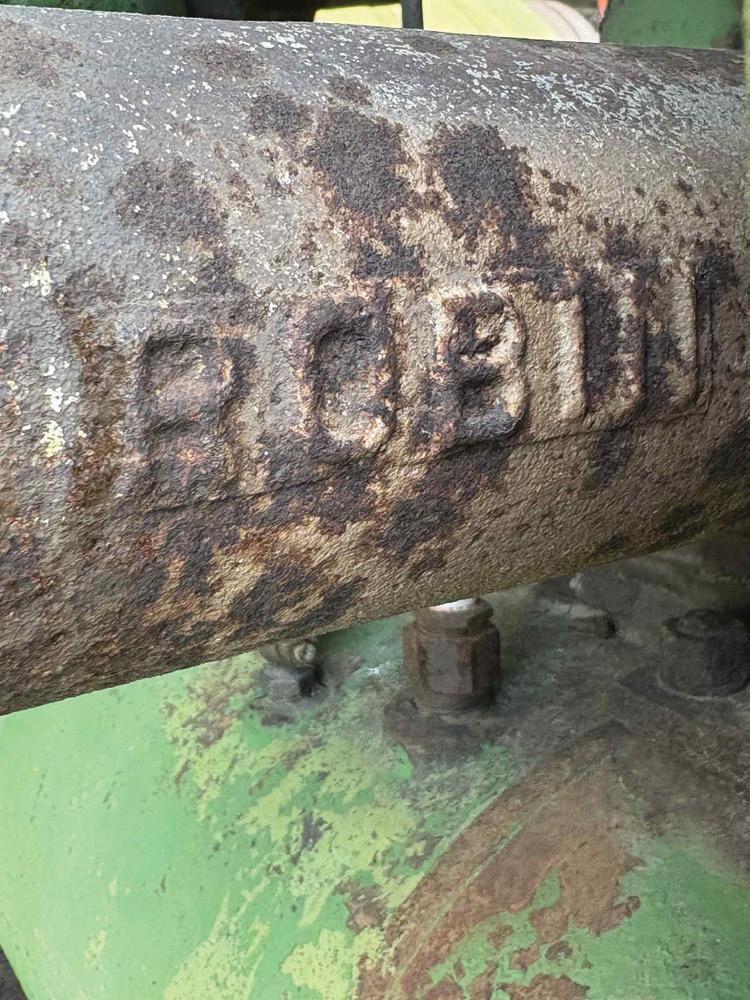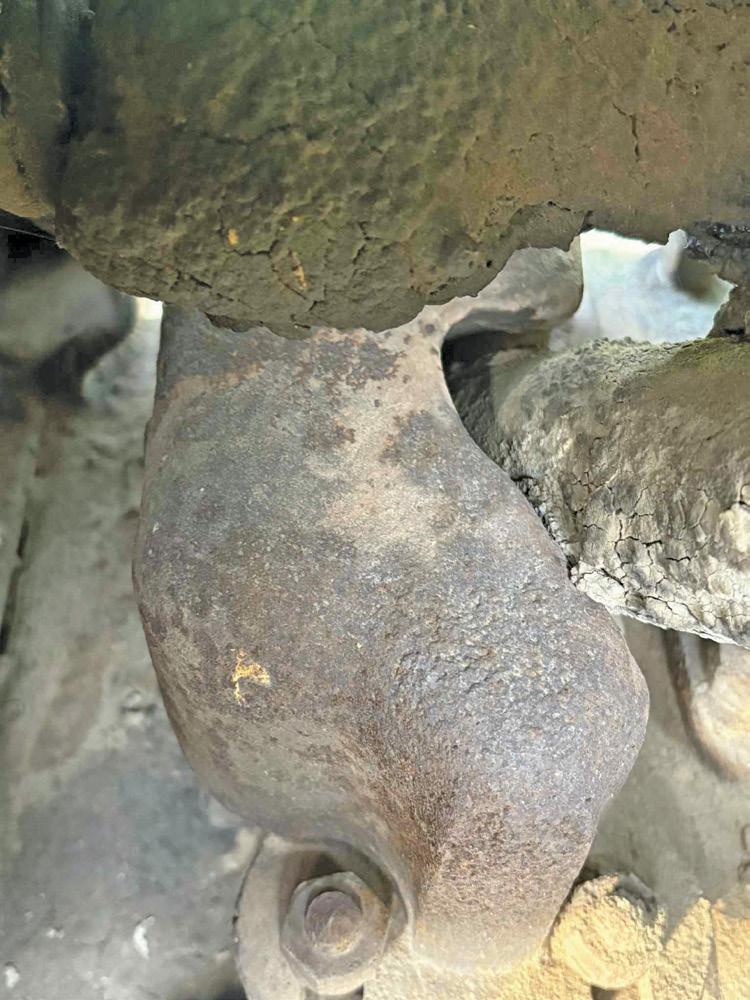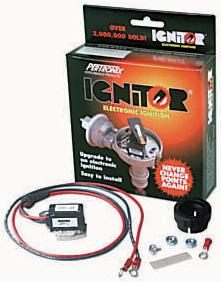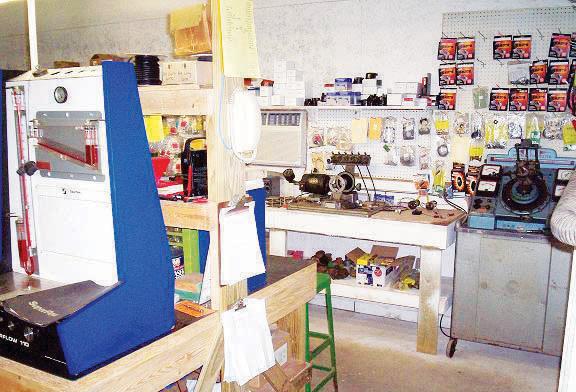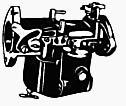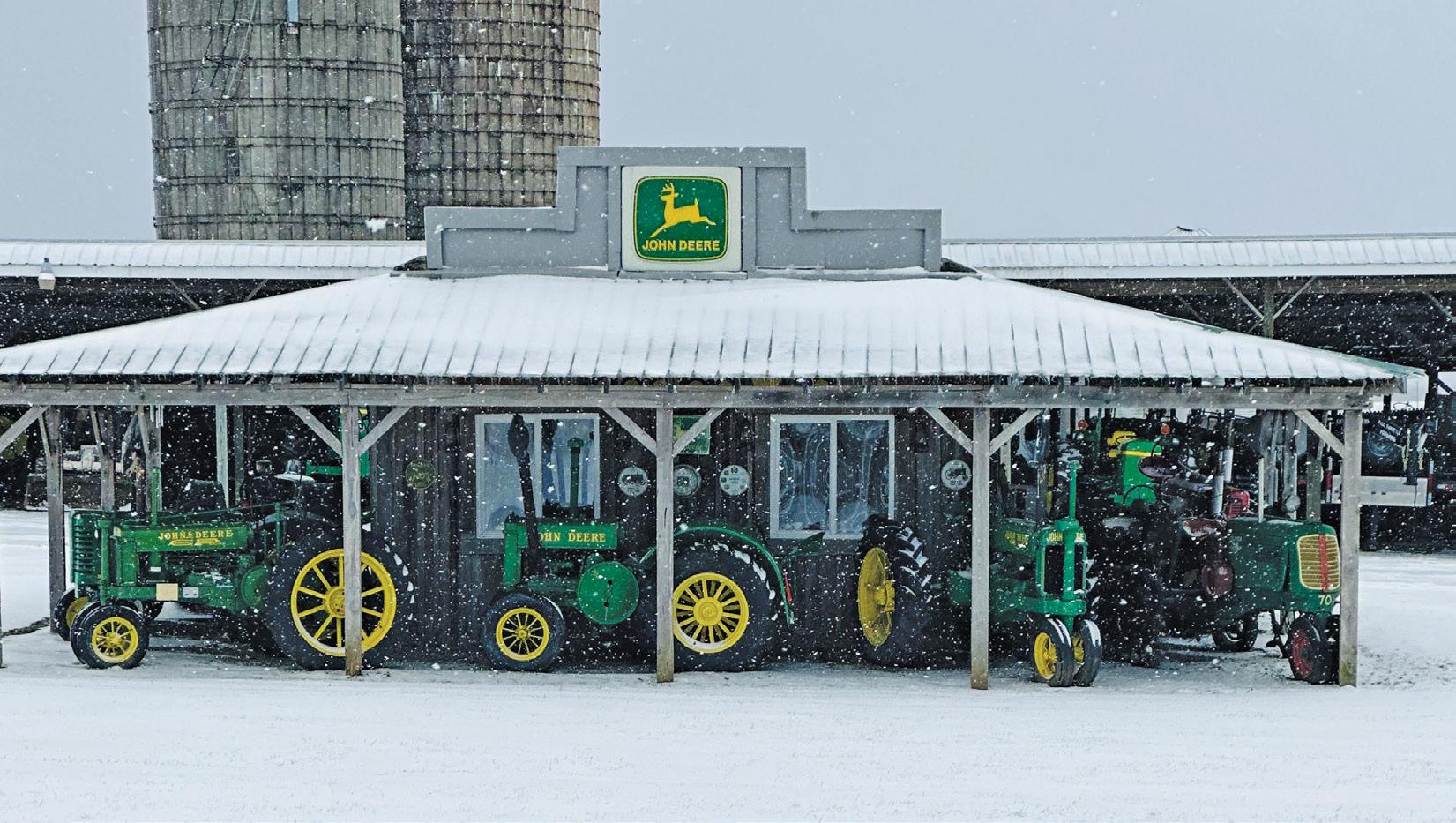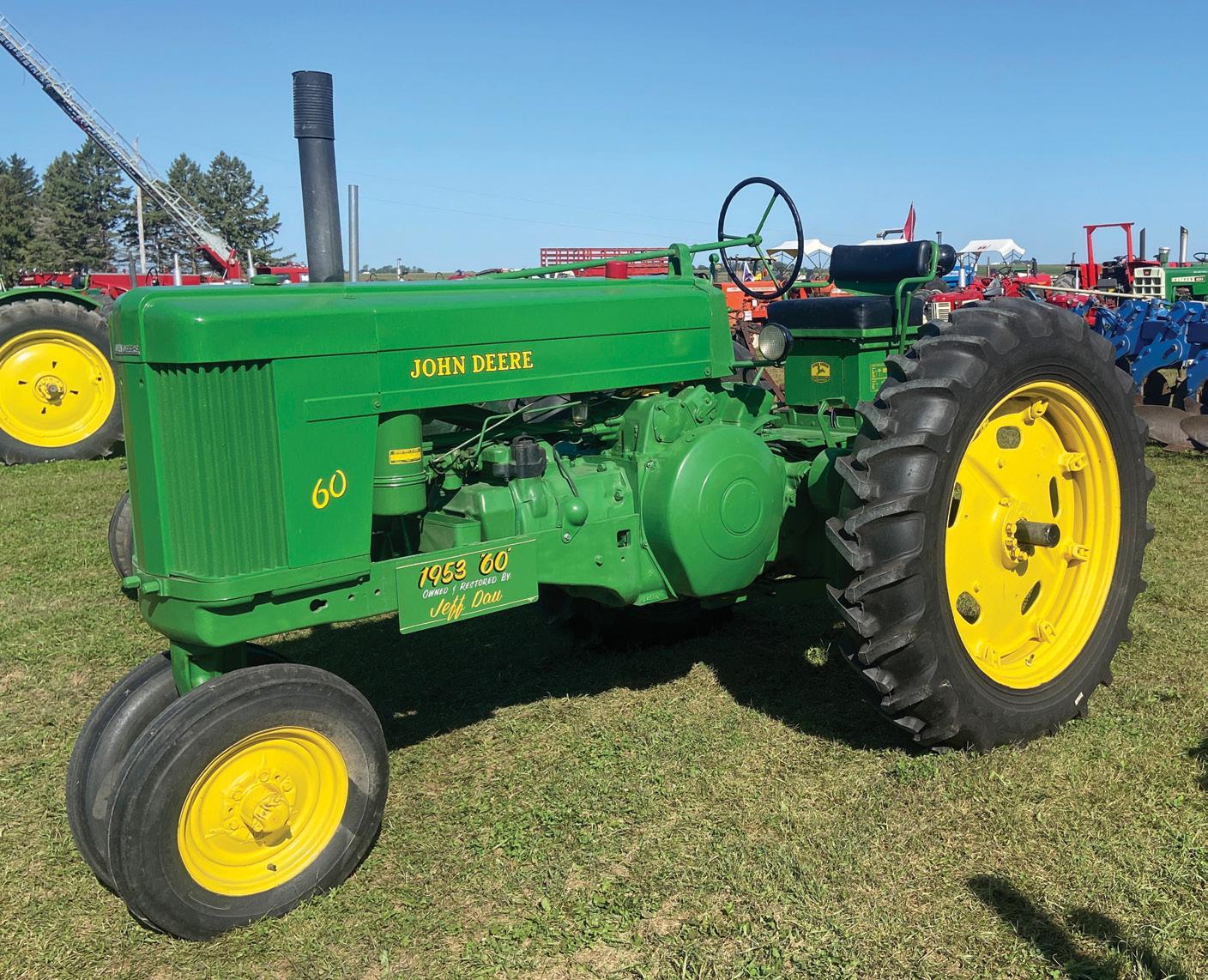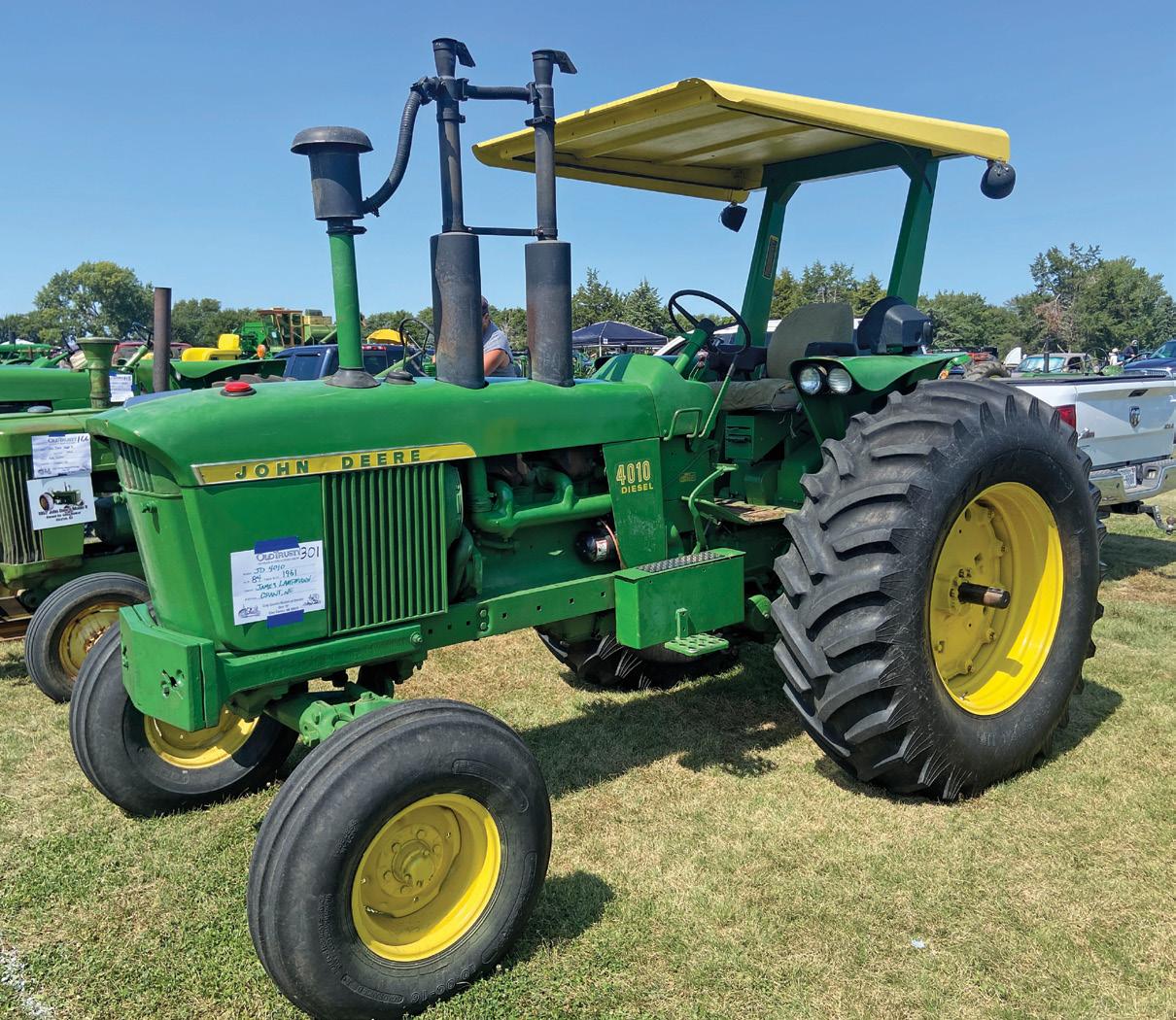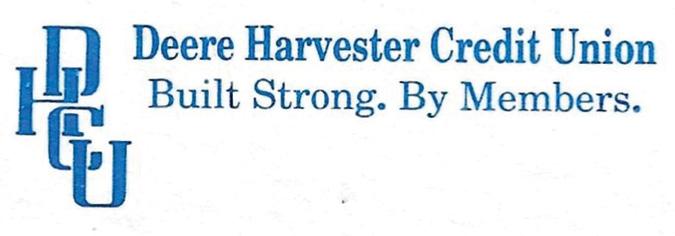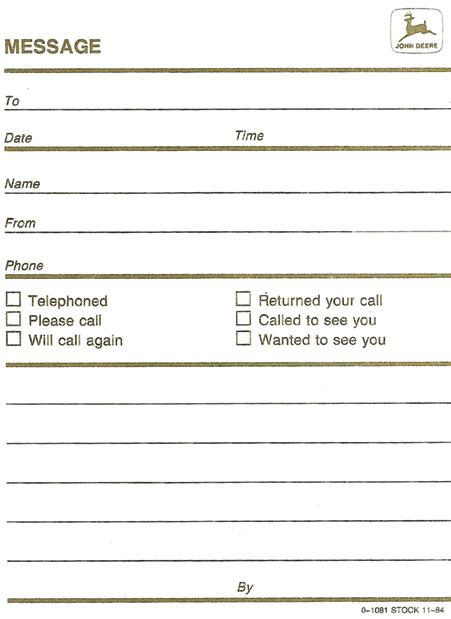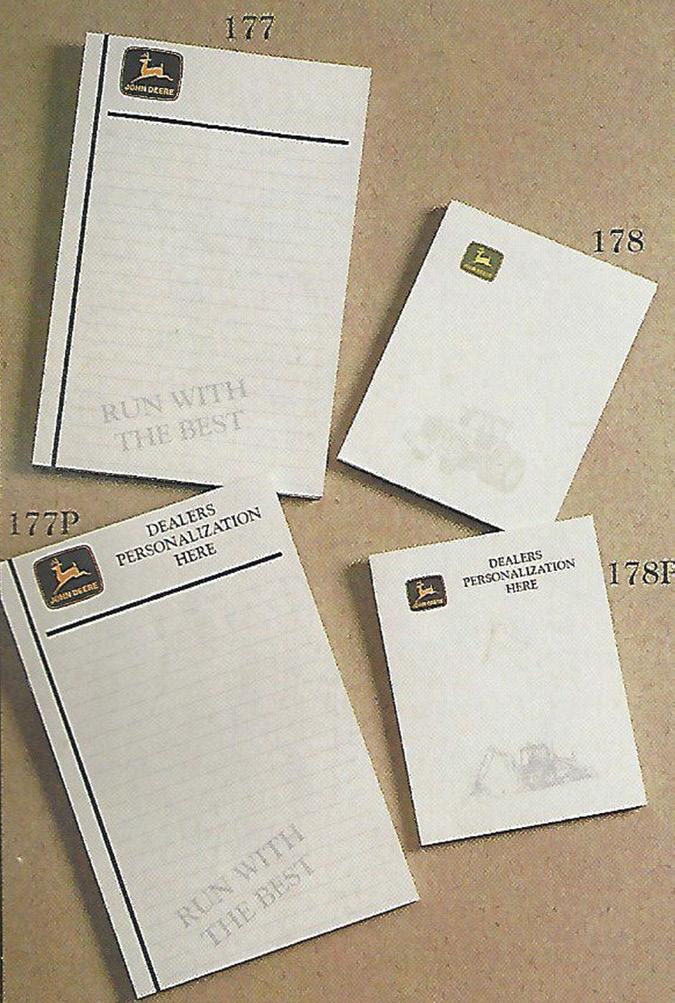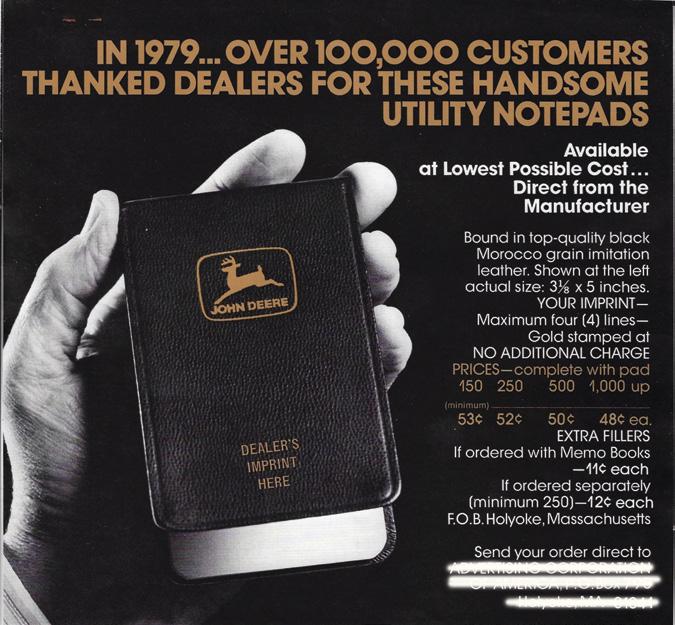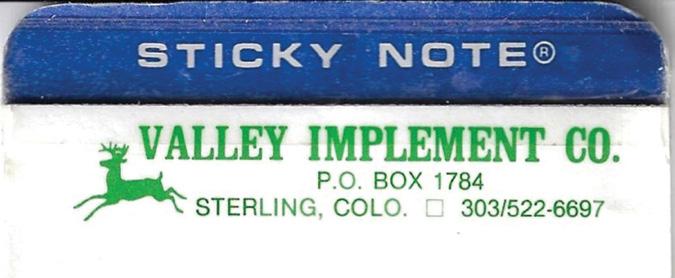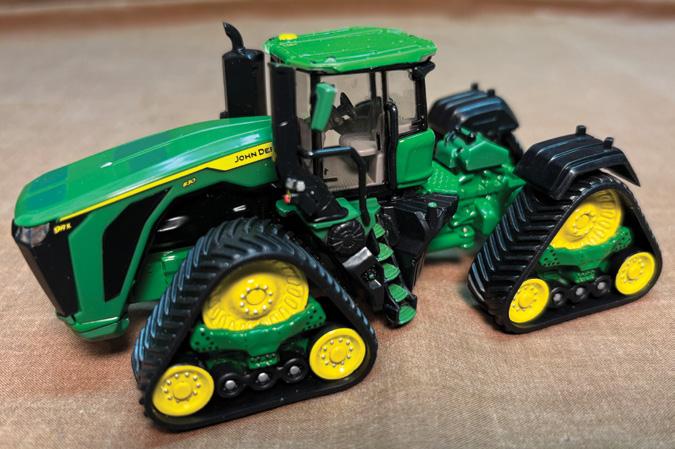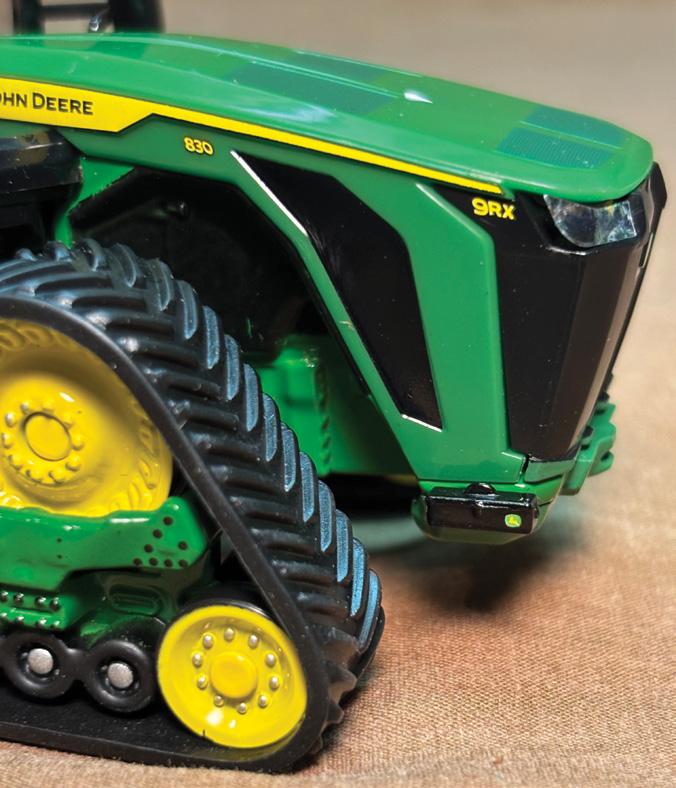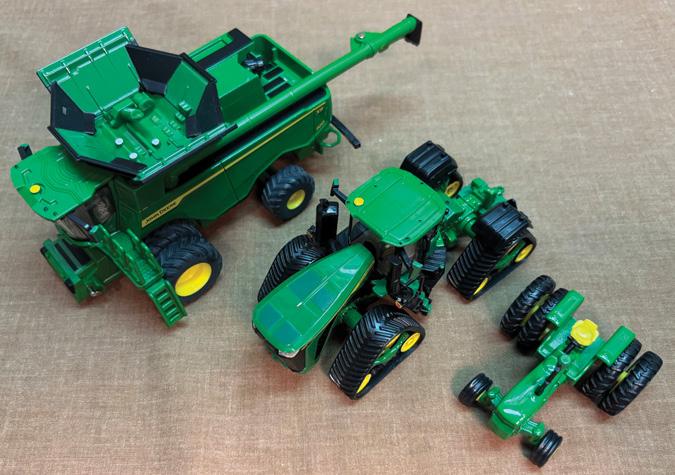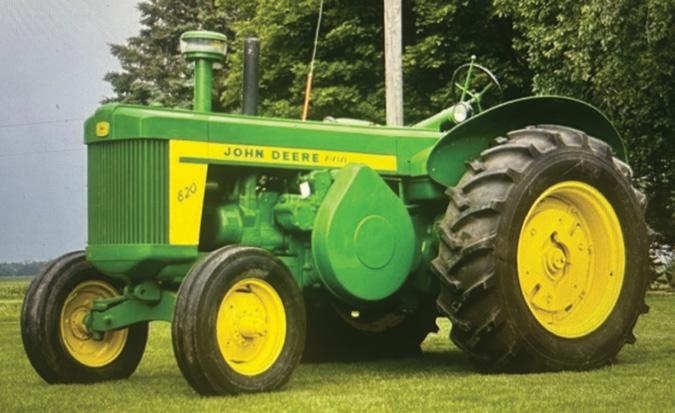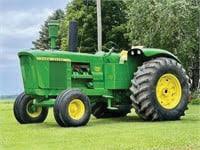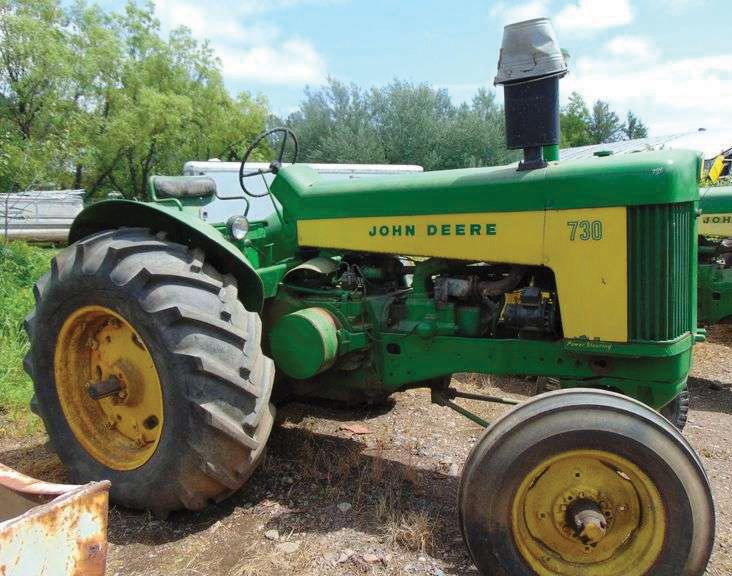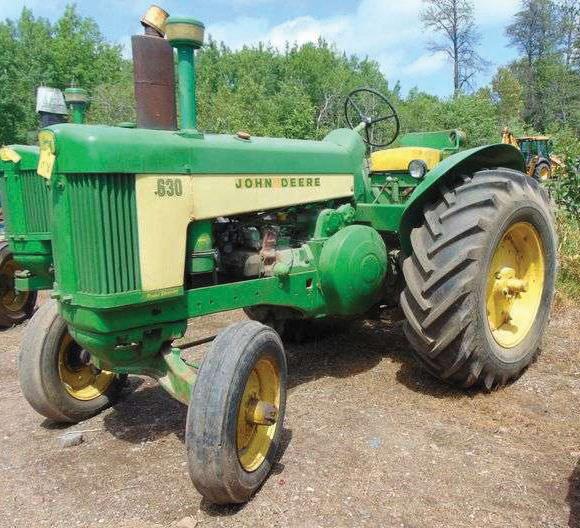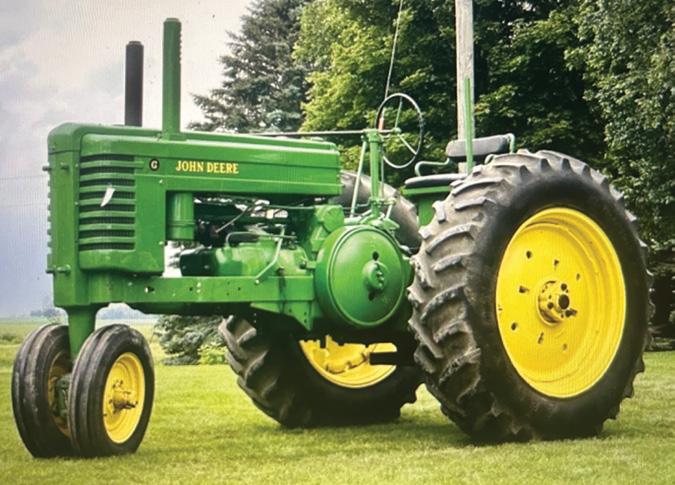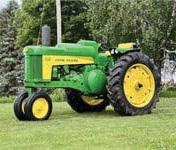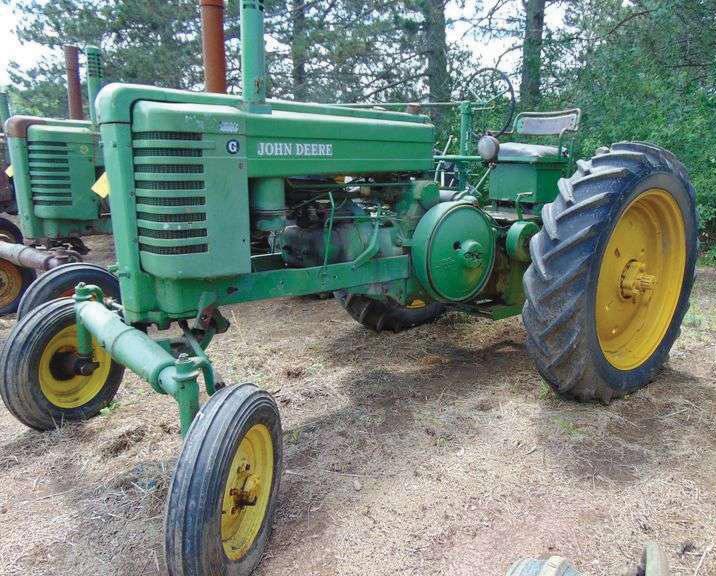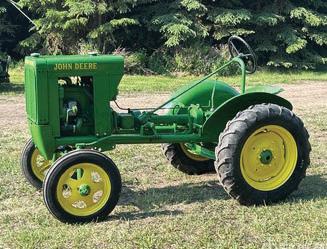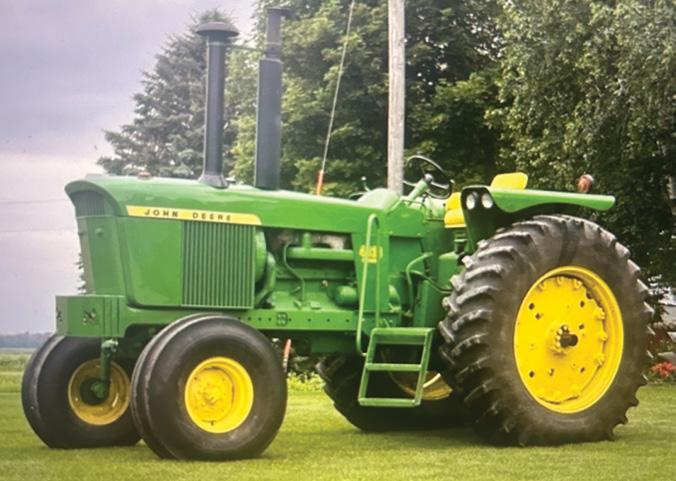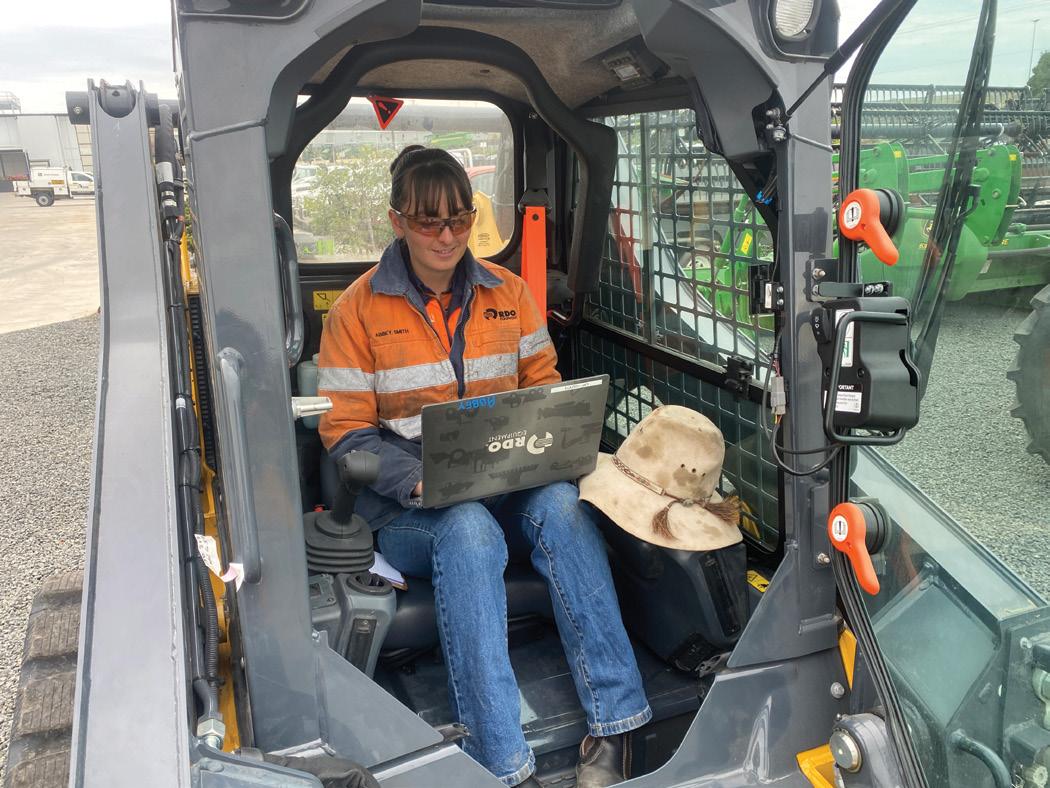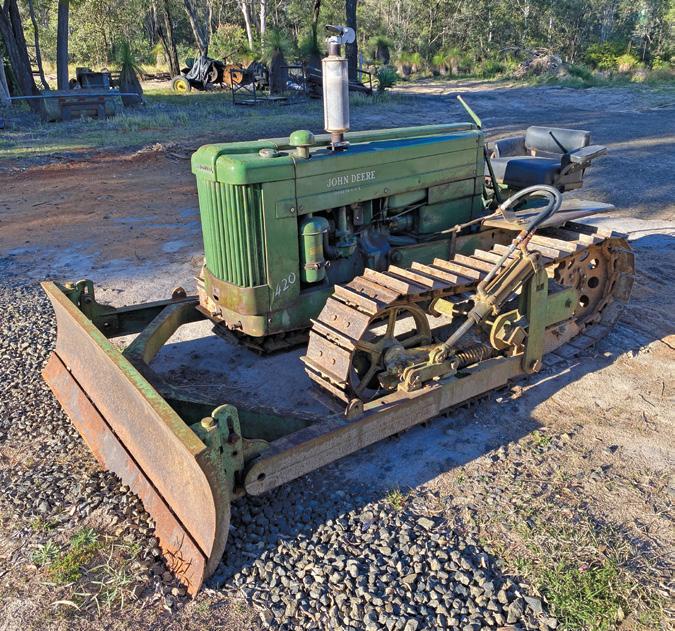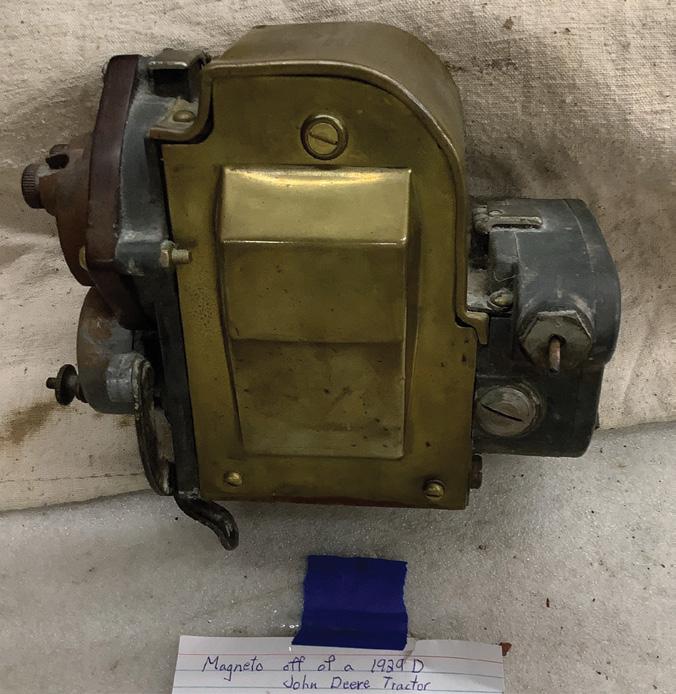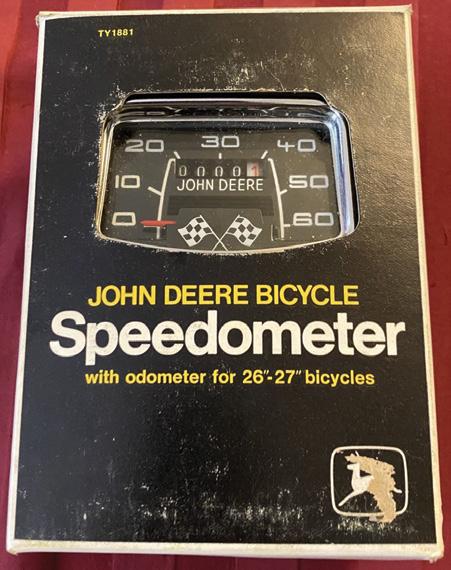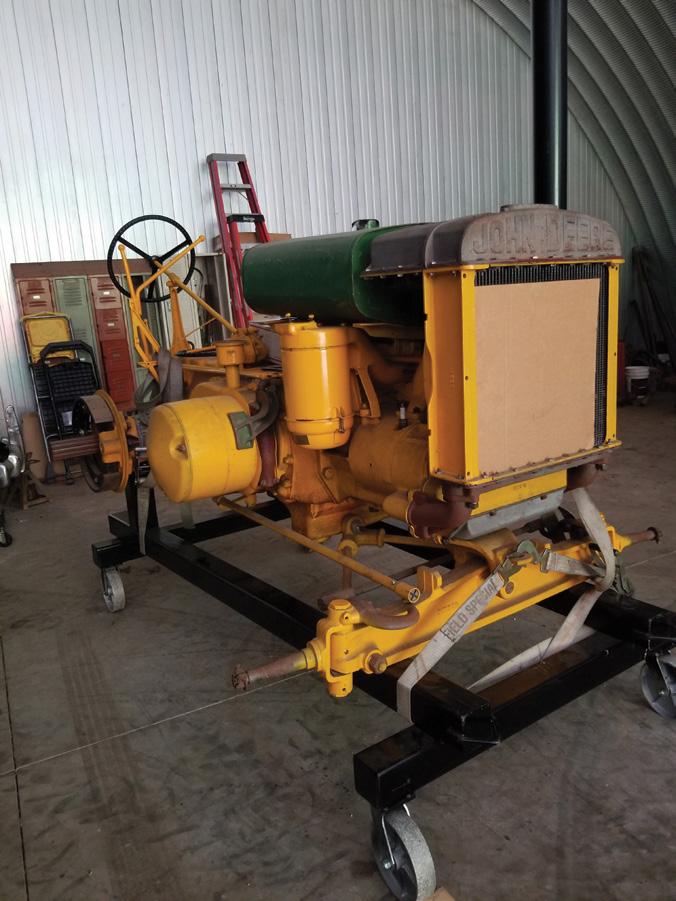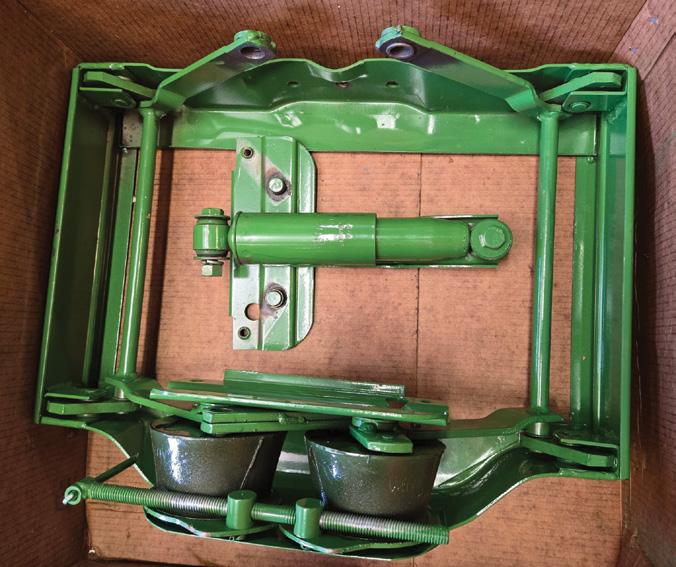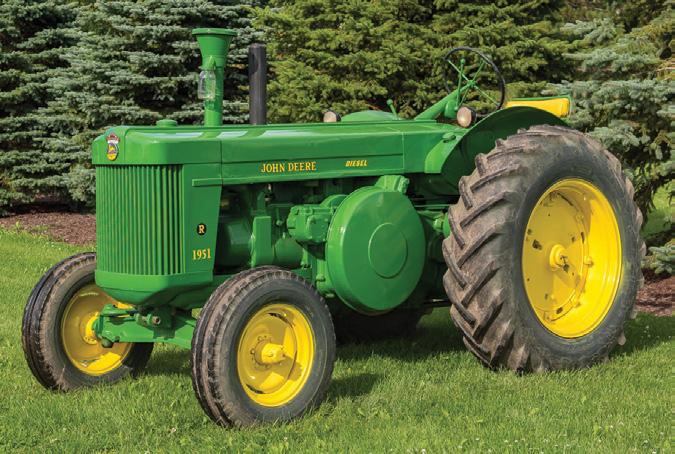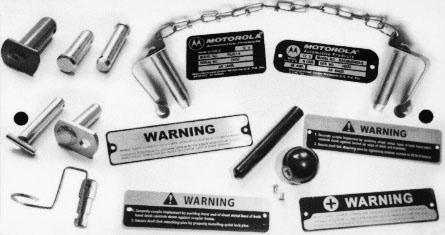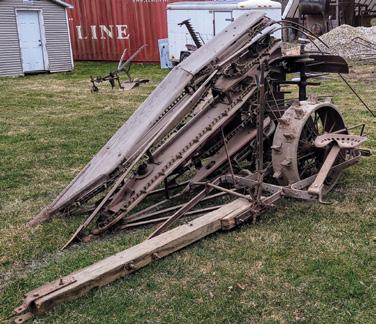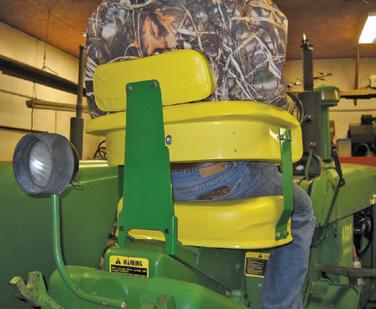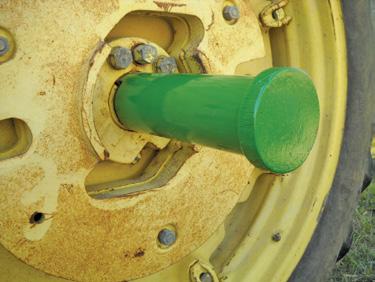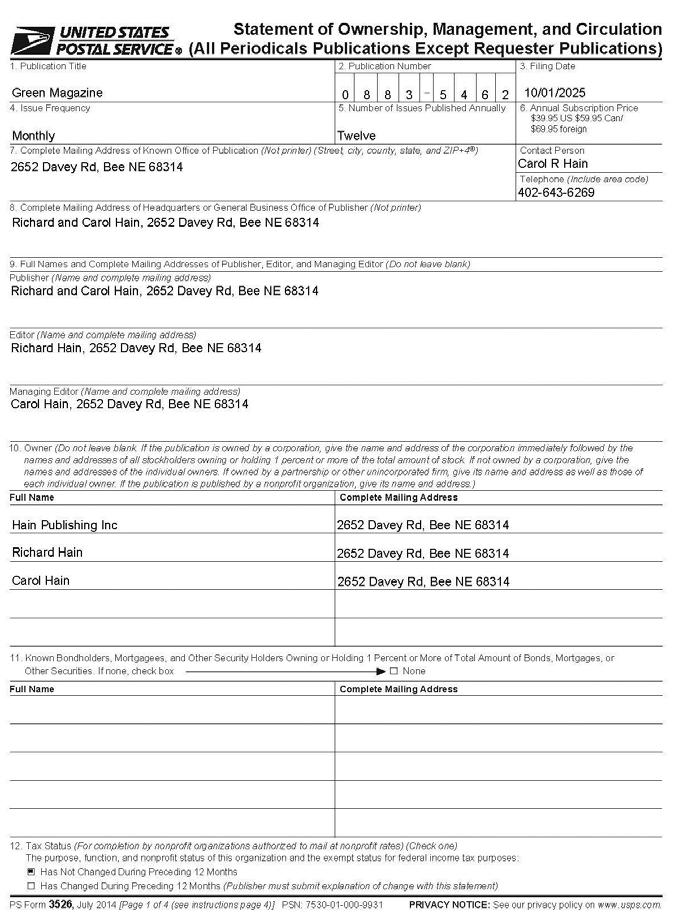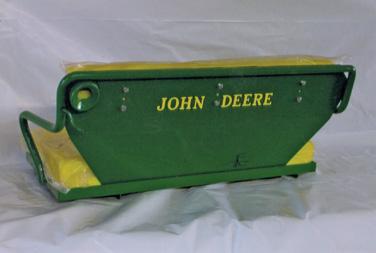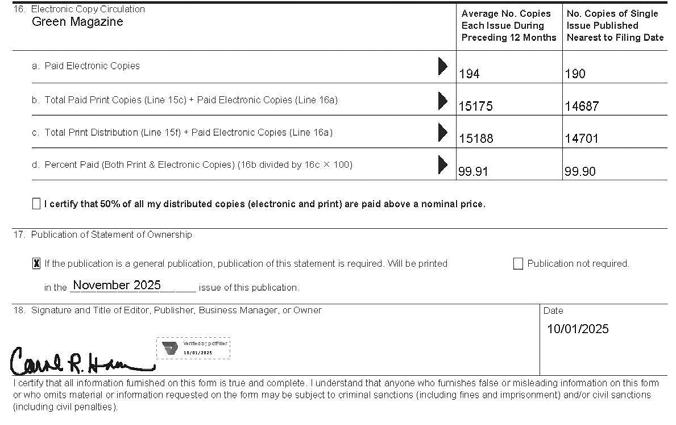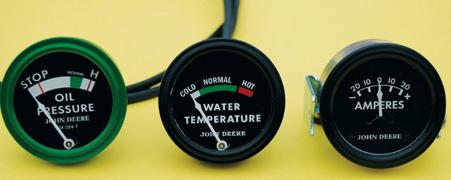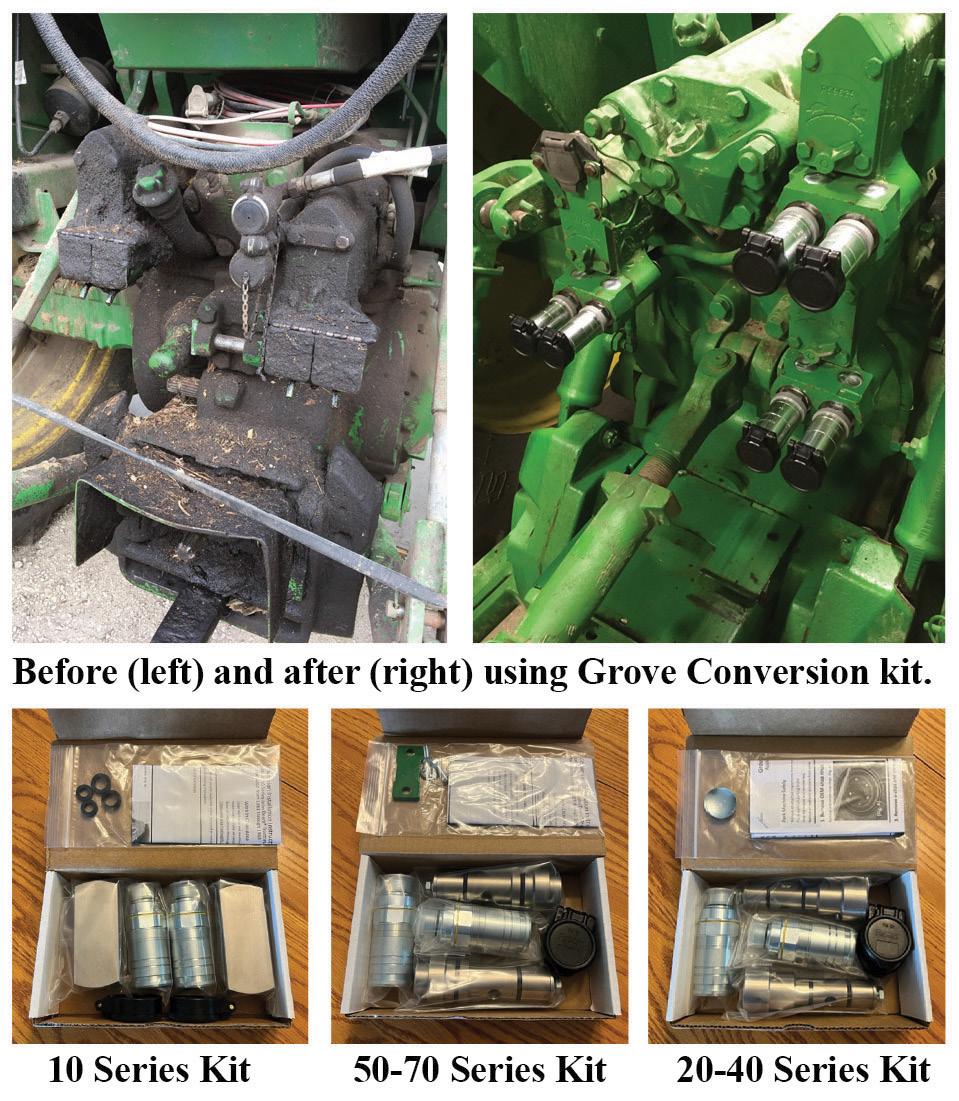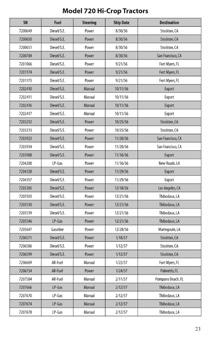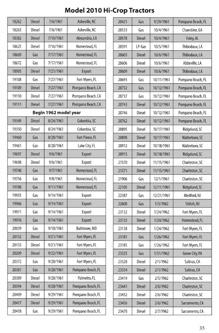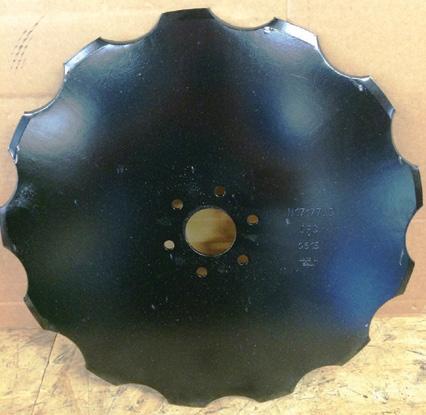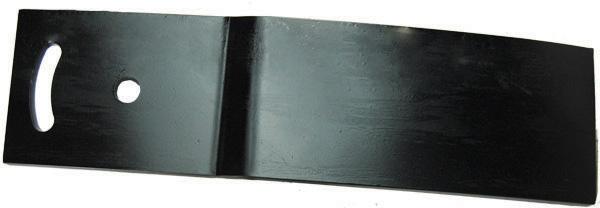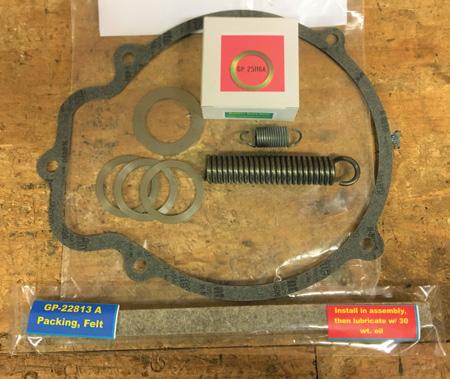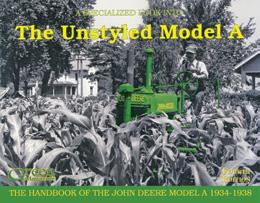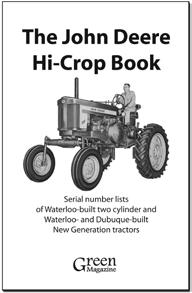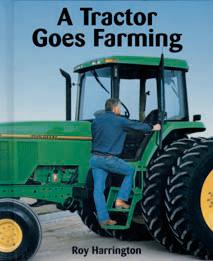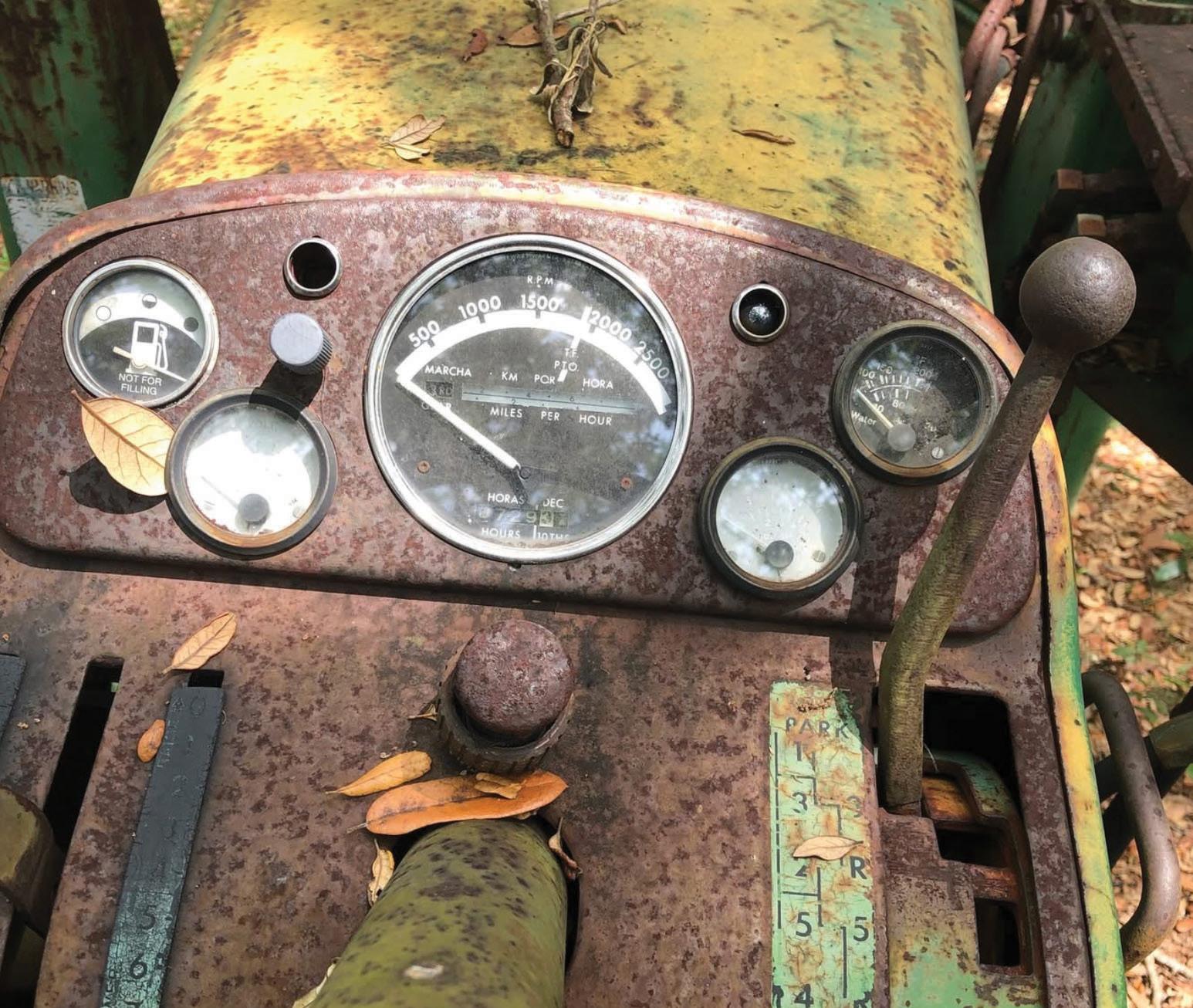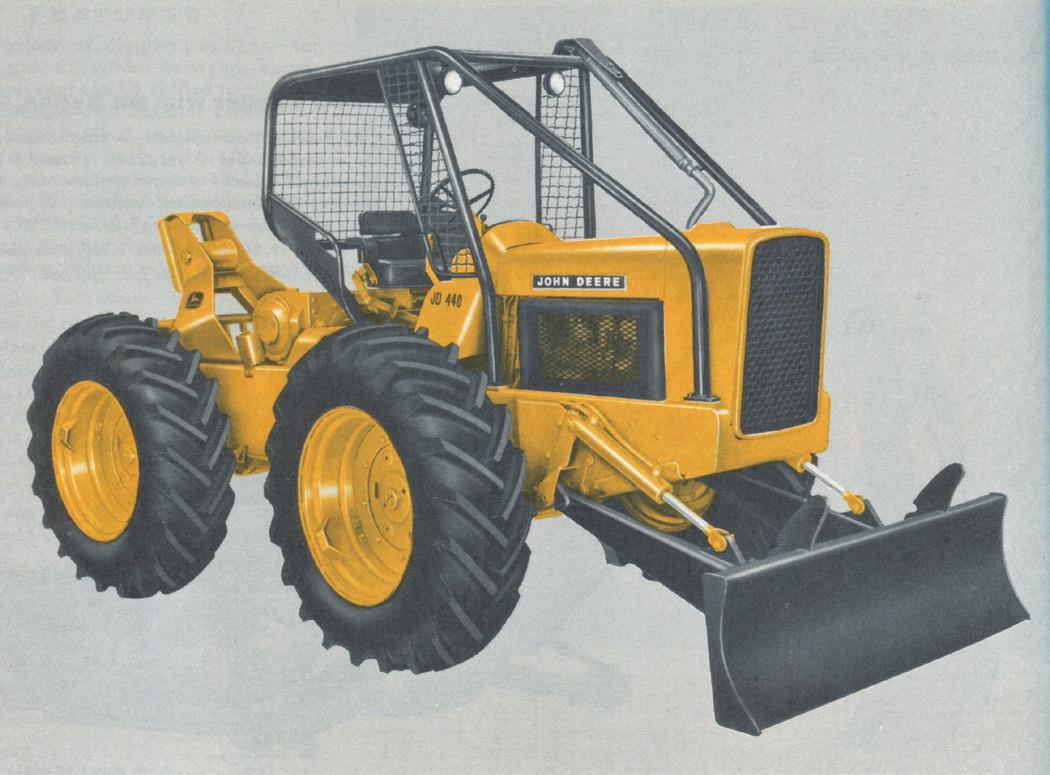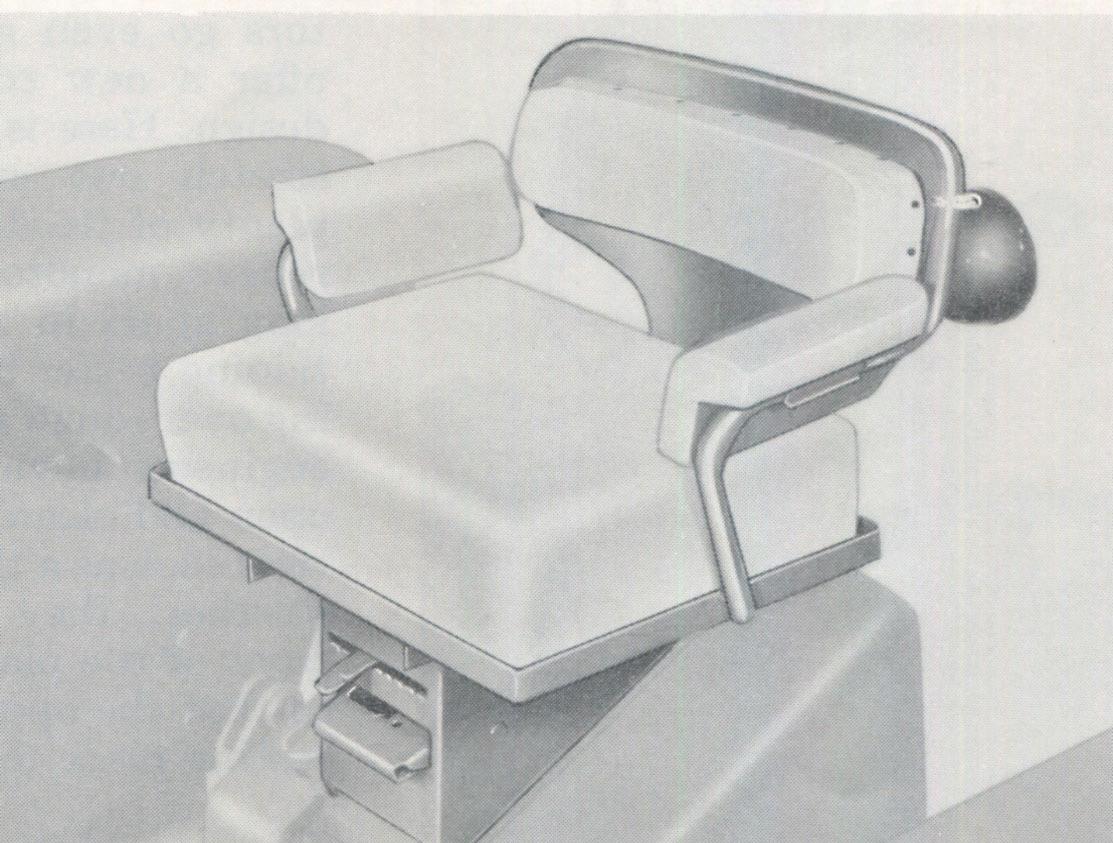1949 “G” returns home
In 1980, I purchased a 1949 “G” with an 801 hitch from my uncle. It also came with a three bottom 810 plow. Grandpa had purchased it in the late ’50s or early ’60s. It had been parked outside for the last 14 years before I purchased it. It had been parked due to its always overheating when using it. My uncle had a NOS lower radiator tank and water pump and a NOS flat head and a gas manifold for it.
Surprisingly it was not stuck as he had kept the exhaust and air stacks covered.
I installed the water pump kit and the new head and manifold and got it running and used it a little on a bush hog. Then in 1981, a guy made me an offer on it and, like a typical 20 year old, I just saw the dollar signs. So I sold him the tractor and sold the plows to another guy.
In 1997, I thought it would be nice to have Grandpa’s tractor back. Luck-
ily, the person I had sold it to still had it, but did not want to sell it. I would see him about once a year and question him about selling it and the answer was always the same. Then in 2012, he approached me at our local tractor show and said he was ready to sell it. I went and looked at it a few days later. It had not run in several years but was intact and it had been repainted shortly after he bought it from me.
We made a deal and in the meantime, I had been trying to buy back the plows. They had gone through three different owners over the years. The original guy had sold the plows to another neighbor, then he sold them to the local LP gas driver. So I had approached him about them when he brought us gas. But again, he did not want to sell. He contacted me a couple of weeks after I bought the tractor and was ready to sell them.
So in two weeks’ time, they were
back together. The “G” took a good carburetor cleaning and a mag rebuild to get it running. Then on to the gas tank. It was three-quarters full of nasty gas and had several large holes in it. I sent it off to be cleaned and patched. I did a little body work on the grills and while pressure washing it, before going to the “G” Reunion in Greenville, the old incorrect hood decal came off. I happened to have some other decals and while not the best quality, they were better than the ones that had been on it.
It will not get painted again as it is good enough for me. I take it to a few shows, but I have never plowed with it.
It will be here until I am gone, then it will be up to my son as to what happens to it.
Submitted by, James (Bob) Wheelock Bloomfield, IN
Complete clutch rebuild kits and clutch lining kits
& light parts
cores, water pumps, bolt kits
PARTS TRACTORS
720D, 2010G, late A, 530, 720D pony start, 50, 1020G, LA ES, 50 w/801 hitch, G, uns A, 730G, 5020, uns G, 430T, 2510G, 730 LP, 2010D, 530, late 520, ’39 B, BN, 40U, ’53 AO, ’41 H, ‘46 A, late A’s, ‘46 B, late Bs, slant dash B, uns B, sty D, G, uns L, M, MT, R, 40T, 40U, 40W, 70D std., 70G, 420U, 420W, 440 w/reverser and PS, 440 gas, early & late 50s, early 60, 60 w/power block, 620, 620 LP, 630, 70G, 720G, 720 LP, 720D pony, 730D, 730G, 820, 1010, 2010, 2010D, 2010RU, 2020, 3010D, 3020, 4020D. Most of these tractors are parted out & on the shelf—ready for quick shipment!
Oversize pistons available again for many two cylinder tractors
Wabi-sabi is a traditional Japanese philosophy centered on finding beauty in imperfection, impermanence, and simplicity. It is an aesthetic concept rooted in Zen Buddhism that encourages the acceptance of life’s transient nature and flaws, rather than striving for unattainable perfection. The philosophy celebrates the natural cycles of growth and decay, and can be seen in art forms like the tea ceremony, where its influence is evident in the use of modest, unique, and weathered objects.
I don’t usually read or quote Japanese philosophy. Still, I came across this idea in a book by celebrity chef and author Alton Brown, and I thought the last line was particularly pertinent to what we are doing here.
When Deere engineers were designing their early tractors, stopping them didn’t seem to be a major priority. While most of them had a differential brake, you couldn’t reach the handle from the seat. Since almost all of the early tractors were on steel, it was probably figured that they weren’t going to coast much when the clutch was disengaged, and the brake was meant mostly to keep the tractor planted when doing belt work.
I prefer tractors with brakes, especially if they will occasionally be driven onto a trailer. The brake lever on my “D” flopped around as if it weren’t attached to anything, and upon removing the cover from the transmission case, I found that to be exactly true. Not only was the lever not connected to anything, but the brake band to which it should have been connected
Apparently “easily” meant something different to whoever wrote their manuals than it does to us today.
Right: The used brake band, newly relined.
was nowhere to be seen. I drained the transmission oil, which was in surprisingly decent condition, to see if the band had been chewed up by
The brassy looking drum to the left of the two gears should have a brake band around it. I was asked what a 1933 “D” would have cost new, and what I thought the chains would cost today. The tractor was about $1,200 new. I found #240 chain online, which I believe is about the right size. The price is $1,700 for 10 feet.
the gears and was still lying at the bottom of the case somewhere. No trace of it. Apparently, it had been completely removed at some point. So, I sought out and found a new band, which was sent to Bob Dillner for relining. After getting it back, I began the job of installing it. Someone quipped, “You’re going to have grease up to your armpit.” To which I stated, “Maybe I’ll have to go to the farm store and get some of the long OB gloves used on cattle.” Another veteran restorer spoke up and said
An OB glove, available at most farm stores, is one way to get a little less messy when working in the bowels of a tractor. A nitrile glove over it aids in dexterity.
that he uses them all the time when having to reach deep within the guts of a tractor. Wish I had thought of this decades ago.
The seemingly simple task of getting the band around the differential and the threaded end up through the hole in the main case took much longer than I would have ever imagined. While I was warned that it wasn’t as easy as it looks, I hadn’t imagined that it was going to be this bad. I did get it done, though, only to find that the band was too short and that the loop end fell about two inches short of where it was supposed to connect to the lever shaft. It is apparently one from a later “D,” where things were rearranged to make room for a third gear.
Since I had already spent money on the band and relining it, and blood, sweat, and tears installing it, I wasn’t about to take it out again, so I decided to do a little metalworking and make an extension.
Let’s go from the mechanical to the cosmetic for a while. I’ve been removing the green paint a piece or two at a time and either sandblasting or using paint stripper. The sandblaster is much faster and easier, but there are certain areas I don’t want to use it on for fear of getting grit in the mechanical works. I’m still learning as I go, but my process is to remove most of the paint, then use a process to rust the bare metal,
followed by a coating to keep it from rusting further.
While I could just leave the bare metal pieces outside to rust naturally, I prefer to move things along considerably faster by spraying them with a mixture, the formula for which I found on the Internet. The mixture is one cup of hydrogen peroxide, onehalf cup of white vinegar, and about a tablespoon of salt. Mix well, brush or spray on, and you will see rust almost immediately. Since I usually work on this project in the late afternoon after
I’ve left the office, I leave it overnight and hose it off the next morning. If you delve into researching this topic on the internet, you will find many different ratios and methods, such as spraying the vinegar first. However, I have found this method to be effective and am sticking with it. If you are a real science nerd, you can also read about the chemical reaction taking place, oxygen atoms exchanging places and how and why this works.
That’s enough wabi-sabi for this month.
I was told by a “D” aficionado that the 1934 models (still a two-speed) had a different sized starting tank than the later three-speed models. Sure enough, the tank on John Nikodym’s 1934 is nine inches across. The tank from a three-speed that was on my tractor when I got it is seven inches across.
Above, left: Here’s the main case cover sand blasted. Middle: After 30 minutes of brushing with the hydrogen peroxide, vinegar salt mixture, and (right): rinsed, dried and sprayed with Fluid Film.
Lind Bros Tractor and Parts, LLC
• New aftermarket, rebuilt and used parts for JD A, B , D, G, H, M, R, 320, 330, 40, 420, 430, 50, 520, 530, 60, 620, 630, 70, 720, 730, 80, 820, 830, 3010 3020, 4010, 4020.
• Used parts include: weights, 3-pts., toplinks, dual hydraulics, float ride seats, clutch parts, hubs, transmission gears, sheet metal, tires and rims, 720-730 ES parts, all-fuel manifolds, brake parts, square and round tube WFEs, heads, blocks and PTO parts.
• New parts include: manifolds, battery boxes, carburetor kits, air stacks, mufflers, grill screens, radiator cores, lights and overhaul kits.
• Rebuilt parts include: Taper-Loc flywheels, electric start conversion kits, float ride seats, starters, carburetors, cleaned and lined gas tanks. Also have crack checked heads and blocks.
Wiring Harnesses - Cables - Switches
We build restoration quality wiring harnesses to fit these John Deere models and their variations:
AG Models: A, B, D, G, GM, L, LA, M, R, 40, 50, 60, 70,80, 320, 420, 430, 435, 440, 520, 530, 620, 630, 720, 730, 820 2 cyl, 820 3 cyl, 830 2 cyl, 830 3 cyl, 920, 1010, 1020, 1520, 1830, 2010, 2020, 2030, 2040, 2040, 2130, 2240, 2350, 2355, 2440, 2520, 2550, 2555, 2630, 2640, 2840, 2855, 2950, 2955, 3010, 3020, 3150, 3255, 4000, 4010, 4020, 4030, 4040, 4050, 4250, 4230, 4240, 4430, 4440, 4455 Mexico, 4630, 4640, 4840, 5010, 5020, 6030, 7020, 7520, 8010, 8020, 8430, 8630, 8440, 8640, 8560, 8760, 8960, 8770
Harnesses available for other models & brands
See website for complete listing Due to numerous variations, call to order Shipping/handling not included Visa, MC & Discover accepted Prices subject to change without notice
Circuit protection kits for Diesel tractors
From $35 (2 cylinder)
From $60 (New Gen)
Industrial Models: Al, Bl, DI, 300, 301, 302, 302A, 310A, 350, 350B, 350C, 380, 400, 400 Scraper, 400B, 400C, 401, 410, 410C, 410D, 440I, 450, 4508, 450C, 450E, 455E, 480B, 500, 500A, 500C, 510D, 540E, 544A, 548E, 600, 7E Scraper, 700, 700A, 710D, 750, 755, 840, 1010C, 1010W, 2010C, 2010W, 3010I, 4010I
AG Machinery: 45, 55, 4710, 5730, 5830 Lawn and Garden: Commercial mowers: 38”, 48”, 54”, GX1320, 727
Z-Trak, 60, 70, 110, 112, 120, 140, 200, 208, 210, 212, 216, 245, 300, 312, 314, 316, 318, 285, 320, 322, 330, 332, 420
Compact Tractor: 790, 850 Snowmobiles: 340 Cyclone
We also carry: Starters, Regulators, Generators, Alternators, Relays, Coils, Lights, Alternator Brackets, Pulleys
We make alternator conversion harnesses
A tractor in full orchard dress pulls an “OR” offset disc.
The progenitor of Deere and Company’s tractors, the Waterloo Gasoline Engine Company, was one of the first tractor manufacturers to recognize and attempt to cater to the needs of grove and orchard farmers. The company built a “California Special” version of their model “R” tractor, which featured a single front wheel for a shorter turning radius. Later in production, Waterloo shortened the wheelbase of the tractor to improve its maneuverability further. When Deere purchased Waterloo, the company was still building special tractors for orchard use, and a “California Clearifier” version of the model “N” was built. Approximately 27 of these tractors were produced, with the main changes being made to help the tractor work near apple trees while “clearing” the branches.
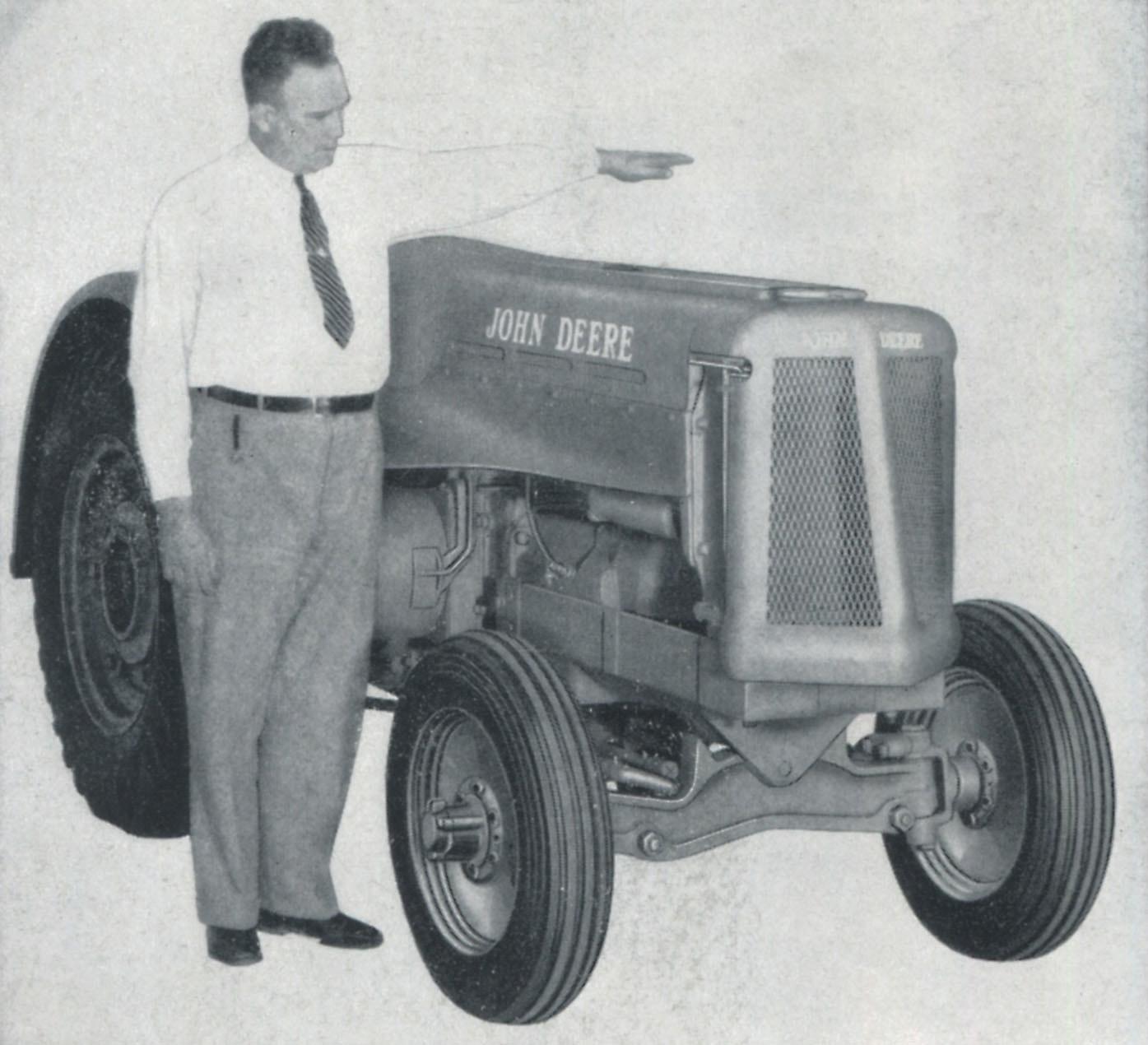
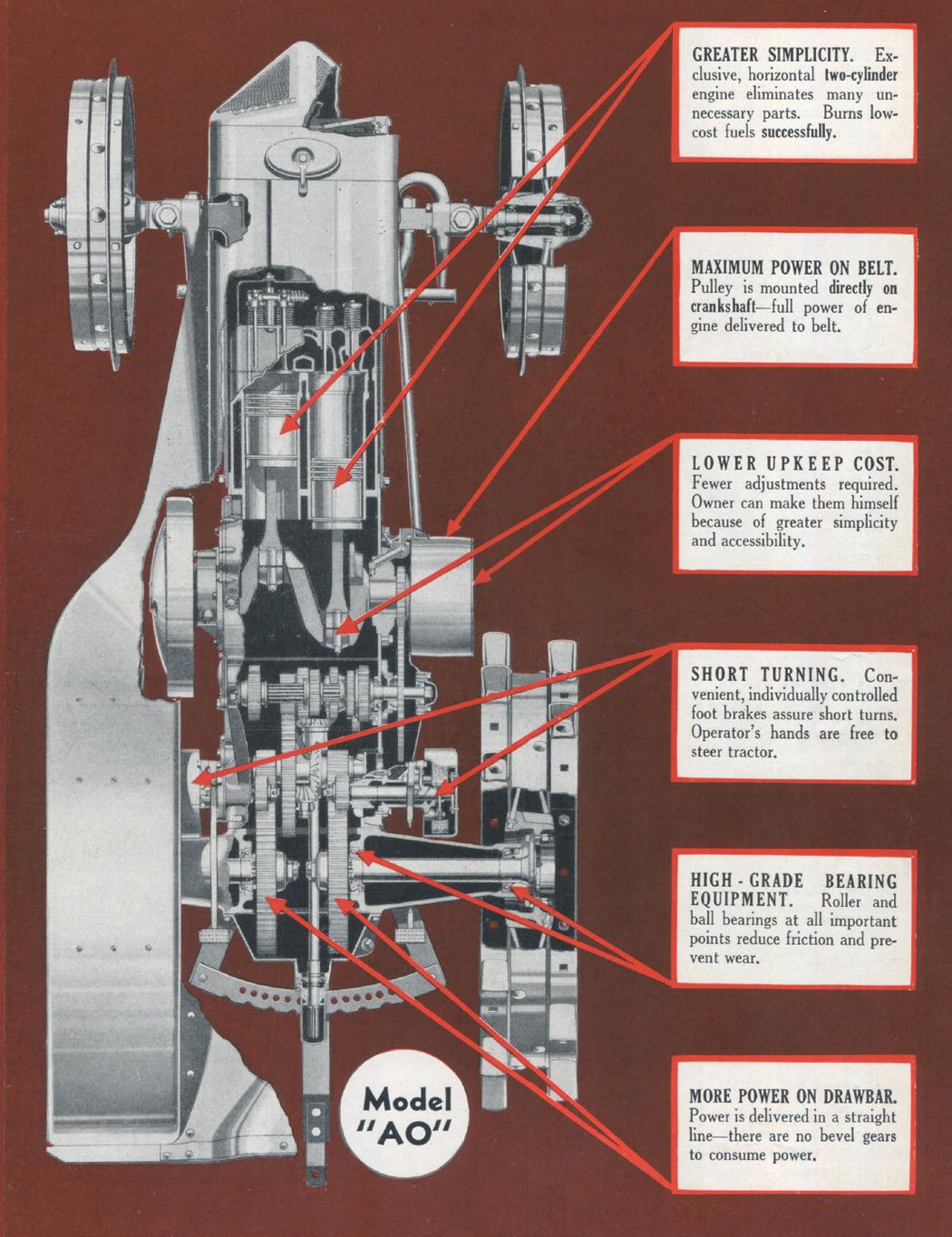
Deere’s model “D” was a comparatively effective tractor in orchard and grove work. It was low to the ground and more maneuverable than many tractors of the day. In fact, a number of the first 50 early production model “D” tractors were sent to California and tested in orchards there. Deere did not produce a special version of the tractor specifically for orchard service, but the company did offer special grove fenders, a “California” drawbar, and special lugs and wheels as options for the “D.”
Deere did not put much thought into modifying the “GP” for orchard service, but the Lindeman Brothers, owners of a Yakima, Washington dealership, did. They had a new front axle cast and rotated the final drives toward the rear. This put the tractor eight inches lower. A lowered operator’s seat gave even more room under the trees. Personnel from Deere and Company were invited to Yakima to have a look at
This man is demonstrating how low the tractor sits, enabling it to get under branches.
the tractor that they were modifying there, and Deere was impressed. Using the Lindemans’ ideas, Deere created the “GP” orchard tractor, or “GPO.” Deere estimated that 300 of these would be sold the next year, and 600 each year afterward, but the first tractor was built in April of 1931, and the Great Depression severely limited demand for any tractors. A total of 718 “GPO” tractors were sold over four years.
The model “A” that replaced the “GP” led to the standard tread model “AR,” released in April of 1935. A grove and orchard version of this tractor, the “AO,” was released shortly afterward. The “AO” was changed only
Overhead view of an “AOS.”
slightly from the “AR.” It featured low intake and exhaust, special shields to protect the operator from trees and the trees from the tractor, and differential brakes to allow for short turns between the trees. The tractor was a clear improvement over the “GPO.” The economy had also rebounded. These two facts allowed the “AO” to sell much better than the “GPO” could.
The “AO” was a good tractor, and was beginning to show grove and orchard farmers what a tractor built for them could be, but as more man-hours were spent in the seats of these tractors, more tweaks and adjustments were asked for. Primarily, the farmers wanted a tractor that was even more maneuverable, narrower, and more protective of both the operator and the trees that it worked around.
Six “AR” tractors were pulled from the production line and used as experimental machines for a new version of the orchard tractor. The engineers began by installing the front end support from an “AI” on these tractors. This support set the front axle farther back seven inches, which reduced the turning radius of the tractor by almost a foot. The axle supported there was six inches narrower than the “AR” axle, measuring
41-7/8 inches. The rear axle housing was shortened, as well. It was 2-7/16 inches shorter on the left side and 2-13/16 inches shorter on the right. The rear tread width was now just 453/8 inches.
The tread width had been narrowed so much that the tractor itself had to be narrowed to fit inside the wheels. On the flywheel side, Deere’s engineers simply installed a different flywheel to give a half-inch of clearance to the wheel on that side. The first reduction gears were changed, and a narrower clutch pulley was installed on the clutch side. The crankshaft was shortened, and Deere added a counterweight. The right-hand main bearing was narrowed, but the diameter was increased so that the surface area of the bearing would remain the same.
After harvest the “AOS” provided efficient power for processing equipment.
Now that the tractor was as maneuverable as Deere could make it, Deere focused on lowering the tractor as much as they could. A new radiator, hood, fuel tank, and fenders were all created and installed on the tractor. These made the tractor more than five inches shorter in overall height compared to the “AO.” They also provided a streamlined look for the tractor and assisted in making the tractor less likely to snag tree branches. Deere also put the seat from the model “D” on the tractor, which made the ride more comfortable with the seating position lowered by three inches.
All “AOS” tractors used a Marvel Schebler DLTX-19 carburetor. Tractors 1000 to 1524 used a Fairbanks Morse RV2B magneto. Tractors 1525 to 1891, an Edison Splitdorf CD.”
Deere tried a few features during the tractor’s experimental phase that did not make it to production. This was typical, of course, but one thing that did not make production on this tractor is surprising. During testing, Deere had an engine oil dipstick installed on the tractor on the main case just in front of the flywheel. For whatever reason, Deere decided not to put these on the production machines. It would be years before they were added.
The first experimental tractors were shipped to various places across the country in June of 1936. There,
they could be tested in real world conditions to see if there was anything else for the engineers to address before full production. By August, a proposal was made to the board to begin production of the new tractor, and in October, that proposal was accepted. Production of the “AO” ended almost immediately, retooling was done, and production of the new streamlined “AO,” or “AOS” tractor, began in November. The first of these was sent to Grand Rapids, Michigan.
The “AOS” was a specialty tractor and, therefore, did not have many options available to it. The place where the buyer had the most agency was in the wheel equipment on the tractor. Standard equipment was a
foursome of steel wheels. Rubber tires were available in 11.25x24 or 12.75x24 inch sizes. Another option for the “AOS” was special “citrus” fenders. These included skirts that covered the sides of the rear wheels and valances that extended to the front of the tractor. These provided maximum protection for the plants that the tractor worked around, but were a rare option with a $35 cost. Finally, Deere offered both a slowspeed and high-speed gear assembly for the tractor, to help you personalize the four-speed transmission on the tractor.
The “AOS” was a hit from the start. It had the features that grove and orchard farmers had been asking for. The 512 tractors that Deere built in the first year exceeded all expectations.
That would be the highlight of the tractor’s production. A recession began and brought sales of the “AOS” down to 158 tractors in 1938. Things only got worse after that, and yearly sales of the tractor never again broke out of the double digits. Even a $25 discount on the machine failed to breathe any life into its sales numbers. The last “AOS” was built in October of 1940. The 1941 model year of the “AR” brought a multitude of improvements to the tractor—improvements that had been made to the model “A” a bit prior, and which brought more horsepower to the tractor. Seeing the “AOS” (and its cousin, the “AI”) languishing in sales, and now having the updated “AR” to work with, Deere brought back the model “AO” that was based on the “AR,” ending
the run of the “AOS.”
Only 820 model “AOS” tractors were built, making them one of the rarest of Deere’s tractors. If simple scarcity isn’t enough to draw attention to a tractor, unique looks certainly are, and the “AOS” has some of the most unique looks of any tractor that Deere has built. An “AOS” would be a head-turner anywhere, with more sheet metal and curves than some of the world’s most popular sports cars. Restoration of one of these tractors would be difficult. Even if you are an artist skilled at smoothing out sheet steel, you’ll also have to contend with a machine that incorporates many parts that are unique to it. If you venture forth and succeed, though, you’ll have one of the showiest John Deere tractors that ever existed.
question may be chosen for publication
2-Cylinder Plus Tractor Salvage
2-Cylinder Plus Tractor Salvage
A’s, Bs, 420s, 430 thru 4010, Hs & Ms Hay Equipment, Balers, Disk Binders & Hay Bines David and Robin Marlin
417-589-2634 • 417-589-3337
322 Marlin Prairie Dr • Conway, MO 65632
Only 70 miles northeast of Branson, Missouri
Need a Green Magazine back issue?
Buy them by the SET
There are three sets available—buy one or all! Back issues can also be purchased individually. See the ad on page 71, call 402-643-6269 or go online to www.GreenMagazine.com for more information about back issues. Availability changes, depending upon supply. Green Magazine back issues—packed with good reading!
Tractor Parts We Fabricate
Weight Bracket
5010, 5020, 6030: AR58358, Pr $460
Rear Engine Panels
4620 Right, AR43290, $155
4620 Left, AR51804, $255 2510 Right, AR38206, $300 2510 Left, AR38207, $220
2520 Right, AR38838, AR38202, $300
2520 Left, AR38839, AR38203, $220
5010, 5020 R, AR35023, $300 L, AR35024 OR AR36796 $300 6030 Right, AR53645, $350 6030 Left, AR53646, $350
Dust Shields
5010 Right, AR35334, $320 5010 Left, AR35335, $320 5020, 6030 RC Right, AR40930, $350 5020, 6030 RC Left, AR40931, $350 5020, 6030 Whd R, AR36772, $350 5020, 6030 Whd L, AR36773, $350
Rock Shaft Cover
5010, 5020 Right, R36420, $295 5010,5020 Left, R36422, $160 5010, 5020, 6030 Center, AR55756, $70 6030 Right, AR55755, $295 6030 Left, R51485, $160
Toolbox Cover
5010, 5020, 6030 - AR35050, $65
Hood Air Cleaner Cover
4050, 4520, 7020 - AR43256, $165
Hydraulic Dipstick Cover 5010, 5020, 6030 - R36421, $80
Step w/Pads
5010, 5020, 6030 - AR40914, $165
Step U Bolts $18
Seat Base Cover for Tractor w/o
Rock Shaft - AR26846, $295
4000 & 4020 Std SN 201,000 & Above
AR40773 LH Rear Eng Panel = $80
AR40774 RH Rear Eng Panel = $80
AR40871 Platform (can modify AR48727) = $155
AR41097 Platform Support = $84
AR41098 Platform Support = $84
AR41137 Dust Shield RH = $315
AR41138 Dust Shield LH = $315
AR41174 Support To Dust Shield=$27
R41253 Ext Front Right = $156
AR41451 Ext. (RH) = $74
AR42594 Step Bracket
3020 Standard Tractor
In the heart of a sun-baked southeast Missouri field, where dust swirled like memories, ran an old John Deere model “H” tractor pulling a small disk harrow, its green paint weathered but proud. Zachary, a farm boy with calloused hands, pondered a question that had been bugging him. His tractor, a 1941 model “H” he had completely overhauled with help from his Paw, needed a name. His tractor was not just any machine—it had plowed through droughts, floods, and the dreams of several generations. Naming it felt like naming a piece of his soul, and it
was not an easy decision.
Having been an avid reader for GM, Zachary noticed a long time ago that many readers who have written letters to the editor and submitted articles would often reference names for their tractors. Names for tractors often were references to old acquaintances or perhaps the name borrowed from a favorite comic. Zachary asked me for ideas and we discussed names that began with the letter H. After discussing names for over few months, he chose HANK for the name of his tractor. Hank, which is usually short
Hank being operated by Zachary with the six foot disc harrow.
Belted up to the dynamometer for the first time was quite a thrill.
Below: The first attempt on the dynamometer resulted in right at 15 horsepower, but the belt came off, requiring a repositioning of the tractor for another attempt.
for Henry, represented a little yet powerful spirit that encapsulated the tractor that would never give up, no matter how hard the work.
Finally having a tractor with a name was special, you see. On the Buchheit Farm, we do not have any special names for equipment or tractors and simply refer to them by their model number. My parents each have their own JD gators; “Dad’s Gator” is a well-worn 825 XUV while “Mom’s Gator” is the newer 835M that is hardly broken in. While there are not any exceptions for naming equipment on our family farm, there are special names given to certain livestock and pets. My mother has named all her breeding stock of beef cattle since before I was born. I believe for her naming each animal builds the personal connection more than just a numbered ear tag.
Seventeen horsepower was smaller than the others but it was the most of any “H” tested at the show.
Below: Plowing behind the 1973 Chevy pulling a 66H 4-14 inch moldboard plow that I once owned. Zachary said he had a real good furrow to follow.
Of course, using proper names for animals makes it even more difficult when the time arrives to say goodbye.
Readers might recall that a few months back, it was shared that Zachary had found a small IHC disc harrow to match up to Hank, the JD “H.” He was itching to find an opportunity to get it out and work a shine on the blades once again. In early July, a neighbor of ours decided to disc under the weeds growing in a field in preparation to planting soybeans. I passed the field several times as is located right off US 61 Highway (runs from just south of Duluth, Minnesota to New Orleans, Louisiana) and decided to ask him if we might bring Hank and the disc harrow to play. He agreed so we took a couple hours before a family reunion one Sunday. Hank pulled the disc well in second gear. I even hopped onto the back of the disc for some added weight and to allow the blades to dig in deeper for a greater load and to shine up more of the blade surfaces. Everything worked perfectly, but we had to leave sooner than Zachary wanted to make it to the family reunion in time for some potluck lunch and some homemade coffee cake for dessert.
Hank went to his first tractor show of the 2025 season in Pinckneyville, Illinois in mid-August. We
hooked up the H-1, one-bottom 16 inch plow for the field demonstration. Plowing went well as it had rained an inch just prior to the show, making the sun-baked soil workable once again in time for the plowing demonstrations. Zachary was thrilled to be up to plowing on his own (last year we took it but he was not keen on operating it solo).
Arguably, the best part of the Thresherman’s Show was finally officially testing the horsepower of Hank’s overhauled and souped-up engine. Zachary and I both guessed what the maximum horsepower would be. He guessed 15 horsepower and I said 17 horsepower. There were several dynamometers set up at the show grounds but we decided to use the engine belt pulley since the mounted plow would have to be removed for a PTO shaft hookup test.
There were some serious Farmall tractor guys in charge of the testing so they gave us a hard time being the green guys. Since we took the engine up several points in compression and bored the block to 1/8th inch overbore, it was assumed that Hank would best the original Nebraska Test results of 14.84 horsepower on the belt. A 10 percent increase in power would be 16.32 horsepower. After several tests of load, it ended up right at 17 horsepower! Hank showed us the number
At the 50 Years of Progress show in Rantoul, Illinois, Zachary wanted his picture taken with Marvin Finfrock’s “D” on tracks.
and it was a good one. Zachary was pleased to finally know his tractor was more powerful than when it left the factory in 1941.
Zachary and I headed up to 50 Years of Progress in Rantoul for a week of peddling plow parts and checking out the cool stuff at the event. The weather was beautiful and the crowds were bigger than ever. We did not take anything along to the show to play as it was a work event for us. We did get some time in to check out the plowing and corn picking demonstrations. The IH collectors put on a good display of 1206 tractors with well over 300 in total (from what we heard). I expected to see at least one 1206 painted green and yellow as it seems to be tradition
After hitting a hard spot, the 4D disconnected to the dismay of a 10-year-old boy.
Below: Eleanor trying her hand at driving the 1951 “A” pulling the 4D plow. She decided that matching overalls were just right for our little plowing demonstration.
for the JD and IH collectors to pick on each other and that there was a red 4020 on display.
Back at home after all the summer shows for us, Zachary and I were working on a model 4D plow that he wanted to fix up and try to sell. We got the plow bottoms fixed up and rebuilt the clutch along with new tires. Summer rains had been scarce and after two months without any significant rainfall, it would be a real test of a plow to see if it would go in the ground. We hooked up the 2-16 inch model 4D to Grandpa Buchheit’s 1951 “A” and went to the spot where we feed round hay bales to our cattle in the winter. I have plowed there before and figured it was worth an attempt. We managed to get it working and both Zachary and his younger sister Eleanor took their hand at plowing.
I also managed to get the F120 plow with JD factory chisel plow “mulch” bottoms to see how hard it would pull. I can attest that the 720D would bark in fourth gear even with only three twisted chisels. I have an extra chisel bottom “frog” and I may end up building a four-chisel plow to allow for completely covering my 720D tractor wheel tracks.
Rounding out the fun with Hank this summer was a project that Zachary had been bugging me with for
After a couple rounds, the plow was pulling much straighter.
well over a year. When he has extra energy or needs a break from the home school routine at our place, he often takes Hank for a drive around our farm and in doing so, he likes to hook up a piece of equipment from a hay rake to a wagon. My 630 and 720 both have front hitches and he would like one for Hank. The reason he never had one before is that one of the lower threaded bosses in the front steering pedestal had the thread stripped out. Zachary kept on reminding me that I told him we would eventually fix this a make a front hitch for Hank.
First, we found a 5/8 HELICOIL repair kit after it was misplaced for several years. Once I found it, then I realized that I did not have the proper size drill bit. Another week later, my eBay purchase of a 21/32 inch drill bit arrived. I drilled out the hole and got the rest of the broken stud out as well. Zachary took charge on the special tap and then I showed him how to install the HELICOIL insert.
With the thread fixed, creating the hitch came next. I searched all through the scrap iron pile for something that might work, but found nothing just right. The hole spacing on the “H” implement stud mounting is narrower than other models such as the “A,” “B,” “G” series tractor. I
HELICOIL was just what was needed to repair the stripped-out hole on the “H” front pedestal.
One-turn in and one-half turn back out keeps the tap turning smoothly.
Below: Zachary was surprised that the thread insert only required a flimsy plastic installation tool.
ground with Hank.
months
Below: He declined waiting to install the hitch after painting.
settled on a couple pieces of steel from a JD plow that I had dismantled. We measured, sliced, cut, ground, drilled, and finally welded up a proper hitch. I even made sure that the hitch plate had a slight downward angle on it to ensure it would be less likely to bind for low hitch pivot points (Zachary observed the front hitches on my 630 and 720 are sometimes in a bind on the pin due to being flat and level).
Zachary spent a couple hours hooking up and practicing backing an empty gravity wagon around the barn yard with Hank. He will require more practice, but with school starting up again this fall, Zachary will likely have more time to hone his front hitch driving skills between math and English lessons from his mother.
Contact Tyler Buchheit by email at tyler@mrbtractors.com. His website is www.mrbtractors.com.
With help from AI and some time on my hands, I found the perfect hood decal for Zachary’s tractor.
The 720D with the three-chisel plow conversion. Left: Smoothing out the plowed
After
of bugging dad, the front hitch is installed.
Josh Salm of Kiel, Wisconsin was at the Half Century of Progress Show with his half scale model 8020 John Deere tractor. “I started this around 1996 and built the tractor portion. My dad (Bob) had just gotten an 8020 and, being a farm boy, I had to have something to do.”
For the engine, Josh used a Ford Escort diesel engine. “I scoured and salvaged parts. I was trying to be a resourceful 16 year old.”
Graduating in 1999, he bought a place and, in time, started working on the model again. “I got better tools and had shop equipment. I started finishing the back half during the early 2000s.” It was around 2006 that he finished the ongoing project. “I got a three-point hitch as a design project. It was the last project in 2010.”
After that, Josh came to the Historic Farm Days at Pen-
field, Illinois and saw collectors like Darrell Fischer plowing with his 8020. At Penfield, he took measurements of the plow and built it for his father as well as his son, Grant. “I got the hitch done and built the plow. It is all custom, even the bottoms. I modeled it as best I could.”
Josh was contemplating whether to take it out at the Half Century. He added, “We plowed with it twice. We are going to play with it in the future. Really, I am prouder of the plow than the tractor; I has a tripping bottom raising it to a higher level.”
Over time, Josh decided that he wasn’t as pleased with the front end that he had created early on in his teens and he decided to redo it. “I redid it this spring. Now it has a Kubota four cycle engine.”
The half scale designation, he said, is more of a match in the back. “I started going over it from front to back, getting it more accurate, then I went back to the front now that I have more ability, and it is more accurate.”
The half scale 8020 hasn’t made too many debuts. “It was briefly at Classic Green but otherwise, it hasn’t been out in 10 years,” he said, except for the appearance at the Half Cen-
tury of Progress. This is the largest vintage tractor show in the U.S. that takes place every two years in Rantoul, Illinois on the former Chanute Air Force Base. The location is now Rantoul Airport.
These days, it’s more about what his son, Grant, wants than his wishes. “I want to see what my son dreams up and play around with it more. At some point, I would like to get a small engine built in the future.”
In the early 1930s, petroleum companies began using a new method called “catalytic cracking” to produce gasoline, which, compared to earlier methods, such as distillation and thermal cracking, was less expensive and more efficient. The result was less of a price difference between gasoline and heavier fuels like distillate and kerosene. This, in turn, led to more and more farmers converting their all-fuel tractors to run on gasoline only.
Many aftermarket companies introduced so called “cold” manifolds for these engines. These manifolds separated the exhaust and intake chambers so that the gasoline was not heated, which could cause a new set of problems.
One of these companies was the Robinson Engineering and Development Company, then located in Calgary, Alberta. The company produced grain augers, loaders, and various other implements, many under the trade name Robeco.
Called the “Robin” manifolds, they were available for many different tractors that were popular during the day, including the John Deere model “D,” and were fairly popular in western Canada. The manifolds used a Schebler model “TR” carburetor commonly used
on certain Moline and Massey Harris tractors. The system was said to provide easier starting, more power, and better fuel efficiency, hard to believe when you consider all of the 90 and 180 degree turns the air and fuel traveled through, but then, have you ever seen something advertised
as making your engine weaker, less efficient, and harder to start?
If anyone has any experience with these manifolds, we would love to hear about it.
Thanks to Darcy Meyer for the photos and Herb Bartel, who owns the tractor.
If you have a John Deere Hay Cuber, you almost have to have a 75 or 76 dump wagon. Reg Gurney and Henry Deter from Ontario, Canada have a 76 to use along with their 425 Cuber. Since the two of them own it, this month we are going to split the pot and add six months to each man’s subscription.
fewer problems going through the combine. A quick side note—with improved varieties of grain and chemical termination, windrowers are not used nearly as much today.
In the 1960s, Deere offered the model 190 windrower, a 16-foot machine that had the unique optional feature of being able to reconfigure for heavy or light crops. In good years, the crop left the machine through the hole in the back, but in years where the crop was light on the return trip, the material could all be sent to the left to drop the windrow on or next to the previous windrow. The price for the base machine was about $1,900. The optional two-swath attachment added another $450. Do you have a 190 windrower? If so, be the first to send a photo of it and yourself to us, and we will add one year to your subscription.
In certain environments, especially in the north, small grain crops will not dry to a harvestable moisture before they are infested with weeds. The answer is to cut the crop and move it into windrows, where it will dry in the sun, and it can then be harvested with a combine equipped with a pick-up head. Any weeds in the crop are also dried so that they will cause
Right: Henry Weber sent us this photo of his 50. Below: Michaela Stinson sent us this photo of Deere tractors put away for winter.
Right: Paul Roback of Inland, Nebraska brought his nice “BR” to the Old Trusty Show.
Here’s a 1953 model 60 owned by
Below: You don’t often see a 4010 with a split manifold, but James Lampmann of Grant, Nebraska, owns one.
John Ralston sent us this photo of his daughter, Aidan, after the two finished putting up hay. She claims a 4020 as her tractor.
Left:
Left:
Jeff Dau.
If you are reading this, you are more than likely what is referred to as a “collector.” Collector is described as “one who collects” and “a person who makes a collection.” I would say that is a fairly accurate definition. But boy, oh boy, do some people take it to an extreme!
I have often said that if something has been made, there is someone who collects it. We are all familiar with the Beanie Baby craze (and don’t tell me about this one as my wife was head over heels into it and I lived it), Pokemon cards, vintage sneaker collectors, car collectors and, of course, vintage farm machinery collectors. The list goes on and on. The feeling that a collector gets when he finds a wanted item is what most collectors chase—that momentary “high.” Think back to the last tractor you found and brought home; that was the best feeling ever, right? As I have told you before, my collecting started when I found a brass compression petcock in the yard of my grandfather’s old home place. I picked it up, took it home and polished it on my father’s wire wheel. I LIKED it! I was probably 10 years old. Fast forward to after we had bought the dealership. By this time, I was into Fords and had a 1971 Mach One, three Falcons, and five Galaxies. I also had a 1970 Cobra Torino. All of this changed the day I stayed after work and went outside to take a look at a steel wheeled model “D” we had sitting outside for display. I was lucky that it was not stuck and, as this was
long ago, no one had come by and stolen anything off of it. I started messing with it and I got it to pop. I will never, ever forget the overwhelming sense of excitement that big engine gave me when it started. After that, I was hooked. I mostly never worked on my cars again and began chasing tractors. What I find interesting about collecting, and most of you can agree with me on this I think, is the many side trails and rabbit holes collecting will lead us down. I know very few people who collect one thing and one thing only. Most have other side collections that have come along as we concentrate on our hobby. One example I have heard time and again is that a collector is chasing a tractor but finds a really nice implement, so he buys it. At the next sale, he finds another implement that is slightly different than the one he has at home, so he buys it, too. Surprise, he is now also an implement collector.
That happened to me as I began my tractor collecting. I started looking for a manual I needed and found it as well as others. I was now a literature collector. I found a few John Deere type “E” engines at the dealership back under a shelf and drug them out. I was now a gas engine collector. I found a few extra carburetors and magnetos, not just John Deere, and really liked them so I looked for others. I was now a carburetor and magneto collector. To me, it was all so very interesting and the more I found, the more I kept looking. After more than 40 years in the
hobby, I am still interested in anything to do with the tractor companies, and it does not have to be just Deere. I like to think that I have studied this more than many people may have because, being a dealer, I was in the industry so what I learned often had real time applications to my job and business.
For all that I think I know, though, I have to say I am constantly surprised at how much other collectors know. That is one of the things that keeps me engaged—there is so much history in this industry that no one can ever know it all and there is constantly something new to discover and learn about. Also, I never begrudge anyone about their hobby of collecting, whatever it is they are interested in. Who am I to say that collecting rusty old tractors is any better than collecting Pillsbury Dough Boys? If it makes you happy, go for it. That is one of the points of living.
What I am leading up to is I thought I would show you a few things I ended up collecting that I had no idea I would ever get into. This is just one or two of the many things I have collected, and I thought it might be interesting for you to look at and maybe even get a few of you started in these areas, too. This is by no means an exhaustive take on this area of collecting; it is more of a fun look at it. Let’s get started.
This area of collecting I got into started by keeping a note pad from our dealership. Then I found a note pad from the dealer we bought out. Then I found another one and another
and another and like I said, I was now a note pad collector. This one is from Bondy Implement from Drayton, North Dakota. It is a four legged deer logo note pad and dates from January of 1968. This style of note pad was the standard John Deere dealer note pad supplied by Deere for many years, perhaps even still is—I do not know (Photo 1).
This note pad is from S. Quilci & Sons of Wells, Nevada. This is one of the dealers I bought out and I moved everything from Nevada to Franktown. I was glad to run across this note pad in some of the stuff I got from them. This is an old two legged deer logo note pad and note that the slogans change as the years go by (Photo 2).


Photo 3 is a note pad from Weakly & Sloan, Inc. of Havana, Illinois. It features a grid background and has an old two legged deer logo. This one is from Bader Brothers of Reese, Michigan. From the internet, I found that Bader Brothers began in 1934 and, around 2009, they were facing pressure from Deere to expand or sell, like Deere has done to so many other old-line dealers. Bader Brothers sold their John Deere dealerships in 2010 and when Bader & Sons, a cousin, sold their dealerships in 2021, this marked the first time there was not a Bader family store serving Michigan in the John Deere business since 1934. A sad story I think, but typical of Deere’s policies regarding dealerships in today’s market. This note pad has a four legged deer logo and also is dated January of 1968, like the first one we looked at (Photo 4).
the slogan is different.
Photo 5 is a bit closer to home, this
being the dealership we bought out in 1976. Cummings Implement dated back to the early 1960s and had two stores at one time. We continued to use the Cummings Implement name for a few years after we bought the dealership and then changed it to Stephen Equipment. What is interesting to me is that this is my father’s handwriting on this note. Looking at it, it would appear he had written down pricing on “entertainment, gifts, necklaces, parking and meals” for a home and garden show. It would appear our company attended this show, but I have no memory of it. It was likely a sales event and we parts people would have been far too busy to concern ourselves with that. LOL. It has an old two legged deer logo and, again,
Photo 6 is our later Stephen Equipment notepad with the old two legged deer logo. It is funny but for all of the note pads we had around the dealership over the years, it was incredibly difficult to come up with one to save.
Photo 7 is a note pad from our friends at the Two Cylinder Club. I do not know the age, but I do know they have not put anything like this out in quite a few years. It has a two-cylinder two piston logo.
I just recently picked up this note pad from Schwitters, Inc. of Cedar Rapids, Iowa. I had not heard of this dealer before so I was glad to get it. It has an old two legged deer logo and the design is a bit different (Photo 8).
I think I may have borrowed this picture (Photo 9) due to the background not looking like anything I have used to take a picture
Photo 1 • 2, below
Photo 3 • 4, below
Photo 5 • 6, below
Photo 7 • Photo 8, below
Photo 9
on. Whatever the origins, it is a note pad for the John Deere Training Center in Wichita, Kansas. I myself have attended a class or two at the Wichita training center, probably back in the early 1990s. I remember wandering around Wichita at night after class trying to find something to do. I was not successful. It has an old two legged logo.
Photo 10 is a smaller note pad and it is a sticky note pad. It is for the Deere Harvester Credit Union.
Another sticky note pad—this one is for John Deere Marketing Services, Inc. in Waterloo, Iowa. It has an old two legged deer logo and a light grid background (Photo 11).
Photo 12 is a sticky note pad for the John Deere Health division; it has an old two legged deer logo.
to the everyday workings of a corporation like Deere. It has brown printing. This note pad is used for checking out tools, I would assume. It says “Tool Check Slip” and is for the John Deere Waterloo Tractor Works. It does not have a logo, but it dates from 1970 (Photo 15).
This is another good one. It is from John Deere Insurance and has an old two legged deer logo. Back in the day, Deere offered life insurance and even car insurance. I had a policy for
I liked this one. It is for the John Deere Foundry Division and has an old two legged logo (Photo 13).
Photo 14 is a message note pad from Deere. It has an old two legged logo and is dated November of 1984. This was long before emails, so documenting phone messages was critical
my car because, as a dealer, it was far cheaper than anything else I could find. Deere also at one point wanted dealer personnel to take training and become insurance agents. We did so and I took the test and actually passed. Deere’s brilliant strategy was for the dealer insurance agents to contact their customer base and sell them insurance. A win for Deere? Maybe. For us? No way. We did not feel right about pushing insurance on customers who looked to us for tractors and equipment, not insurance. I think most other dealers felt the same way as the program was
not in place too long before Deere dropped it. Deere eventually exited this market entirely.
This note once again has my father’s notes on it and this time it appears he was pricing out duals as he had a column for snap-on and also for bolt on. Apparently, it was for someone named Diane and that is all I know about it. I like the silhouettes of the vehicles at the bottom of the note page. I checked and this phone number is no longer associated with Deere (Photo 16).
This time the note pad has the slogan “Opportunity ’93” at the top and a John Deere tractor ghosted in the background (Photo 17). Deere constantly changed and added slogans as their marketing programs were announced to dealers. I do not remember the “Opportunity ’93” program but I would assume it was a sales program as dealers were told they could report their tractor sales by calling the phone number listed at the bottom. This phone number also is no longer associated with Deere. On this note, my father had sketched out a map for a customer, I assume for delivering Judy and Stan’s equipment. Remember hand drawn maps, kids? Pre-GPS? What a monumental change
Photo 11 • Photo 12, below
Photo 18
Photo 16 • 17, below
Photo 13 • 14, below
Photo 15
Photo 10
GPS was. I checked out the address and it appears to still be vacant land, 32 years later. I wonder what ever happened to Judy and Stan?
Photo 18 is from a John Deere catalog dealers could order from. Shown here are four different styles of note pads that could be ordered, with the dealer name at the top or no dealer name. These have the old two legged deer industrial logo.
Note cubes were another popular form of note pad. I have several and these were available for dealers to order. Note the Johnny Tractor note pad (Photo 19). In my experience, this is a fairly rare note pad; I know I only ever sold a couple of them but kept one back. Note cubes are great as the graphics are shown on the sides of the cube, in this picture the old two legged deer logo and the Johnny Tractor graphics.
Note pads often took the form of pocket notebooks. I have quite a few different ones similar to this one. This was available for dealers to order, and if 500 were ordered, the dealer cost was 50 cents each. This was in 1980 so today it would be dollars, not cents (Photo 20).
Photo 21 is a note pad for Valley Implement Company of Sterling, Colorado. Valley Implement was far enough away from Franktown that we rarely competed, so we considered them a good neighbor. In local lore, they were legendary as Valley Implement had at least one John Deere snowmobile still new in the crate, never set up. Before you get all worked up, it is long gone—I checked. They sold many snowmobiles back in the day. I like the old-style leaping deer on this note pad. I am not sure if it is the same dealer but today Valley Implement is a Case-IH dealer. Imagine that.
If I had to guess I would say, there are likely hundreds of different note pads and notebooks that Deere has offered over the years. A collector could spend years just concentrating on these.
We are now going to look at an item I was excited to finally get all in one place.
It is a John Deere pitcher and mug set. The pitcher, for some reason, is fairly difficult to find when looking for one. I have only ever seen a couple, and I have one myself I saved back for 30 years probably. I have always really liked this pitcher. Whether I appreciate the design and construction of the pitcher or whether it reminds me of my drinking days in my youth, it is a nice and heavy pitcher. I also always thought the old two legged deer logo
looked great on it. Another unusual thing about this picture is that there are six mugs. I have seen four once in awhile but never a set of six with the pitcher. The glasses are also well made and just feel right in your hands. I finally was able to get them all together in one location so I could take pictures. As with most things these days, they will be moving on to a new home as I have done what I needed to with them (Photo 22).
Photo 23 is a close up of the two legged deer logo mug as well as a different mug with an older deer over a log logo. Both are great mugs.
This is a fun picture. This is the pitcher and mugs from an order catalog I have dating from the late 1980s. JD4009 tankard and JD4010 pitcher are their item numbers. Also take a look at the high ball glasses and the pewter mug. Lots of glassware was available from Deere at this time. Glassware was just an okay seller for us, so I normally did not stock too much of it. Plus, glassware tends to get broken and then you have a pile of nothing (Photo 24).
In 1990, Deere put out a special catalog that listed only items related to the Waterloo Boy tractor. These Waterloo Boy glasses were one of the items. Also shown was a belt buckle
Photo 22
Photo 20 • Photo 21, below
Photo 19
Photo 23 • Photo 24, below
and a key ring as well as the sign in the upper left-hand corner. This was a heavy porcelain sign, not the cheap tin ones you see today for most brands (Photo 25).
Here is a set of Waterloo Boy glasses. The painted graphics really made these glasses stand out and they were bright and vibrant. I have had a few sets of these over the years, and they sold well. Nothing like relaxing after a long day in the shop working on your two-cylinder tractor with a drink in your Waterloo Boy glass (Photo 26).
Our final picture this time is of this set of unstyled model “G” glasses. The glass lists the model “G” as 1937 to 1953 but we all know this is an unstyled “G.” There were many different sets of these glasses produced at one time with different tractors. We will take a look at more glassware in a later article; this article is done for this time (Photo 27).
When you collect something, it
can be a life-changing adventure. You can go to places you never thought you would, and you can meet some of the greatest people with similar interests you will ever know. For me, that is the single best thing about this hobby—the people. Yes, the tractors and the memorabilia and more are all great fun but what I take away from the hobby are the people I have met and the people I have been able to have a discussion with. Collecting can also be a deeply personal activity. Some people collect to remember their past, while others collect for pride of ownership. Still others approach it as a business and, for them, it is about the value and the money and every dollar counts. I think the value part is fun, but I always collected because I liked the item or because I felt there was something to be learned from it. You also have to be very diligent for “mission creep” as John Deere is not the only brand with interesting items. I have veered

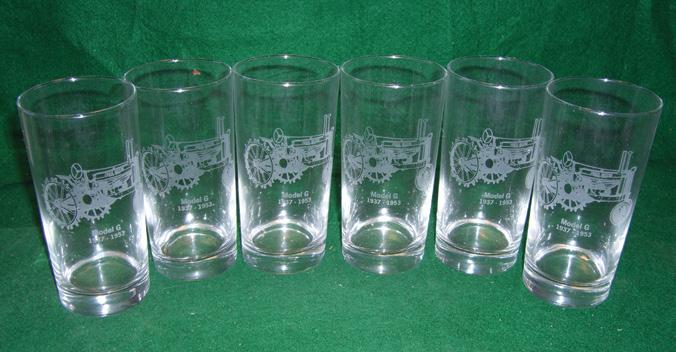
off into International a bit as well as Allis-Chalmers, Oliver and others. I appreciate almost anything vintage and, although Deere is my number one focus, I can appreciate other brands, too. As I have said before, I am continually amazed at the sheer volume of items Deere has produced. It is incredible. There is constantly something that pops up that I have never seen before so my interest is continually renewed. At some point I suppose, due to age or death, I will lay my collecting efforts down and take a break. I can always always say, however, it has been more fun than anyone should be allowed to have. I hope you all feel the same way. Don’t forget to look outside the areas you normally collect in, like these note pads and glassware—there are lots of other things that can be collected and enjoyed. This was just a quick glance at two different ones. Until next time. Write Greg Stephen at The Old Tractor Company, Box 89, Franktown, CO 80116; phone 231-846-8243 or email deeredr@hotmail.com
Photo 26 • Photo 27, below
Photo 25
I have mentioned my mom’s youngest brother, my Uncle Kurt, several times over the years in my articles. He farmed (dairy farming) on their home farm near Edgar, Wisconsin his entire life. Uncle Kurt was also one of the founding members of the North Central Wisconsin Steam and Gas Engine Club that hosted their first antique farm equipment show in 1974. That first year it was held at the State Park Speedway near Wausau, Wisconsin, about 20 miles to the east of Edgar. After the first show, Uncle Kurt offered to host the show on his farm. It was centrally located for the members, it was a working farm on which he planted both corn and oats that could be used for demonstration purposes, and there was plenty of room that they didn’t have to pay for. This year on August 22, 23, and 24, the club held their 52nd annual show on the farm. It was very well-attended once again with more than 500 tractors, many small engines, a sawmill, threshing, field demonstrations, and a flea market.
One of my friends, Rick Salber, brought a couple of his beautifully restored machines to the event. Photos 1 and 2 show his model 730 diesel tractor with electric start and mounted 237 corn picker. The tractor is a 1959 model and the picker is from 1965. Photo 3 shows his 1973 6030 tractor. These machines are only a few examples of several John Deere pieces Rick has in his collection. He also farms in the area and was a John Deere mechanic in the 1970s. His talents and capabilities are amazing and it was great to


see him, his family, and some of his collection at the show. In case you are wondering, the website for the club is edgarsteamshow.com and next year’s show dates are August 28, 29, and 30. The featured brand will be John Deere. While at the show, I visited with another friend, Mark Vornholt. Mark sells new farm toys of all brands and scales, and attends many farm toy shows and antique tractor shows throughout the year. His website is collectorsshelffarmtoys.com for those looking for another option on where to purchase miniatures. Mark had the new 1/64th scale version of the John Deere 9RX 830 tractor on his table and I decided to purchase one, along with a toy for my oldest grandson (who just turned 4), who went to the show

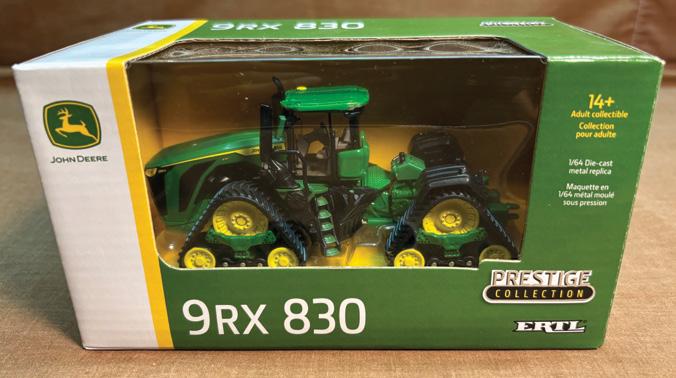
with me. The Ertl stock number for this tractor is LP86645 and it will be the primary subject for this month. Back on February 28, 2024, John Deere introduced the 9RX 830 as their most powerful tractor to date. This is a massive machine, weighing in at 74,000 pounds and having the capability to add ballast weight to reach 84,000 pounds. It features a John Deere JD18X (18 liter) engine with 830 rated horsepower, 913 maximum horsepower, and 335 PTO horsepower. The engine has a 1,098 cubic inch displacement, carries 18.9 gallons in the crankcase, requires 30.9 gallons of coolant, and has a fuel tank capable of carrying 515 gallons. The overall machine is nearly 12.5 feet tall and 29 feet long. I have seen exactly
Photo 1 • Photo 2, below
Photo 3 • Photo 4, below
one at a dealership about 50 miles from here and I am simply amazed at the size of this tractor.
So, let’s take a look at some of the details on this 9RX 830 toy. The carton is shown in Photo 4. Note that this is a Prestige model, so the expectation is that there will be a higher level of detail on this miniature versus a Replica model. A fully enclosed cardboard carton with clear plastic viewing window was used. The graphics include the standard green, yellow, and white background colors and printing. The
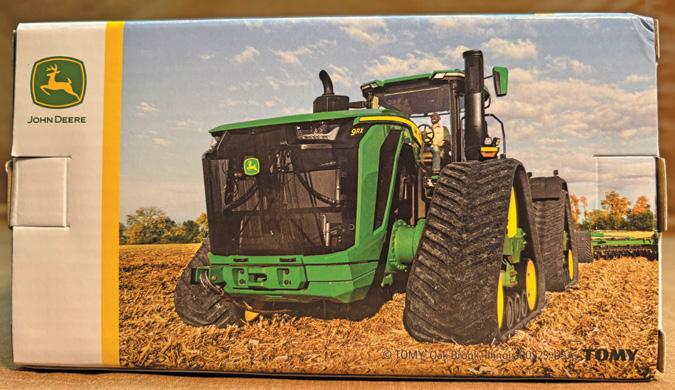

John Deere trademark is on five of the six sides, and the PRESTIGE COLLECTION identifier is on four. Partial photos of the real tractor are on each of the two end panels, and a full-front view of a tractor at work is on the rear (Photo 5). The toy is secured to an inner sleeve that can be slid out of the carton as shown in Photo 6. A clear plastic base is cemented to the bottom of the sleeve in which the tractor sits. Two paper ties were used to fully secure the tractor to the plastic base. I decided to completely remove my tractor from the sleeve so that I could take pictures of all sides.
Photos 7 and 8 provide left and right side views of the tractor. The main frame, or undercarriage, and the axles are made of die-cast metal. The tracks are a rubber material, and the rest of the toy is made up of plastic components. The team at Ertl did a nice job of keeping the fasteners
(screws) hidden by placing them all on the bottom.
The right front corner of the tractor is shown in Photo 9. Note the hood stripe and the model and horsepower designations. These items appear to be printed in place, which is a really nice feature. Also note the black tool box attached to the frame. It includes a tiny green and yellow John Deere trademark. Also visible on the top of the hood are four darker green areas representing the air vents, and the hood ornament highlighted in silver. Photo 10 provides a close-up view of the front of the tractor. Here you can see the headlights, which are silver decals. Unfortunately, since they are the self-adhesive style, they do not stick
and stay in place very well. The John Deere trademark is included near the center of the grille, and you can see the screens and hood ornament on the top a little more clearly. The front weight mounting bracket and “hardware” are provided at the bottom of the frame at the very front of the machine.
The engine and corresponding systems are not visible since the hood does not open and the black side shields for the engine compartment completely block any view of these components. Photo 11 shows the left side of the front “half” of the tractor. Despite the size of the real machine, the 1/64th scale model is still relatively small and it is very difficult to take clear pictures of the small details. So, I will try to point out what I can see that the camera may not pick out very well.
Included are the air intake stack and cover for access to the air filter element. Five green steps are provided for access to the cab. The cab is made of all plastic components and it features a black door handle, rear windshield wiper, and corner posts. The fuel cap is painted green, along with the front surfaces of the two mirrors that are
Photo 5 • Photo 6, below
Photo 7 • Photo 8, below
Photo 9
Photo 10 • Photo 11, below
located on the sides of the cab. The mirrors actually have a reflective surface on the rear side. Also note one of the two steering cylinders located directly below the access platform that is immediately behind the cab.
I tried to capture some of the cab interior in Photo 12, but it is nearly impossible given the size. With a magnifying glass, I could see that the steering wheel actually has a triangular-shaped center medallion with the John Deere trademark. There are some control arms on the sides of the forward console and pedals below it. A foot peg is included on each side of the console. The driver’s seat has a monitor attached to it on the right
side and there is a training seat to the left. All of the interior components are molded in a beige color.
Photo 13 shows the rear of the tractor. Included here are the remote hydraulic outlets highlighted in several colors, the Category 5 drawbar, and some weights attached to both sides of the drawbar. The fenders each have stop and warning lights on the rear surface, and two work lights on top. A slow moving vehicle sign is attached to the inside edge of the left fender. Work lights are also provided in the upper corners of the cab and on the air intake stack and on the muffler.
I added Photos 14 and 15 to provide a better perspective of the size of the 9RX 830. A 1/64th scale X9 1100 combine is to the left and a 6030 tractor to the right. The 9RX tractor is nearly as long as the combine and
almost twice as long as the 6030. The overall assembly, fit, and finish on my model are very good, especially given the small size of some of the components. The track assemblies rotate on the axles, the front and rear of the tractor move in relation to one another to provide “steering” and the tracks rotate on the wheels. There really are many details on this tractor that are simply hard to describe, and they make for a very realistic model. Expect to pay roughly $30 to $35 for one of these toy tractors when purchased from most dealers.
I realize that this is a miniature of one of John Deere’s newest machines, and therefore, is probably not of interest to all collectors. I purchased one since the real tractor intrigues me. It is huge, has tons of technology, and has a very unique, nearly “robot-like” appearance. Ertl is also going to produce a 1/16th scale version of this tractor with their stock number LP86760 as a collector’s edition model. It may already be out when you are reading this. I intend to cover that one in the future. Enjoy.
Contact Bill Proft at N1366 Woodland Dr., Greenville, WI 54942 or email billproft@sbcglobal.net
Photo 12 • Photo 13, below
Photo 14 • Photo 15, below
Full disclosure…if you feel as though you have read this article before, you have! We first talked about adding power steering to your heirloom old tractor in the summer of 2018. Since we wrote of this topic, we STILL get many letters and phone calls; therefore, it seems that it remains a big topic of interest. As you read on, please keep in mind that some of the prices mentioned likely have increased. What if I tell you that you can put power steering on your old John Deere for under $100? What if I told you that you won’t need a power steering pump, pulleys, belts, hoses, fluids, and, best of all, you won’t need a $700 torque amplifier? Do I have your attention yet? How about putting 12 volt electric power steering on your tractor? Say what? I say, “Why not?”
A long time ago, Mr. Thinker mentioned something about 12 volt steering on an old tractor. The article originated from the Farm Show publication. There wasn’t much said to explain it or how to do it, but it fired my interest. We dug deeper for more information, but came up empty. Turning to another source, we realized that the automotive industry has been using 12 volt electric steering on some models, starting about the year 2002, and increasing to more vehicles as time went on. They favored the electric steering called EPS to eliminate all of the mechanical hydraulic units of the conventional system. The EPS system is far less weight and takes up less space for the automobiles. The EPS
systems operate on 12 volt negative ground and are self-contained except for the control signals that are received from the car’s computer. It seems that us old tractor buffs are a bit slow on the draw on this one, because the hot rod people have been retro fitting these systems into their vehicles for a while now. For myself…I would be interested in a 12 volt steering system for my ’66 Chevelle; it did not come with power steering and when not in motion steers hard. Any old tractor with 12 volts and one foot or less of open steering shaft could be a candidate for one of these systems.
So, I am interested…where do I start? How about a phone call to my local auto salvage yard; ask the parts guy for the electric steering unit from a Saturn Vue. He returned a call and said that he had one from a 2003 model and the price was $45. My reply was, “I will take it. Call me when you have it removed from the vehicle.” I am sure that this price will vary between salvage yards. This is what the 12 volt steering gear looks like (Photo 1). The
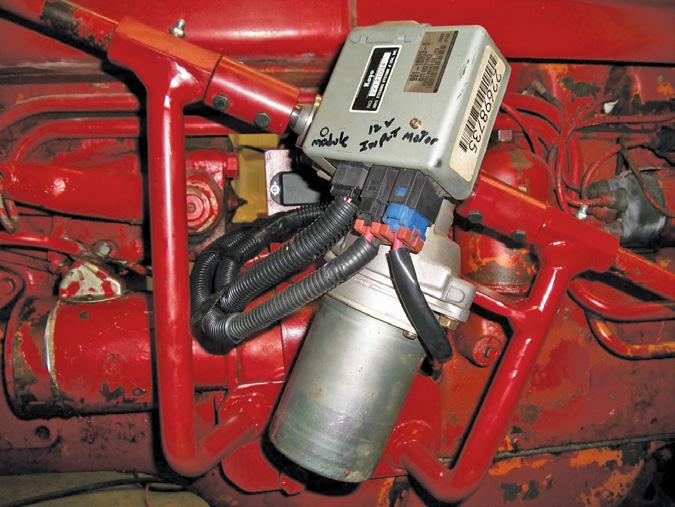
units have a through shaft input and output that allows manual steering without the electric assist working. The square box is the unit’s control center, receiving 12 volt battery input and 12 volt output to the steering motor (the round unit). It also (on its third plug terminal) receives signals from the car’s main computer, giving the unit its direction to steer, and how much steering assist is needed. For instance, you would need more steering assistance when the tractor is not in motion than when it is. Again, the idea behind these 12 volt systems is the same as any hydraulic assisted unit. It is meant to reduce the amount of steering wheel effort needed to turn the wheels. These systems use a reversible electric motor to provide assist rather than hydraulic pressure. This system is more efficient because it only needs to provide assist when the wheel is turned, rather than rotating a pump constantly. The square control box on the unit has three plugin terminals, as one can see. One is a 12 volt input, one is a 12 volt to the motor, and one is input signals from the auto’s computer or ECM.
The first two terminals are simple to see and understand, but what about the plug-in terminal from the ECM? What do we do with this one? Obviously, one does not get the car’s ECM with the steering gear, and I am told that even if you did, it would be nearly impossible to get the computer to activate and control just the steering gear. If you were a computer genius of this magnitude, the computer would
Photo 1
just “fail-safe” itself, and shut down for lack of sensor readings from the car. But still…we need computer signals to ACTIVATE this thing. Now what do we do?
Again, before you throw the magazine in your recycle bin, read on a bit farther. It seems that there are electronic folks who have addressed this problem for us. Further research— we found that there are several entities
out there that are making a kit for these units to take the place of what the car’s computer did. Another $48 landed us two little pieces that are supposed to do the job; Photo 2 shows a small black box (smaller than a deck of cards), and a little dial switch called a potentiometer that, when hooked together and activated with 12 volts, then plugged into the control box’s computer terminal is supposed to make the whole thing work. The dial potentiometer is used to manually set how much steering assist the unit will provide by just turning the knob.
Here then (Photo 3) is the unit powered up with 12 volts, and the control unit plugged in. The unit is almost silent in operation and the results were very impressive. Turn-
ing the potentiometer dial up a few clicks, the assist response was greatly increased. It’s a GO! All I had around here right now for old tractors to put this thing on was a Farmall “A” with a belly mower. It has a section of open steering shaft exposed and it was easy to mount the unit in this area (Photo 4).
There are a few more do’s and don’ts that need to be mentioned to complete a successful installation for one of these units. They only weigh about 10 pounds, but how it is mounted is important. I need to mount the unit, its final electrical connections, and make a small simple dash for the control module and the red dial. I am anxious to get this thing on the tractor and working, so some of my other projects are being put on the “backburner.” We have since learned that many models of the GM’s Equinox SUVs also use these steering units. I want to snare me one of those and get IT ready to retro fit in my Chevelle. Anyway, now it’s time to mount the thing to a tractor and hook it up to 12 volts, add the control box and potentiometer, and see if the unit will power steer a tractor. My apologies to all of you “GREEN only” Deere fanatics that I had to use a red tractor for my first project, but that’s all I had around here at the time to work with. However, any tractor with one foot of exposed steering and a 12 volt negative ground electrical system would qualify to be adapted. So, for now, go to your desk drawer and get out those green colored glasses to finish reading our results, and just imagine this being a part of your own green tractor.
The project has been a hotbed of interest to a lot of people who have
spotted the strange looking object pinched in a bench vise in my shop. Many of them have said, “Let me know how this turns out on the tractor.” And so it is with my pal Jeff (I’ve spoken of him many times; I call him the “metal whisperer”). Jeff helped me with the mounting of the power steering unit to the tractor. Jeff always “over builds” and over thinks everything, and then makes the metal works look like they came from the factory that way. What else would one expect from a guy whose motto is, “If man made it, man can duplicate it.”


This project was an “inspiration” for me from Jo Anne, who has long hinted that our little tractor with its belly mower would be much improved if it steered easier. The next step for us…on to digging, research, and reading. The end result of the project and mounting to a tractor is … it works better than I had even hoped it would! The tractor steers effortlessly with one finger, and can be adjusted for the tractor’s steering effort at any time. Photo 5 shows the mounting base plate bolted to the bell housing of the tractor. There are two upright steering shaft supports coming from the base plate. The rear support (Photo 6) pilots the steering shaft into the ESU
Photo 2
Photo 3
Photo 4
Photo 5 • Photo 6, below
(electric steering unit) and is bushed and “greaseable.”
Forward of that is the first coupling that connects the steering shaft to the ESU, and is fastened with “grade 8” bolts (Photo 7). The forward
mount supports the front portion of the tractor’s steering shaft and is bushed and coupled in the same way as the rear mount. The forward mount also includes the bracket for the ESU’s mount. The ESU is mounted from its original bracket with a through bolt as it came from the car. This type of mounting allows the ESU to be free of side thrust and sort of floats in between the two shafts. This is one of a few mounting suggestions that we have come across. Now as you can see on the unit’s input box, there are three electric connections (Photo 8): module input, 12 volt power input, and power to the steering motor. The motor input is part of the unit and comes with it. The center terminal is 12 volt input power, and if you talk nicely to your salvage yard attendant when you purchase one of these units, ask him to cut these wires leaving a length for
you to work with along with the snap connector into the ESU box.
The third item is the module terminal connector from your outsourced control box and potentiometer. This makes the unit come to life. The mount for these pieces is an extension of the bell housing mounting plate. It simply extends up from the lower base plate and allows a neat place for the control box and the dial to be mounted and also grounded (Photo 9). The little black box then needs a 12 volt switched input wire, and then connected to the potentiometer. That’s it! It’s easier to hook up than one would think. If I can do it, so can you.
As for the little red button that turns back and forth, its purpose is to provide the proper amount of steering assistance needed to make YOUR tractor steer as easy as you desire. I have found that for this tractor, the steering effort is best with the dial set about halfway in its range. Turning the dial all the way UP tends to over steer the tractor, and all the way DOWN requires too much steering effort. It’s a fun thing to play with and dial to make the tractor steer just the way you want it to. These two control units are mounted under the tractor’s gas tank and hood for a reason; it is recommended that they not be mounted out in the weather, but also not be put in an enclosed box for fear of their heat build-up.
By the way, what is a variable potentiometer? It is a resistor with a sliding or rotating contact that forms an adjustable voltage divider. Another explanation is…it acts as a variable
resistor or rheostat. I guess what we are doing when we install this thing into the circuit is varying the input voltage to cause more or less steering assist. Again, the unit works like a champ, and when all is said and done, we have a grand total of less than $200 invested in the whole “shebang.”
Regarding the tractor’s 12 volt negative ground charge system needed for these units, there are a few things that must be addressed to power these things and keep them working—one is that they are vulnerable to charge system spikes in the voltage. Our beloved Delco 10-SI alternators set up with one-wire charging tend to do this. Anyone that has these alternators will note that on start-up, they will bury the ammeter in charge rate until the proper voltage is reached. This type of spike voltage will harm the power steering module… we don’t want that, do we? This can be safeguarded easily with restrictor diodes on the module’s input wire, or by using a generator or alternator with a conventional voltage regulator. I have not yet decided which way I will go on this tractor’s charge system to accommodate the ESU. I guess that I will install the recommended input wire diodes for now, and possibly use a 12 volt generator or a compatible alternator as time goes on.
It’s nice to have the tractor on 12 volts now as it turns over and starts so much easier. And the ESU makes the tractor much more “user friendly,” just ask Jo Anne.
**2025 UPDATE: One final note…with our use of this unit over the past years is that they need a voltage operating range low of 11 volts to a high of 14 volts or the unit tends to fail-safe itself and return to manual steering. Whatever charge system you use must provide voltage in that range while the system is in operation.
Until we meet again, God bless you and Happy Thanksgiving. This column is written by Ron and Jo Anne O’Neill.
Photo 7 • Photo 8, below
Photo 9
When I was a kid, my grandmother was a cook at the Arcady Inn restaurant in my hometown of Oklee, Minnesota. They did not just take short orders but also had a buffet line on certain days. They called it “The Smorgasbord”! If you are not familiar, a smorgasbord is a luncheon or supper buffet offering a variety of food and dishes. Well, this month I think we have quite a smorgasbord of auction results Before we get into the auction results, I have to mention what I call a bit of good fortune. I met a neighbor at the gas station in town and he said, “Would you be interested in a few old John Deeres?” He explained his uncle had a few tractors on his place but his uncle passed away. What do you think? So I went over to take a look. The tractors were comprised of a 1937 “A” with a No. 5 mower behind it, a 1942 “A” that was partially restored before the owner passed away, and a 1950 “G,” flatback, with an add on wide front that was made by a machine shop in Grafton, North Dakota. The

“A’s” were loose but the “G” was stuck. He said, “What will you give for them?”
I kind of stammered a bit, trying to figure out a good price. He then quoted me a price. I ran to the pickup and grabbed the checkbook and wrote out a check for all three. As I am writing, they are not home yet but hopefully next week they will be in the yard. I didn’t really need three more projects but I couldn’t resist. My wife thought I got a great deal!?$#?#$*
I have been eyeing an 820 that a friend has for sale so when I do see an 820 or 830 come up for sale, I have to take a good look! The Roger and Joann Hansen Collector Tractor
and Vehicle Auction, conducted by JJ Wise Auctioneering of Kanawha, Iowa, recently sold one of those nice 820 tractors. It was a 1957 John Deere 820 diesel, serial number 8202595, showing six hours since restoration. It has pony start, rear wheel weights and one hydraulic remote. This great looking 820 brought $8,700. Pifer Auctions held the Woell Estate Equipment Auction near Casselton, North Dakota. At this sale, I found an 830 John Deere with a running pony motor.

This 830 has single hydraulics and rear wheel weights. I called the auctioneer and he stated they had been driving it around prior to the sale. This running and driving 830 diesel, showing 2,253 hours, sold for a final bid of $8,750. As long as we started with some big John Deere standard two cylinder tractors, let’s talk about a newer beast. The Woell sale near Cassleton also had for sale a big model 6030 tractor, serial number B313R-036223R. The tractor showed 5,601 hours and featured a side console, two hydraulic remotes, 1000 PTO, Syncro transmission, factory cab with factory air conditioning. Rear tires
are 24.5 by 32 with inner and outer weights and duals. You would have had to exceed a bid of $26,000 to become owner of this big 6030.
The Kanawha, Iowa sale gave us a 5020 John Deere to look at. The serial number is 14814 and the tach showed 1,257 hours. It has inner rear wheel weights and two hydraulic remotes and commanded a nice selling price of $17,250.
I kept a close watch on a sale in Cloquet, Minnesota—a sale with about 500 tractors, yes—500 tractors. A few were runners, several were listed as “will run” and the overwhelming majority were, I guess you could say, parts tractors. It was the Johnson Implement, Kim Johnson owner sale, conducted by Ziemer/ Holbrands Auctioneers. A few of the “runners” happened to be standard tread tractors. First was a 1959 730 gas
standard with power steering, serial number 7305051. It had decent paint, tin, and tires and sold for a high bid of $4,100.
This wasn’t the only 730 gas stan-
dard—next a 1958 model equipped the same with a more aged, shall we say “original,” patina. This one sold for $4,000.
We’ll move to a 630 John Deere standard. The serial number is 6314427, making it a 1960 model. Nice paint and tin and equipped with power steering, the 630 standard brought in a bid of $4,800.
The Woell Auction in Casselton, North Dakota had a nice little “M” John Deere restored and painted, and in running and driving condition. The gavel fell at $3,500 on this little “M” tractor. The Hanson Collector Sale in Kanawha, Iowa gave us a few more two cylinder tractors.
First, a 1950 “MC” crawler, serial number 12945. It shows 1,345 hours, has rear PTO, one hydraulic remote,
and front blade. Someone got a deal as it sold for $2,500.
The Hanson Auction also produced a 1952 “G” John Deere, serial
number 62625. The “G” has PowrTrol and PTO with a narrow front! You would have had to exceed a top bid of $4,800 to own this one.
The last two cylinder I will mention from the Hanson sale is a 1959 630 LP tractor. The hour meter shows 3,120 hours with narrow front, power steering, three-point, and a single hydraulic remote. $3,900 brought this 630 to a new home.
May as well throw in another “G.” The Johnson sale in Cloquet,
Minnesota had many “Gs” (so I loved that)! One was a 1952 model with serial number 61887.This one had a wide front, rockshaft and PowrTrol. It was one of the tractors advertised as “will run!” SOLD for $3,700!
Now let’s move to Leduc, Alberta, Canada. There were many tractors at the Norman Balzer Sale, conducted by Ritchie Bros. Auctions. I am going highlight a couple of “Ds.” First a 1953
Streeter tractor. This one has 7.50x18 fronts and 16.9x30 rears as well as being equipped with a PTO. More than one person wanted this one because the bidding did not stop until the gavel finally dropped at $26,000 (Canadian)!
The next “D” is a 1944 model similarly equipped, this one selling for $5,500 (Canadian).
Another little gem from Canada was a 1938 John Deere “L,” which was made from 1937 to 1946. It was rated at 10 horsepower. This one has 4.00x15 tires on the front and 7.50x20 on the rear. Back in 1946, you could own a model “L” for a price of $517. Today apparently it would have taken $8,500 (Canadian) to buy!
We will conclude this month with a nice John Deere 1972 model 4320 diesel. Serial number on this one is T613R025012R. It shows just 17 hours since it was restored. It
has side console, three hydraulic remotes, three-point hitch, quick hitch, and front weights. What do you think? This 4320 brought a top bid of $22,750!
Another really fun month of research done. I hope you enjoyed reading about some of these auction finds and, as always, please let me know if something comes up at a sale that you find interesting. Email me a message at mickelsonauctions@gmail. com. Happy auctioning!
Email Eric W. Mickelson at mickelsonauctions@gmail.com
Magneto faces off against rain gauge
Would you pay more for an old Splitdorf magneto from a 1929 model “D” or for a 1950s’ vintage rain gauge? That’s what we’re looking at for What Brought More? this month. Both of these are in good shape. The seller for the magneto says it is complete, but that he did not test it for spark, so the buyer has to leave a bit up to chance. The rain gauge has a couple of spots of corrosion on the back, but the front looks nearly spotless. This rain gauge still has the original box, which is not in very good shape, but it did its job of protecting the gauge. The rain gauge
is on yellow-painted tin with green print. It includes the name and phone number of Reliable Implement from Marshalltown, Iowa and the “Quality Farm Equipment” trademark. Which of these do you think fetched a higher price after their time on eBay? Find out at the end of the article.
A cute little keychain from Deere’s fertilizer department hit eBay this month. The John Deere Chemical Company of Tulsa, Oklahoma is advertised on this little yellow and green plastic fob. There is a little wear in the paint on one side of the fob, but it is in remarkably good condition for a 60-year-old piece of plastic that typically hangs out in close proximity to loose steel in a pocket. There were 15 bids placed for this little item, and in the end, the seller got it for $55.
Did you know that the first world record for top speed on a bicycle was 60 miles per hour, set in 1899? A man named Charles Murphy chased a locomotive on his bike, riding on a track of boards set out across the railroad ties. The engine provided Murphy with clean air to ride into, since wind resistance was a major
limiting factor to his speed. The record stood until the 1940s. Perhaps that record was the inspiration for Deere to make the top speed on their bicycle speedometer. Someone sold a new old stock speedometer on eBay this month. It was sold in the packaging with all of the parts and the instructions included. The box had some paint loss, but all of the parts looked to be in like-new condition. It sold for $199.99. I wonder what the fastest speed is that anyone has ever gone on a John Deere bicycle.
You may recall that last month featured a bunch of lawn and garden tractor items. Well, more good news if you like those little machines, because we’ve found a few more items for this month’s article. First is an eight-ounce can of transmission oil for a Deere lawn and garden tractor. The can is still sealed and full and in very good shape with
just a few blemishes. It’s painted in black and yellow and would make a nice little display piece. It was bought for $86.
There were also two headlight bezels/surrounds for lawn and garden tractors. These should fit your 110-140 tractor. Both were in good shape, a
little faded, perhaps, but not cracked or broken at all. The decals at the center of each were a little worn out and would need to be replaced. Headlights were included, and the sellers said that they lit up. These sold for $195 and $295. Why the big disparity? Well, the second one came with the wiring for the lights, was perhaps a little less faded, and the decal was slightly more intact.
I’m not sure if this postcard was made to celebrate the John Deere dealer
in town or the little village of Taylor, Nebraska itself. The sender of the postcard dated it March 1912, so I suppose the photo was taken in the year or two before that. Pictured are about 10 horse drawn manure spreaders being delivered to the dealership. It must have been a big day in the little town of about 250 residents. The postcard was used, had been mailed, and suffered a couple of roughened corners in the process, but considering it’s been around for over 110 years since then, it’s doing pretty well. It sold for $45.
Deere wrenches bring big money on eBay; we see them quite often, but I
don’t believe that this article has ever before featured a brochure for their wrenches. This month, we have one from 1973. It’s just a small brochure of six pages, but it’s in very good condition. It sold for $48.
After the brochure, we might as well talk about the real thing. A seller had a full set of Deere combination wrenches. This was the 14-piece set of wrenches with sizes from 3/8 inch to 1-1/4 inch. A previous owner had etched his initials into them, but they
were later ground off, which was basically the only blemish on these wrenches. They were listed at $1,350, but the seller accepted a best offer, so the actual final price is unknown.
Want to know what everything would have cost a farmer in 1969? The
John Deere Agricultural Sales Manual will tell you. This manual features all of Deere’s available implements at the time, their options, and what it all would cost so that a dealer could work through an order with a customer. The manual is faded, and you can tell that the pages have been riffled through many times, but it’s straight and clean overall. It sold for $475.
If you want to get even deeper into things, you could also get the John Deere Parts Sales Manual. This manual was not as much of a reference as it was a book full of ad copy. It contained information much like that one would expect to see in a brochure for a part. These books educated the salesman so that, hoping to land a sale, he could explain the benefits of Deere parts to a customer. Included are photos and explanations of the manufacturing
process of some of Deere’s parts and photos of a few model parts departments to illustrate just how nice the one at your shop could be. The condition of the manual was very good. The pages were clean and bright. It appeared that there may have been some slight staining on the cover, but even that was minor. It brought $750.
Back, now, to What Brought More? Clever readers will recognize the magneto that sold here as a model that was only used on model “D” tractors for a period during 1929.
While that time frame is short, they were still put on over 13,000 tractors. Still, this means that the market for this part is pretty narrow, and we have no way of knowing for certain if it needs to be rebuilt or is ready to jump into service. What we do know is that it sold for $255. The rain gauge is quite a nice one and,
unlike the magneto, we can be pretty certain that this is going to work. The good condition and the classic look brought a good price to this rain gauge, and it beat out the magneto with a $315 final bid.
See something interesting on eBay? Forward it to sawitonebay@ yahoo.com
Excellent reproduction TOOL BOXES
thru 730D
ALSO: New Generation tool boxes
Dillner's Tractors
• GP, D & LA brake linings
• Carburetor rebuilding
• H773R dust shields
• Clutch brake pads
• Governor springs
BOB DILLNER
973 Corley Rd. • Manns Choice, PA 15550 814-733-4397 www.dillnerstractors.com
For Sale
1982 John Deere 440 Trailfire LX snowmobile. Make an offer. Contact Walt, 970688-0284. CO
THREE PIECE FRONT WEIGHTS for JD 520-730. Good reproduction. U.S. made. $1000. Also numbers 4, 5 and 6 are available, $350 each. Detwiler Tractor Parts, Spencer, WI. Call 715-659-4174, 715-6594252 or 715-659-4525 (office) 9-5 M-F. H6X
Rates: 50¢ per word, minimum charge $5 classifieds limited to 200 words ($100)
Photos: $40 per photo 2-1/4 inches wide or $20 per photo 1-1/4 inches wide
Discounts: 10% off for any ad running in three issues. No material changes allowed; payment must accompany ad
Classified & display ad info
•Green Magazine is mailed about the first of each month.
•Only John Deere items will be advertised.
•Positioning of ads is at publisher’s discretion.
•Green Magazine will not print any ads which it considers to be:
•offensive or proven to be dishonest;
•from competing publications or organizations
Phone 402-643-6269
Email: info@greenmagazine.com
Website: www.greenmagazine.com
Mailing address: Green Magazine, PO Box 95, Bee, NE 68314-0095
6212 N.W. Bell Road Parkville, MO 64152
1949 JD B, SN 249501, fresh overhaul with .090 over aluminum pistons. 1952 JD 60, SN 6004375. 1954 JD 60, SN 6031413. No 3-pt on the 60s. Sheet metal good on all tractors, tires good, all tractors run excellent. $2800 each. Phone 563-249-1780. Northern Illinois.
Used John Deere two-cylinder tractor parts. Wide variety. Also, some New Generation parts. 30 years’ experience. Call or text Darwin Gingerich, 620-386-0071. KS
display ad Rates
Full page: 7-1/4” x 9-1/2”
$800
Includes full color • Limit 800 words
Half page: 7-1/4” x 4-1/2” $450
Includes full color • Limit 400 words
Quarter page: 3-1/2” x 4-1/2” ... $250 Includes full color • Limit 200 words
Business card: 2” x 3-1/2” $125 Includes full color • Limit 100 words
2 column inch: 1/12th pg. ............. $85 Includes full color • Limit 40 words
Bordered ads: per column inch $30
Full color, add $25 per photo
Limit 20 words per column inch
Crawler parts: Lavoy Wilcox
Steering clutch parts, brake bands, bearings, final drive gears, engine kits, carb kits, radiators, fans, water pumps, battery sheet metal, seat
JD 60, sheet metal, paint and tires good, runs good, $2000 OBO. Three JD 80 carts, all in good condition, $300 each OBO. JD 1B hand corn sheller, original condition, $250 OBO. JD gear reduction for hit and miss engine, $300 OBO. All items stored in barn, not outside. Ph. 740-504-2027. OH
1951 B, starts and runs good, new tires, paint, seat, decals, no dents in the grill, parade ready, $2200 OBO. Ph. 712-2091916. IA
Payment
• All ads are to be paid in advance. Ads sent without payment and needing to be billed will be assessed a $4.00 service charge.
• Classified ads will be taken over the phone, if accompanied by a credit card payment. We are not responsible for errors in ads taken over the phone or for illegible ads received in mail. Display ads will not be taken over the phone.
• We do not send checking copies or tearsheets. Send $6.00 extra for a copy of the issue in which your ad appears.
Discounts
1) 10% discount - for any ad running in three consecutive issues. No material changes allowed. Payment for entire ad run should accompany ad.
2) 5% discount for camera ready - ad must be typeset, clear and at the proper size.
3) 5% cash discount - payment in full by check, without being billed.
Word limits
When preparing display ads, please take note of the word limits. We can place only so many words into a given area and still make a readable ad. If ads exceed word limits, advertiser will be billed for extra space.
1936 DI, rebuilt with NOS parts, has all the parts, needs paint. Ph. 417-425-3202. MO. K2X
JD model 720 standard, diesel. electric start. One of 133 built, outstanding paint, fresh overhaul. All new tires, adjustable wide front, one set hydraulics, four sets rear weights, nose weights, new batteries. SN 7227293. $17,500. Robert: 970-301-6294. Colorado.
1967 John Deere 95EB combine, always stored inside, everything works as it should. Ph. 716-983-6232. NY
New Generation fuel gauges for 10 and early 20 series tractors, negative or positive ground, comes with new fuel tank sending unit, $160 for set. All our New Generation gauges fit in dash without modifications to the clamp bracket. Also have temperature and pressure gauges for same tractors. EverGreen Restoration, 715-520-7876; www. evergreengauges.com. WI F3X
John Deere 730 diesel, wide front, comfort ride seat, 2-pt, LPTO, PS, flat top fenders, electric start, no dents, $15,000. No texting. Ph. 330-806-0145. OH
Accepting best offer over $500 for newin-original box: 60-620 float ride seat. Part number AR20346R. Ph. 814-648-0018. PA
Two Cylinder Diesel Fuel Systems - Stock
& Modified
•• Transfer Pump Gears •• Also: Bosch 14mm Barrels & Plungers
• Bendix 13.5mm Barrels & Plungers • Bosch & Bendix Injector Tips • New with Increased Flow
• Injector Springs • Needle & Guides
• Many Obsolete Parts 970-554-2108 hendrichfarmtractors.com
Carr’s Repair: JD R and 730/830D overbore piston kits. Ph. 807-487-2548. International Falls, MN. No Sunday calls. Website: www. carrsrepairvintageparts.com (I3X)
FM 1262 • Gruver, TX 79040 johnreedtractorparts@yahoo.com
“H” GOV BEARINGS
Fits H, R, 80, 820/830: $45.00 plus S/H
SHEET METAL BOLT SETS
Early styled tractors (pan seated models) A, B hand start • A, B long hood • G, GM & H $35.00 plus S/H
John Reed Antique
Tractor Parts
RADIATOR BOLT SETS
Unstyled tractors: $45.00
Styled A, B, G and H + 50, 60 & 70: $40.00 520-up: $30.00 • plus S/H
We specialize in JD model H tractor parts— new, used and reproduction THOUSANDS of model H parts!
Reproduced aluminum WARNING PLATES for 3-pt. Quick Hitches. Motorola alternator and amp regulator plates, 35-55-72 amp. Hydraulic cylinder stop pins with chains, spring steel clip, like original, three sizes – 3/8,” 7/16” and ½.” Ph. 712-660-8447 cell. IA K3X
1958 520, SN 5210537, loaded with extras, Roll-O-Matic, factory 3 piece front weights, 3 sets factory rear wheel weights, factory 3-pt with toplink, P/S, live PTO, black dash with cig lighter, good seat with armrests. Like new tires, older complete restore, good mechanical and paint. Ready for parade, show or work. Always kept inside, $8500. Many more for sale. Ph. 270-253-2615. KY
John Deere 430T, front weights, PS, LPTO, Touch-O-Matic, fenders, 3-pt, adjustable seat, great rubber, $6950. No texting. Ph. 330-806-0145. OH
Have lots of model R and model D parts. And some other models as well, all John Deere. Call Dale. Ph 785-821-2600. KS I3X
Fuel gauges for John Deere 2 cylinders with original face. Six or 12 volt positive and negative ground comes with new fuel tank sending unit. $135 for the set. See our ¼ page display ad for other gauges. EverGreen Restoration, 715-520-7876; www.evergreengauges.com WI D3X
We have clutch covers, grill screens, manifolds, battery boxes, water pumps, steering wheels and more, plus a yard full of used 2 cylinder parts tractors. Over 25 years of experience. We also have battery boxes, grills, steering wheels and other parts for New Generation tractors. Call Shepard's Tractor Parts, 715-928-1039 (cell) or 715265-4988. WI
730 final drive with extra long axles, 112” tread. Can be used to install axle mount duals. Martin Parts, 574-598-6083. J2X IN
1951 JD R, starts and runs good, painted, very slight oil leaks, $8500 OBO, must sell. Ph. 440-632-0331. OH K2X
Parting out A, B, G, H, 50, 60, 70, 520820, 530-730, 2510, 3010, 4010, 3020 and 4020. John Brawner, phone 270-799-1883. KY I3X
• Two Cylinder diesels—our speCialTy
• CompleTe Two Cylinder diesel
• Fuel injeCTion repair and CalibraTion
• Cylinder bloCk boring up To 8”
for
• 2 cyl. & later JD air cleaner conversions, Lindeman through 430C trunion bushings • 70-830 diesel piston kits in stock, STD, .045, .090, .125 os
1937 D, museum quality, every nut, bolt, bearing etc. has been turned or replaced. Has a PTO and hitch. I am just getting too old to spin the starting wheel. Hate to see it go. Nearly $20,000 invested, asking $12,500. Ph. 803-351-5600. SC
Antique corn binder in working order, $1000. Ph. 269-832-6058. MI E3X
Two 1953 John Deere 40s, both in good running condition. Both have 3-point and one has new rear tires. Will sell separately or as a pair. Call early mornings or after 6 PM. Ph. 563-212-3809 (no text). IA K3X
1959 JD 730 diesel, electric start, 38” tires, new paint, $10,800. Ph. 574536-1510. IN
1961 JD 840 John Deere scraper. Two-cylinder diesel, everything runs as it should, asking 20,500 OBO. Video available. Ph. 781-540-1278. MA
1939 B, SN 60741, complete, very correct restoration. Factory flat spoke rears, all new rubber, two spare Wico AP477B magnetos, $5500. No. 52, 2x12 plow, rope trip on factory spoke rubber, complete restoration with many new wear parts, coulters and jointers, new rubber, $2700. Text or call: 618-550-3131. IL
420W w/blade, owned 50+ years, starts and works well, serviceable blade, hydraulics good, tires 60%, new battery, sheet metal good, can work or restore it, best offer. Ph. 608-732-6518. MI
John Deere 730 gas, 3-pt, cushion ride seat, flat top fenders, PS, LPTO, excellent tires, excellent paint and no dents, $12,000. Please call me with questions or interest. No texting. Ph. 330-806-0145. OH
Berry Cam Service: For your 2, 4 and 6 cylinder camshafts, stock or antique pullers. Ph. 320-395-2377. Location: 2466 Gabler Ave SE, Buffalo, MN 55313. G12X
For John Deere 45 combine. Bean head for parts. $150. 55 combine quick attach feederhouse. Ph. 260-517-8492. IN J2X
Piston ring sets: A, B, D, G, GP, H. D 6-1/2” std., .045, .090. D 6-3/4” std., .045, .090, .125. G 6-1/8” std., .045, .090, .125. Piston kits for most two cylinder JD. ALSO AVAILABLE: Two cylinder tractor parts; valves, guides and valve springs; 2 and 4 cylinder pony motor parts; injector tubes OEM, AF3190R; brass push rod tubes, $28; oversized wrist pins. H&J Machining, 701-652-3289 (NDE3X alt), www.handjmachining.com or racinghenry@hotmail.com
New and used John Deere small square baler parts. Knotter rebuilding service. Our free catalog makes it easy to figure out what your baler needs. Call Finger Lakes Equipment, 585-526-6705. NY C12X
Crankshaft for late 4020 gas cast #R40730, $600. Parting out 3010 diesel, 70 diesel and 620. Ph. 641-228-4282. IA F6X
New Generation seat extended brackets, 4 inches longer than stock, not painted, 4 piece set, $125. ALSO: Axle wedge removal tool, 530-4620, three sizes, $270 each. Brett, 402429-5311. NE I3X
Automatic release brake locks for two cylinders. Parts: 420W, 50 and 630 RC; 520-630 LP and A-730: air stacks, 3-points. Hose and breakaway kits for dual hydraulics 520-730; also Behlen overdrives, round spokes and lugs. 800/801 hitches and parts. Aftermarket parts. Heavy duty RollO-Matic for 4010. 820, 825 rollover plows and plow parts. Marlin Smith, Pine Valley Farm Equipment. Ph. 712-579-9922. IA J3X
Electric starter kit for 70/720/730. Includes 12 volt starter, bracket, alternator and brackets, engine cover, breather standpipe, plug and caps for water ports, $1325. Kit for 80/820/830, $1395. Battery box now available. Free shipping. Also battery cable kit now available. Ph. 717-445-9465. PA J3X
Carburetor, water pump, distributor rebuilding. Farmers Service Incorporated. Ph. 330-482-4180, www.farmersserviceinc. com OH F6X
Recovering original tractor steering wheels for 14, 15 and 17” three spoke flat or round wheels, $95; 19” four spoke wheels, $110. Please send your core or call for information. EverGreen Restoration, W7619 Walnut Dr., Spooner, WI 54801. Ph. 715-520-7876. Made in USA. WI F3X
Buddy seat! For 20 and 30 series two cylinders. Will fit float ride seat or bat box. Looks like the original buddy seat! $495 plus S/H, includes cushions. Ph. 260-901-3076. Callaway Restorations, IN. H3X
JD 110 mower, tractor good, bad mower, $425. 8-foot JD digger, hydraulic lift, excellent shape, $450. JD horse drawn sickle mower in decent condition, $300. Call or text for pictures or more information. Ph. 920-428-4311. WI K3X
New parts for L, LA and LI. Bases, propeller shaft guards and shield assemblies. Leave message and phone number, will call you back. Ron Brungart, cell 570-6604573. PA J3X
JD LA tractor, solid, running, electric start, clean, Midwest area preferred. Ph. 316-2047059. KS J2X
Many magnetos and carburetors ready to go! Many makes and models. We will also fix yours! Just call EZ Tractor Shop, ask for Eldon, phone 785-332-5482. KS I3X
DUBUQUE TRACTOR PARTS - top links, hood bolts, wheel bolts, front and rear, PTO shields, tie rods. Ph. 217-502-4504, email shinola@royell.org IL F6X
John Deere tractor repairs and restoration. Specializing in John Deere 2 cylinder, New Gen and Gen II tractors, all models welcome. New and used parts for JD 2 cylinder tractors. Ph. 717-940-1303. Christiana, PA. F6X
Currently parting out styled and unstyled A, AR, styled and unstyled B, styled and unstyled D, G,H, R, 40, 50, 60, 70 gas, 80, 420, 720, 820, 840, 1010, 2010, 3010, 4010, 3020, 4020 and 2030. Countryside Tractor, 618-731-6625. IL K3X
CHRISTMAS GIFTS: Many NIB JD trains and Precision toys; good prices! 1999-2012 pewter ornaments in black bag; $10-$40. Email dclorenz@yahoo.com or text 573380-7715. MO K3X
WIRING HARNESSES, battery cables and spark plug wires made to order for restoration or repair. Covering models from the 1930s to the 1980s. Electrical parts including: switches, regulators, lights, relays, alternators. Wiring harness repair/ rebuild service. Worldwide shipping. See our display ad in this issue. Call or email for a free catalog. Agri-Services, 13899 North Road, Alden, NY 14004. Ph. Website: www. wiringharnesses.com. Email: agriserv@ rochester.rr.com. J3X
ELECTRIC STARTER KIT for R, includes 12 volt starter, bracket with battery box, breather, water manifold, water pipe. Alternator with top and bottom brackets, mounting hardware and battery cables. $1625. Free shipping. Ph. 717-445-9465. PA J3X
#47 snowblower for a X750 JD, Quik-Tatch front, soft side cab and chains. 20 HP Kohler engine off a JD 400 with 218 hours. JD generator, front mount for a 400 JD, model GB, SN 7500SDV. Ph. 904-755-1763. WI J2X
PARTS AND DECKS for older Deeres. 110, 140, 200s, 300s, 400s and over 150 lawn tractors for sale. Ph. 219-942-2242, website: tractorsalesandparts.com. IN H6X
Parting out JD M-MT-40-420-430 and A-B50-60-70 tractors. Call us for new, used and reproduction/replacement 2 cylinder parts. John Shepard, 715-265-4988. WI
Scott’s Tractor Restoration, 14025 Haumesser Road, Shabbona, IL 60550. We offer complete restoration and mechanical repair on all makes and models of tractors. Showroom quality. Ph. 815-762-0851, website: www.scottstractorrestoration.com or email: twocylindersh@aol.com. A12X
Panels for 2520 tractor AR38838-AR38839, AR38524-AR38525. Ph. 507-920-9181 (MN I3X), dave@haalaproperties.com
FOR SALE: Hubs for taper-lock JD flywheels. Also new old stock JD tractors and machinery bearings and high-speed gears for tractor rides. Ph. 701-942-3102. ND I3X
We have parts for your 45 combine! www.45combineparts.com. Ph. 417-2592520. MO G6X
6-3/4” standard sized block for a JD D, #D962R, fits a ‘28, ‘29, and ‘30 D, pressure washed, pressure tested and honed. Call Dale. Ph 785-821-2600. KS I3X
New and used parts for JD two cylinder tractors and crawlers and some NOS parts. Models A, B, D, G, H, LA, M, 40, 50, 60, 70, 70D, 440, 520, 620, 720D, 530, 630, 730, etc. A&L Parts, 315-536-0543. NY C12X
Large inventory of good used two cylinder parts. Call for parts needed - casting numbers and/or parts numbers appreciated when you call. Detwiler Tractor Parts, Spencer, WI. Ph. 715-659-4174 or 715-6594252 weekdays 9-5. I3X
New and used JD two cylinder parts. Specializing in H, M, MT, 40, 420, 430, GP, 800 and 801 3-points and parts. Also: See my eBay store for specials and NOS parts. Some NOS parts, many reproduction parts. Dave Cook Tractor Parts, 715-373-2092. Morning calls are BEST. WI H6X
Taper-Loc flywheels. We manufacture and sell the original Allen Machine Works flywheels and supply hubs for the same. Also rebuild options available. Ph. 717445-9465. PA J3X
1950 styled AR, many unstyled G parts. 70 diesel just fresh in! Parting out: 70 gas burner, 630, good tin; styled G, also H. Parts for unstyled A, B, GP, D. Styled A, B, D, G, 50, 60, 520 and 620. Some R parts. Call Larry Frederick, 308-520-7416. NE L6X
Canopies for JD 3020, 4020, etc. Powder coated yellow. $1135. Quantity discounts. Ships truck freight. Nelson Horning, 585526-6705. NY C12X
Toys, Books, Manuals & Videos
TRACTOR MANUALS AND LITERATURE, large selection, ag, industrial, L&G. Jim Robinett, 5141 Kimball Road, Ontario, OR 97914. Ph. 206-713-3441, send email: tractrmnul@aol.com. OR C12X
Wanted &
Announcements
Wanted: Exhaust pipe for a 1931 model D. Ph. 320-587-7068. MN
Wanted: John Deere 212 garden tractor. Ph. 717-738-4157. PA
